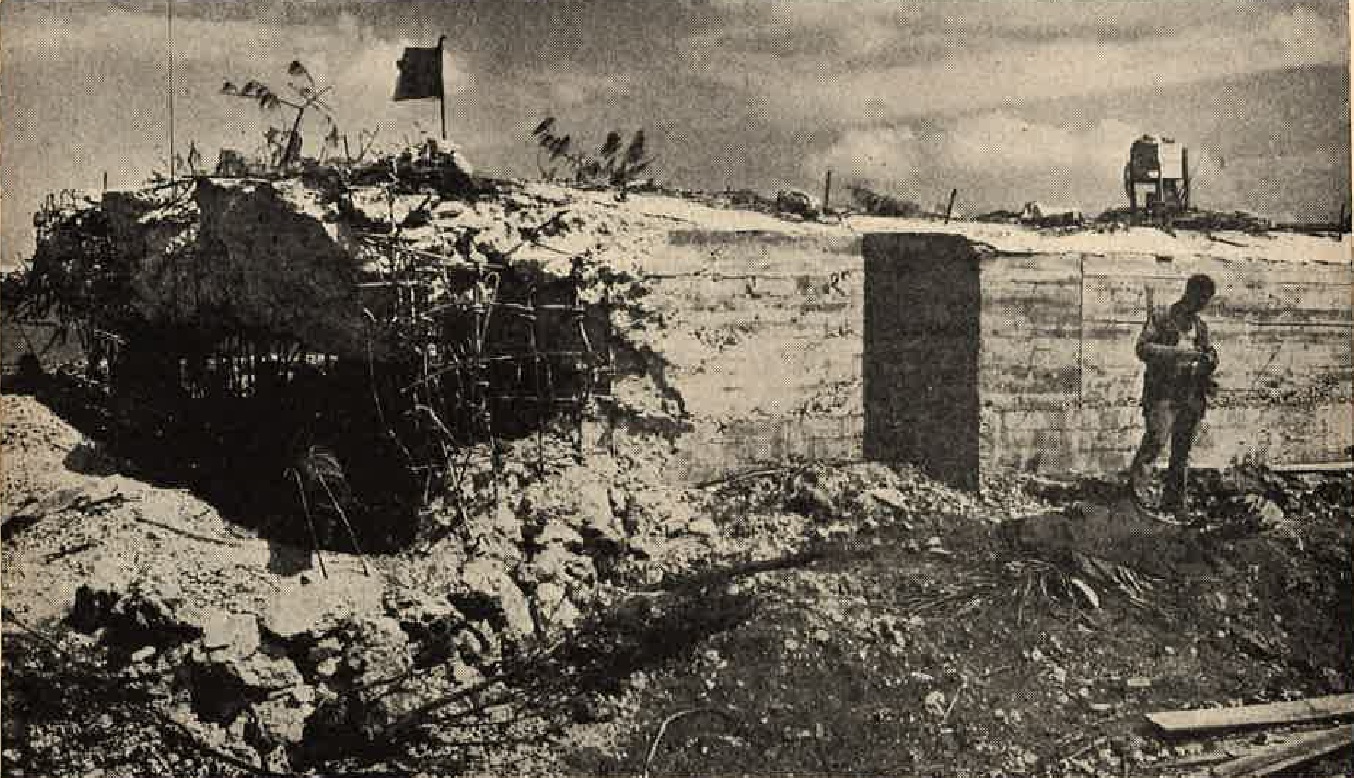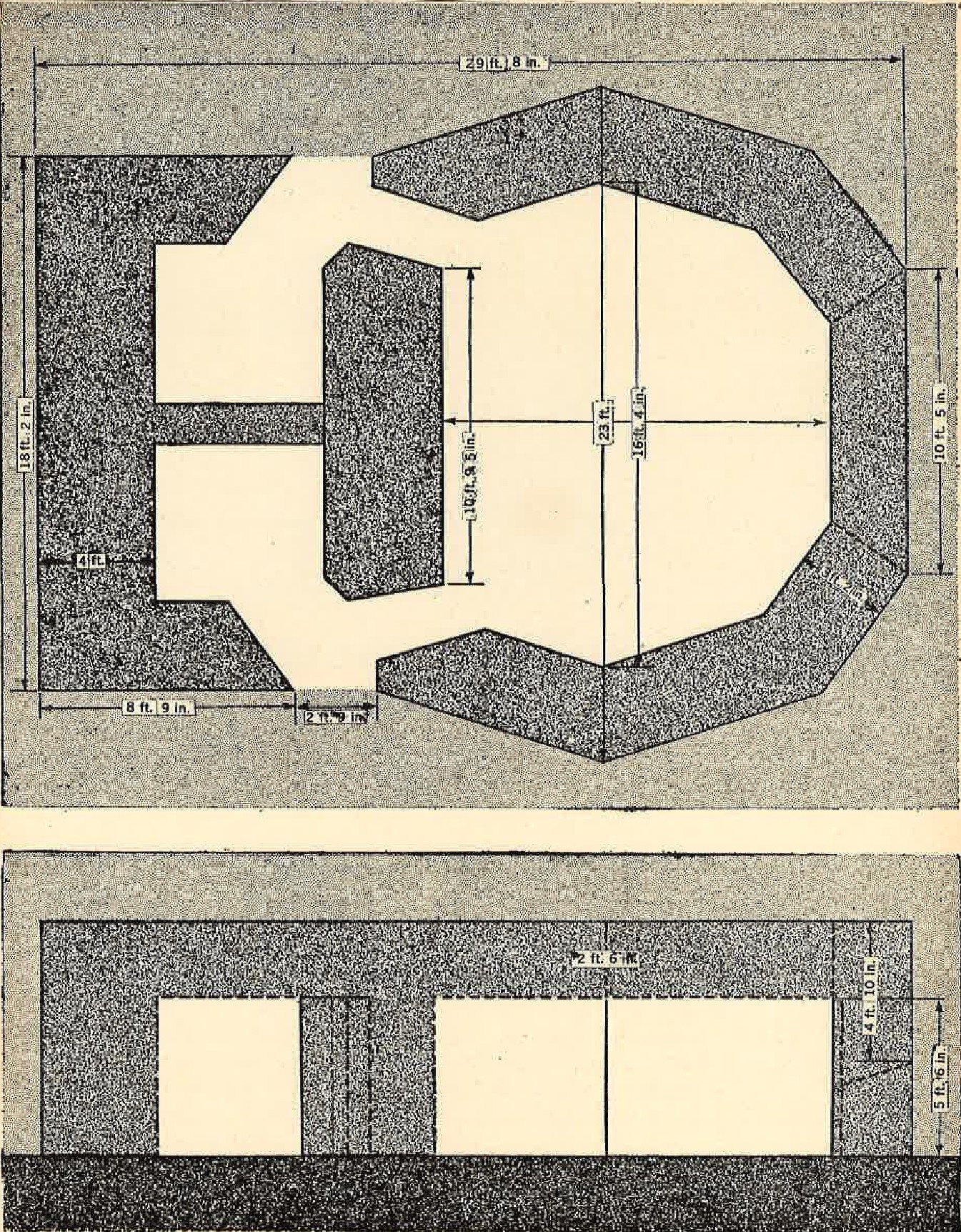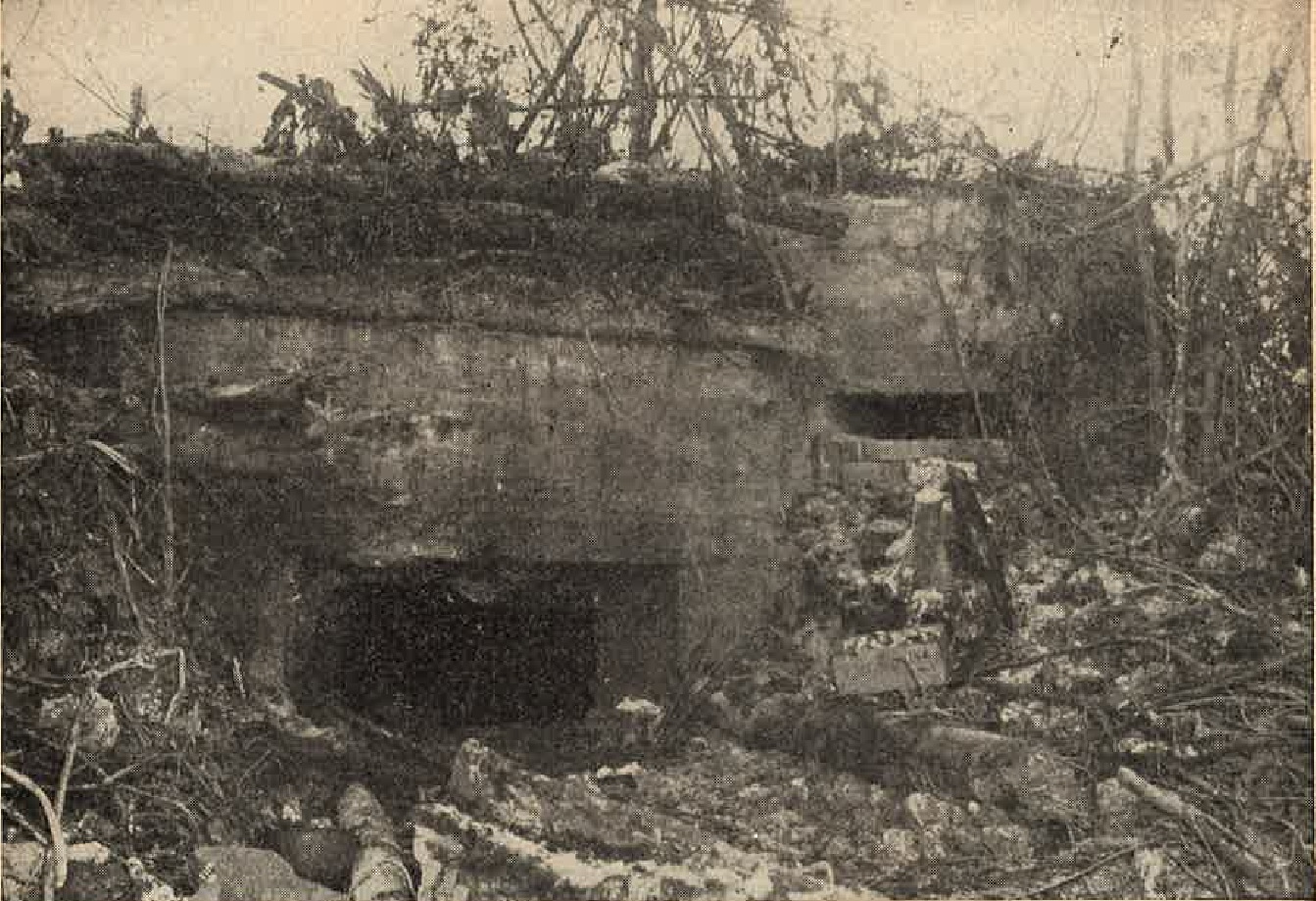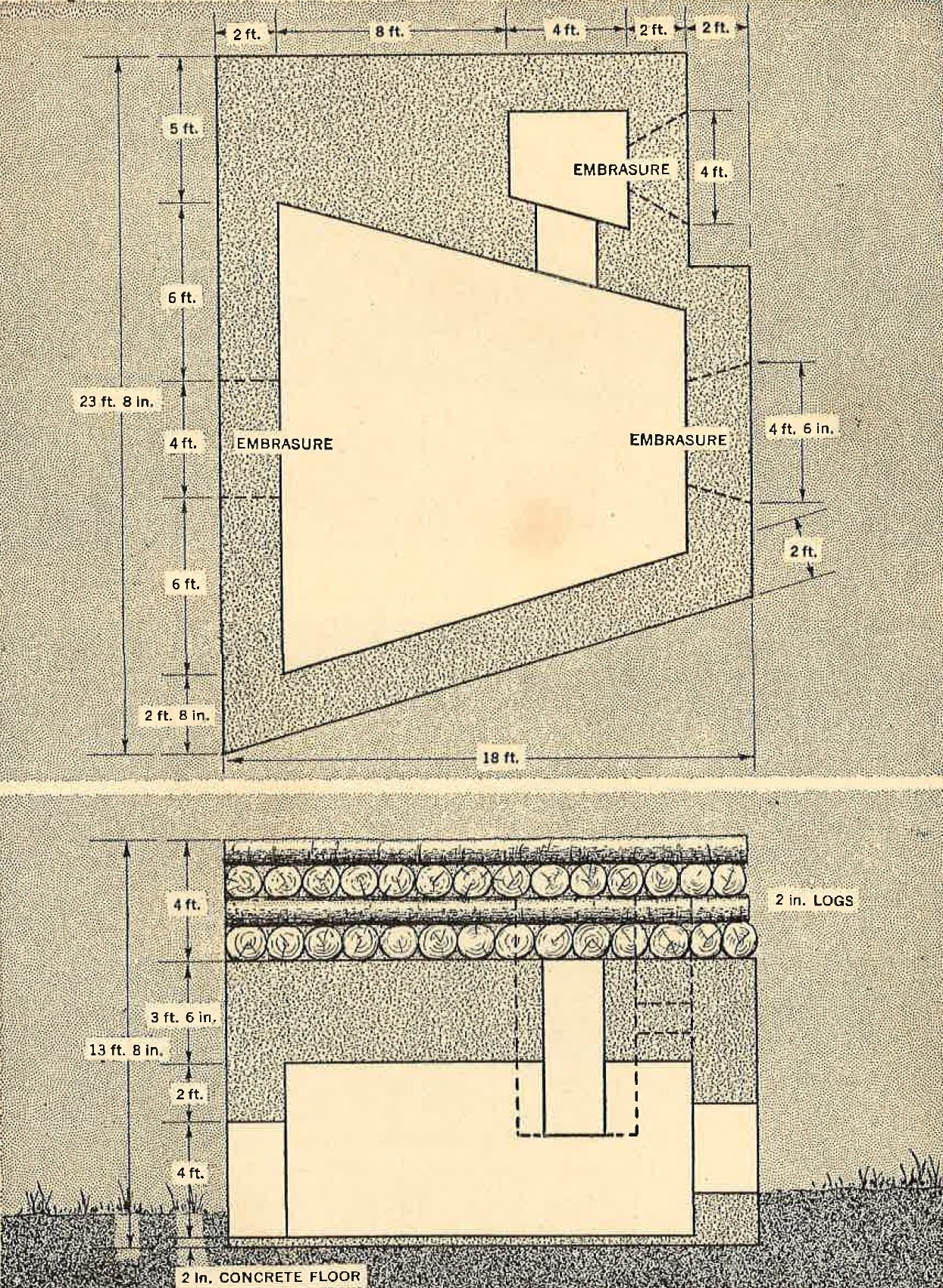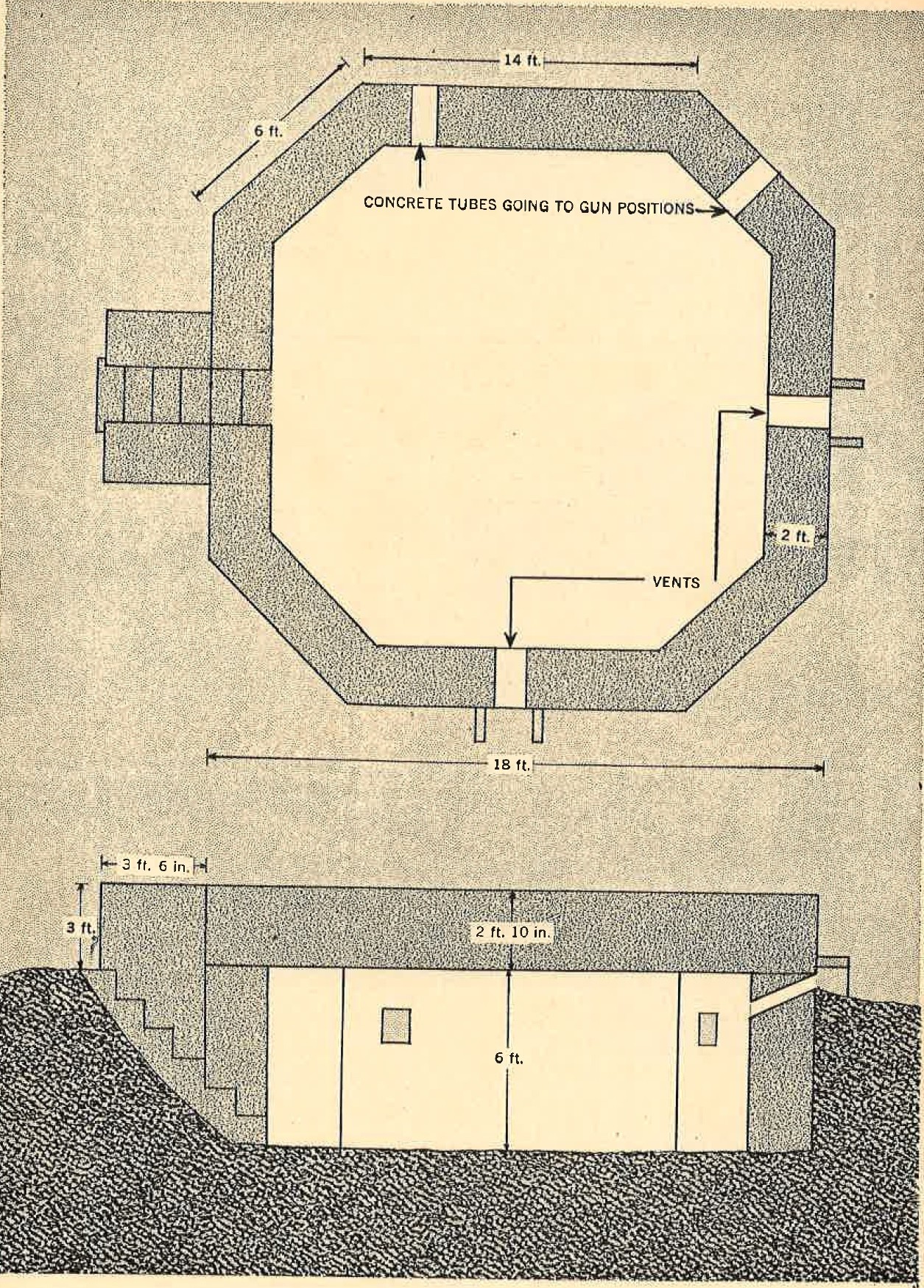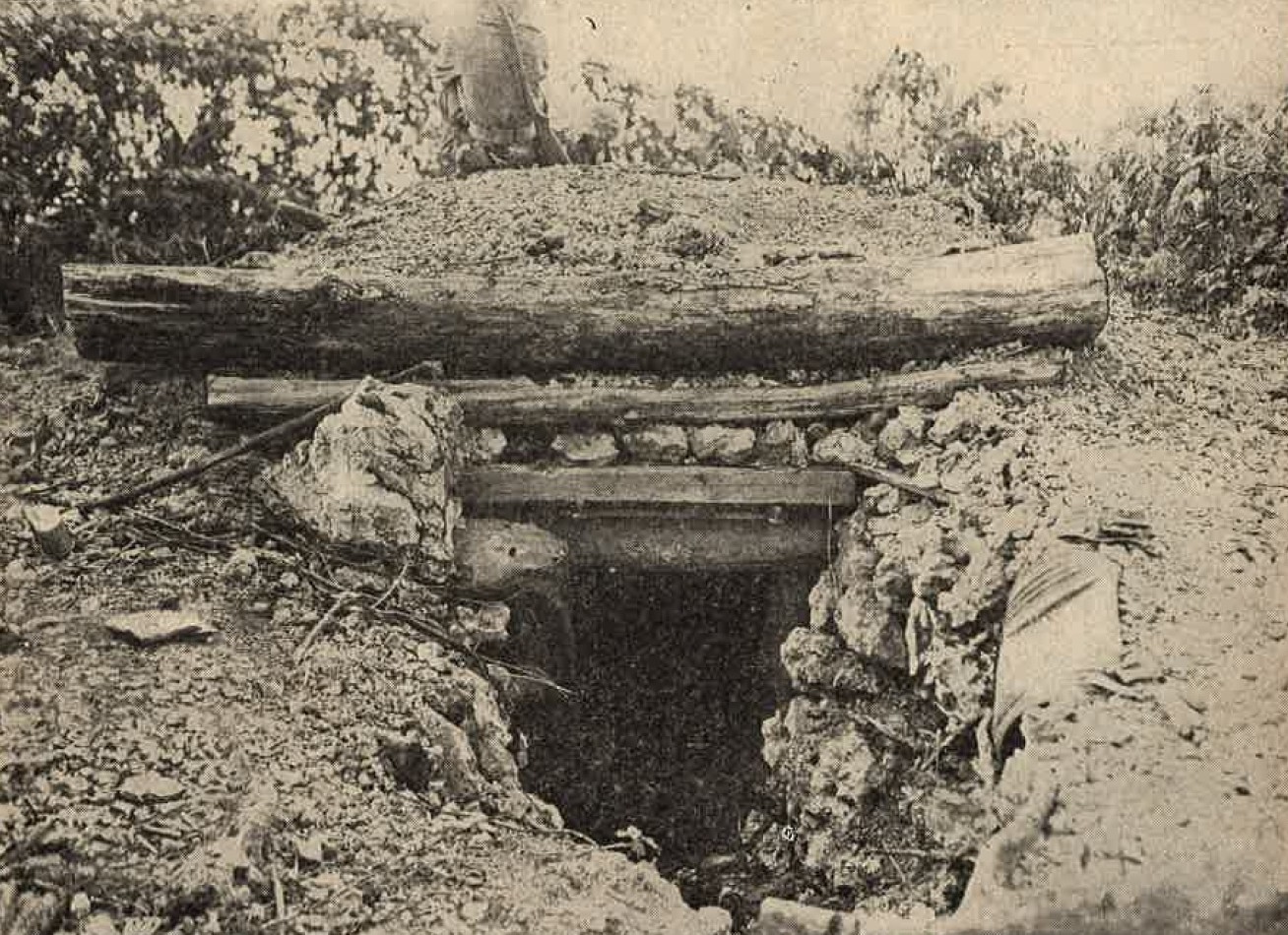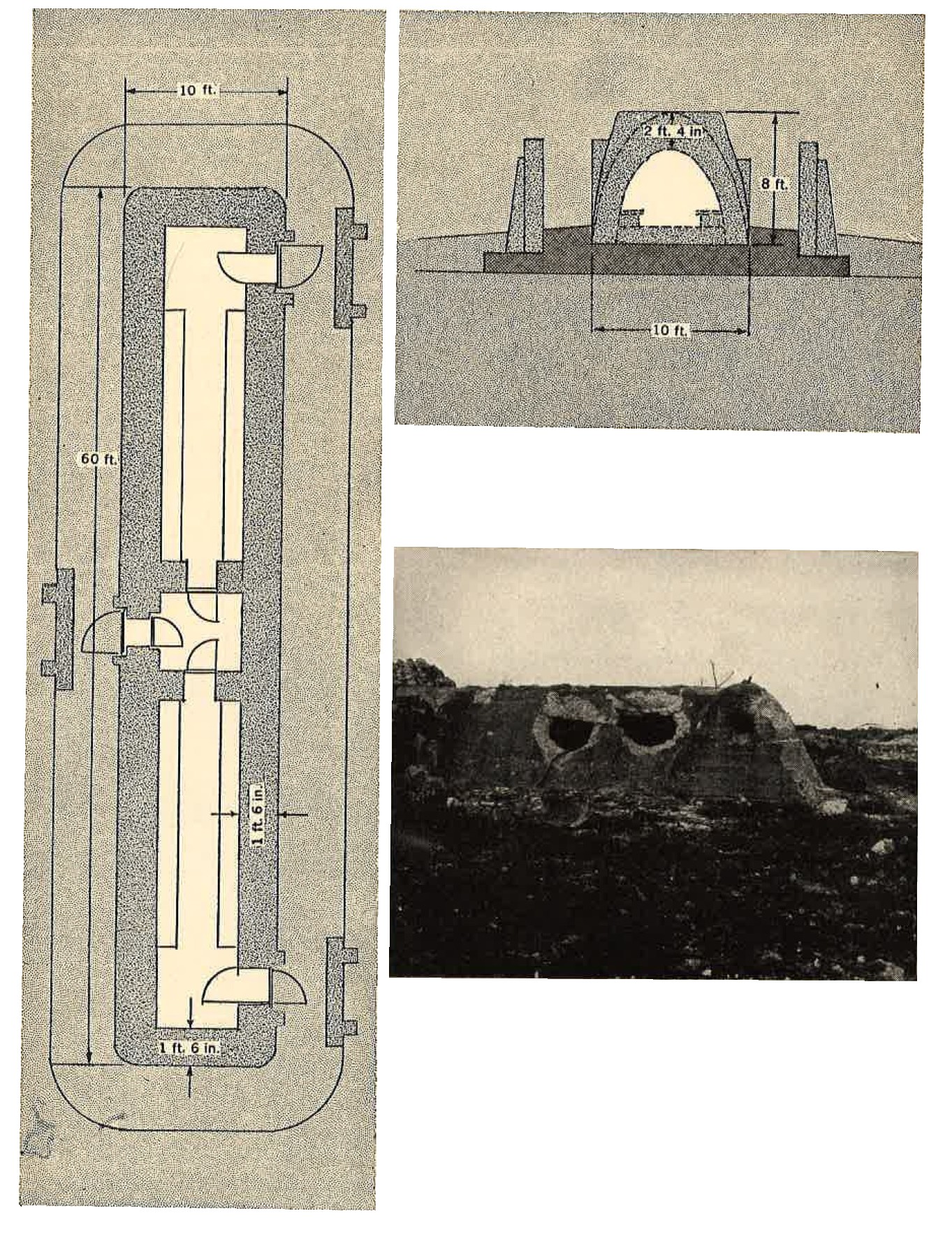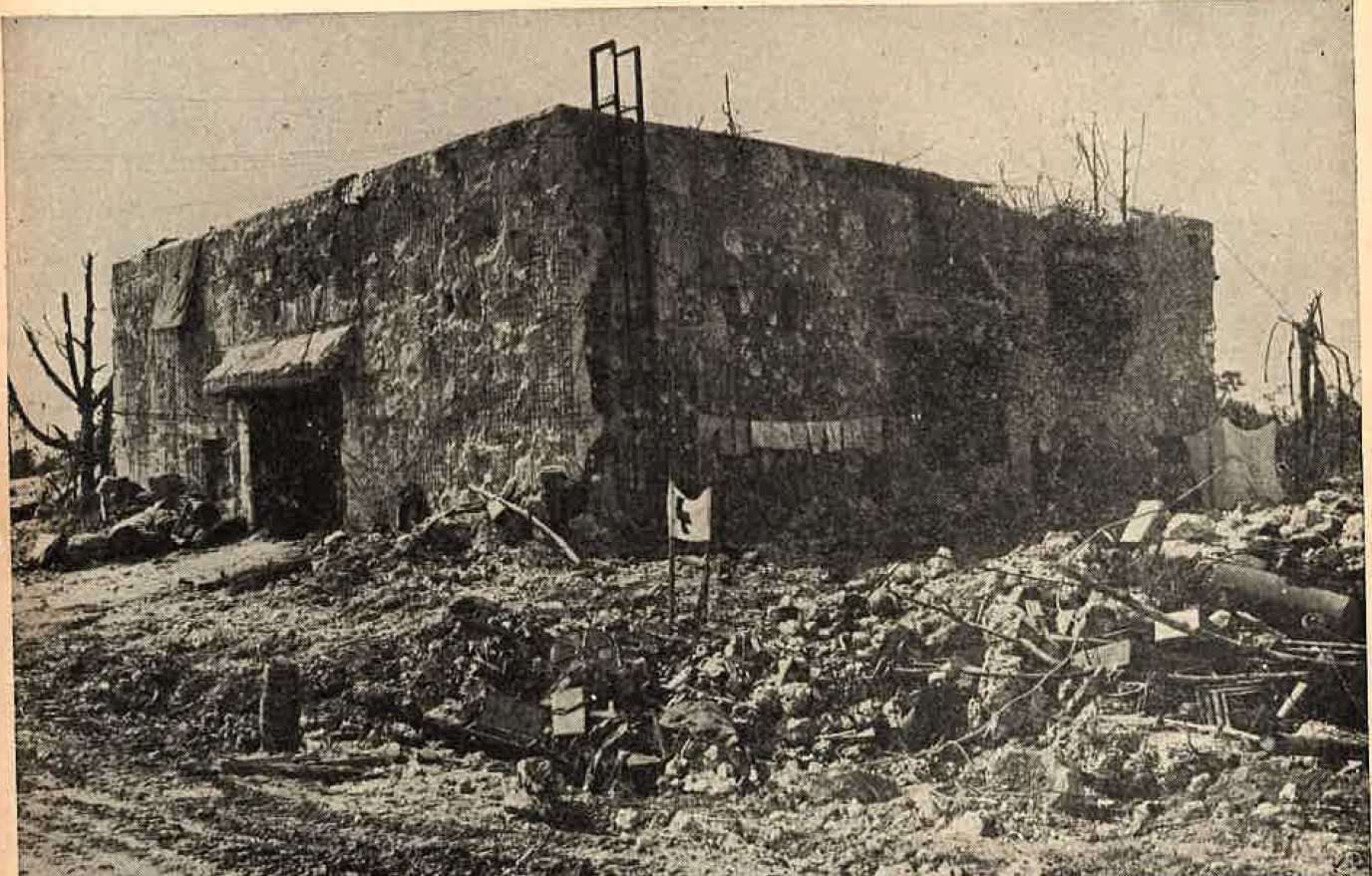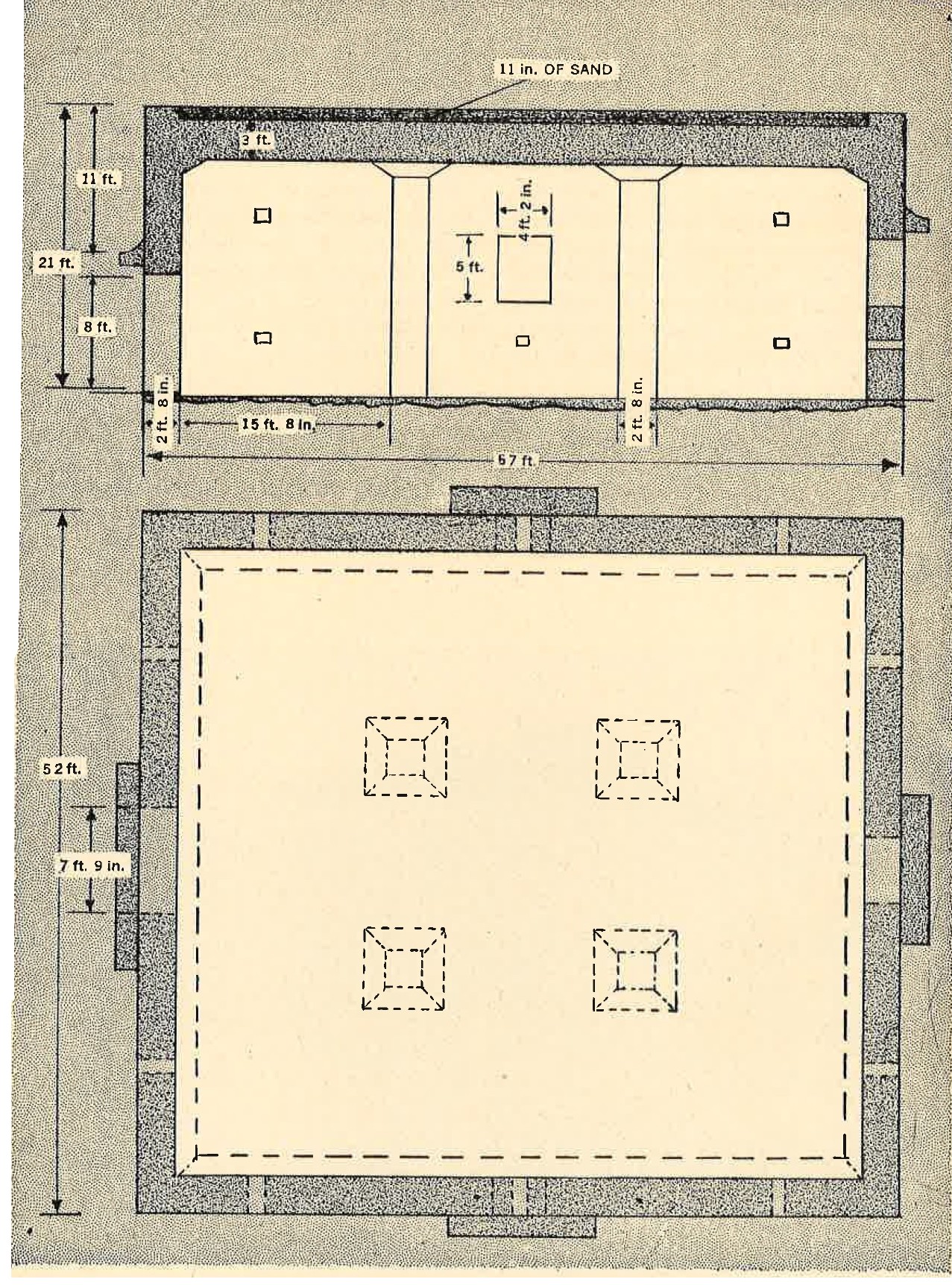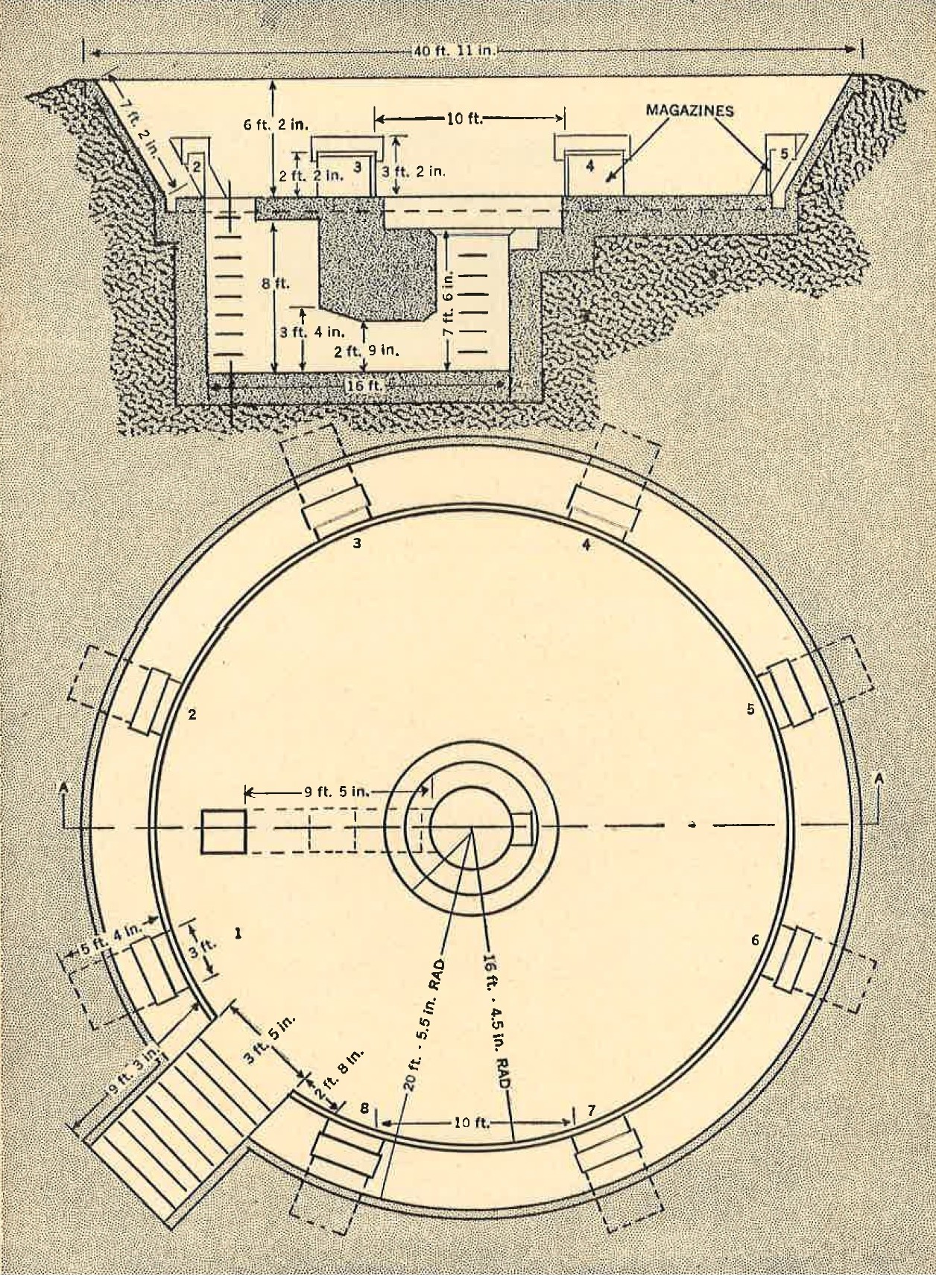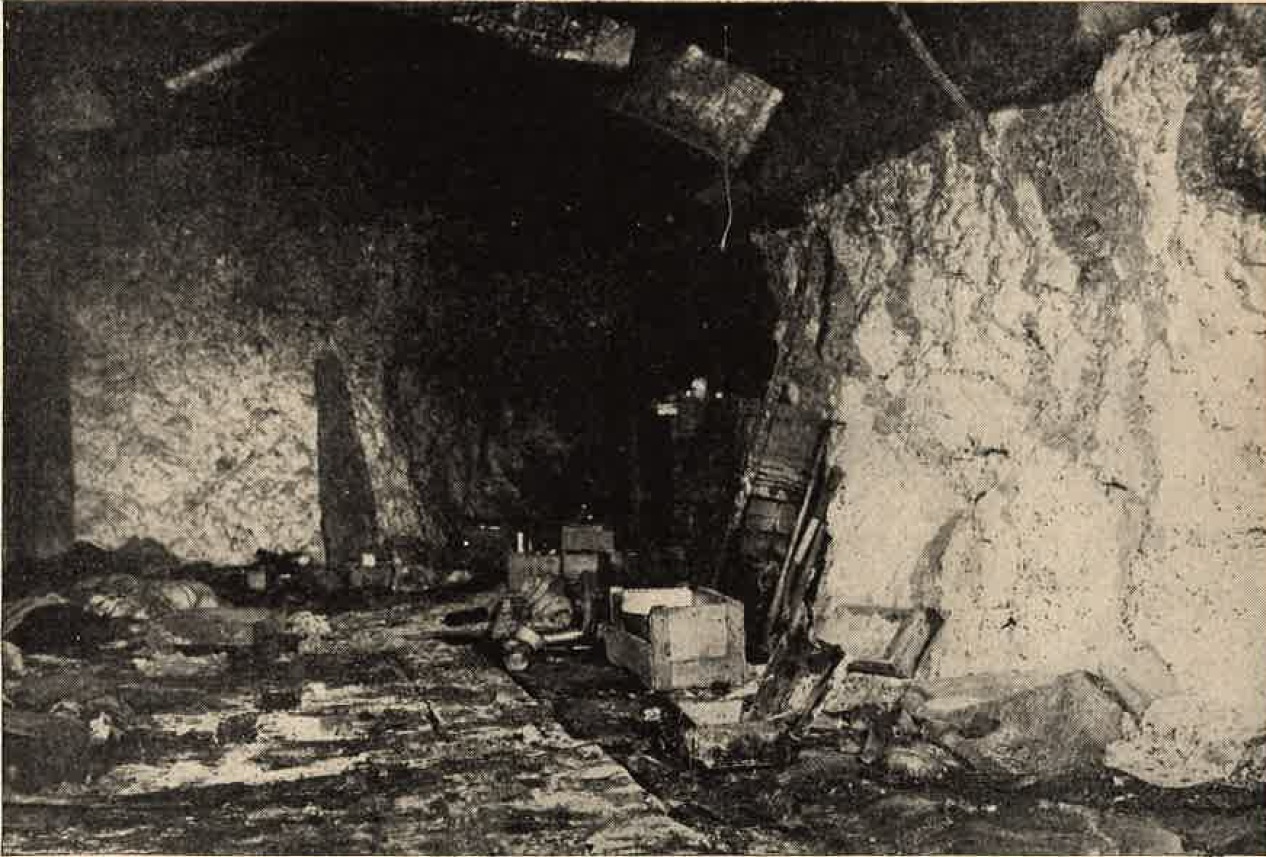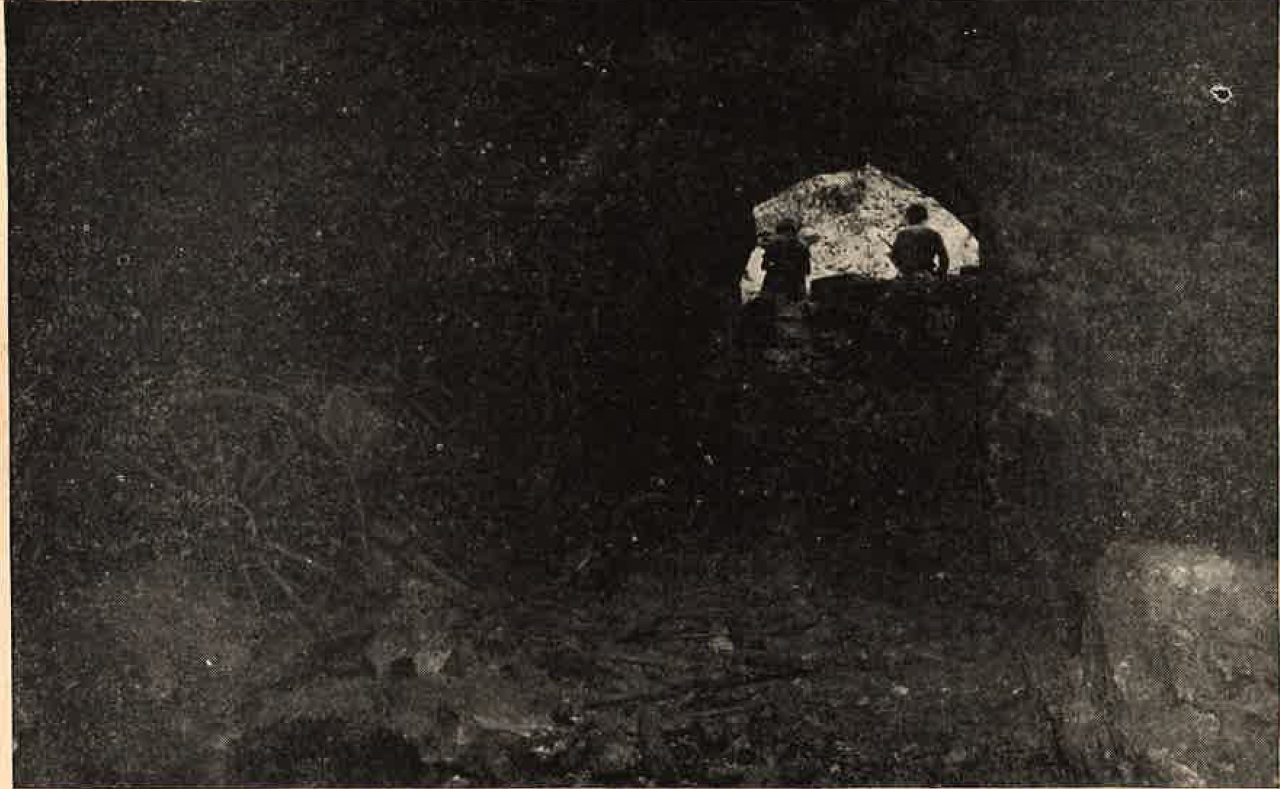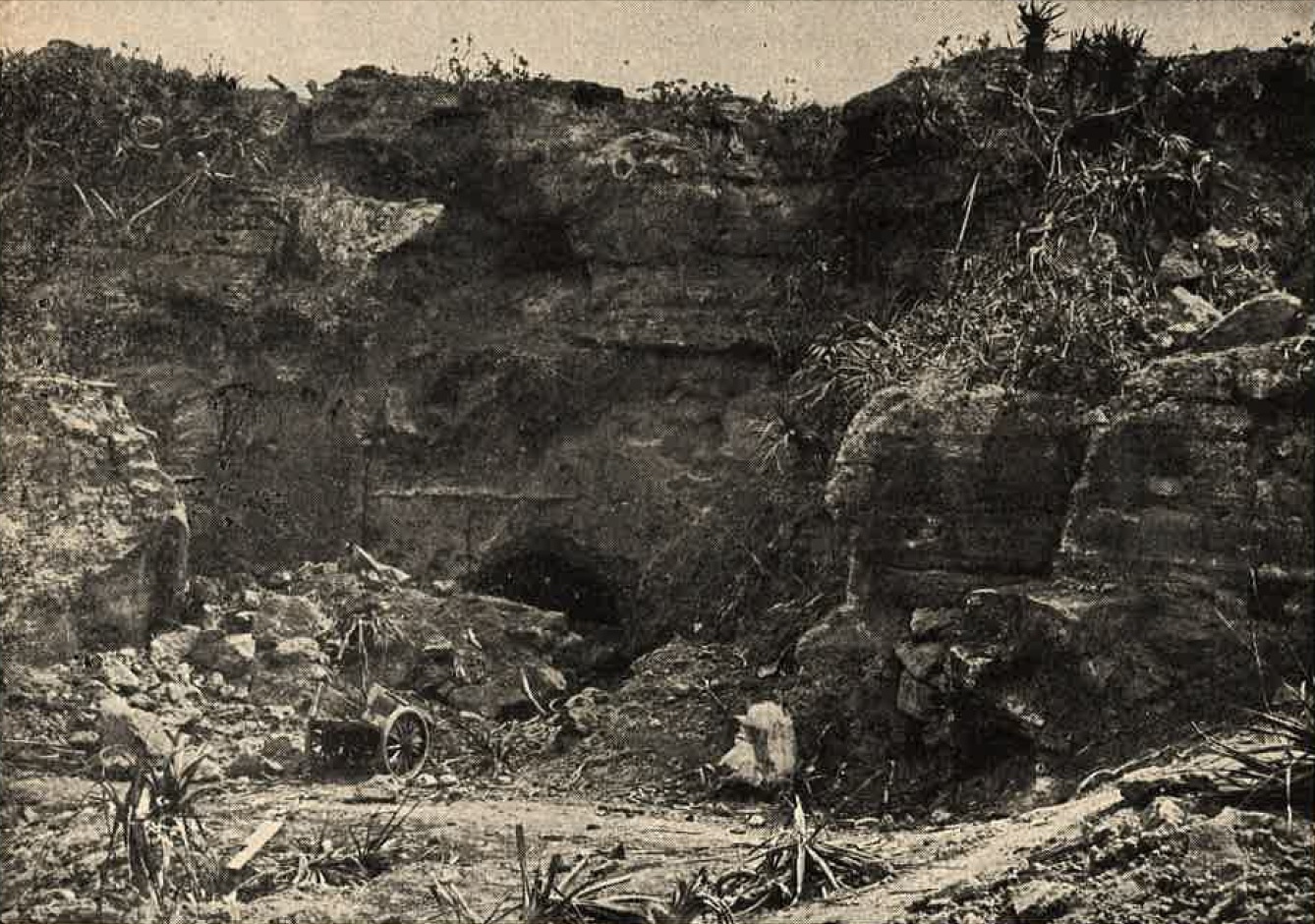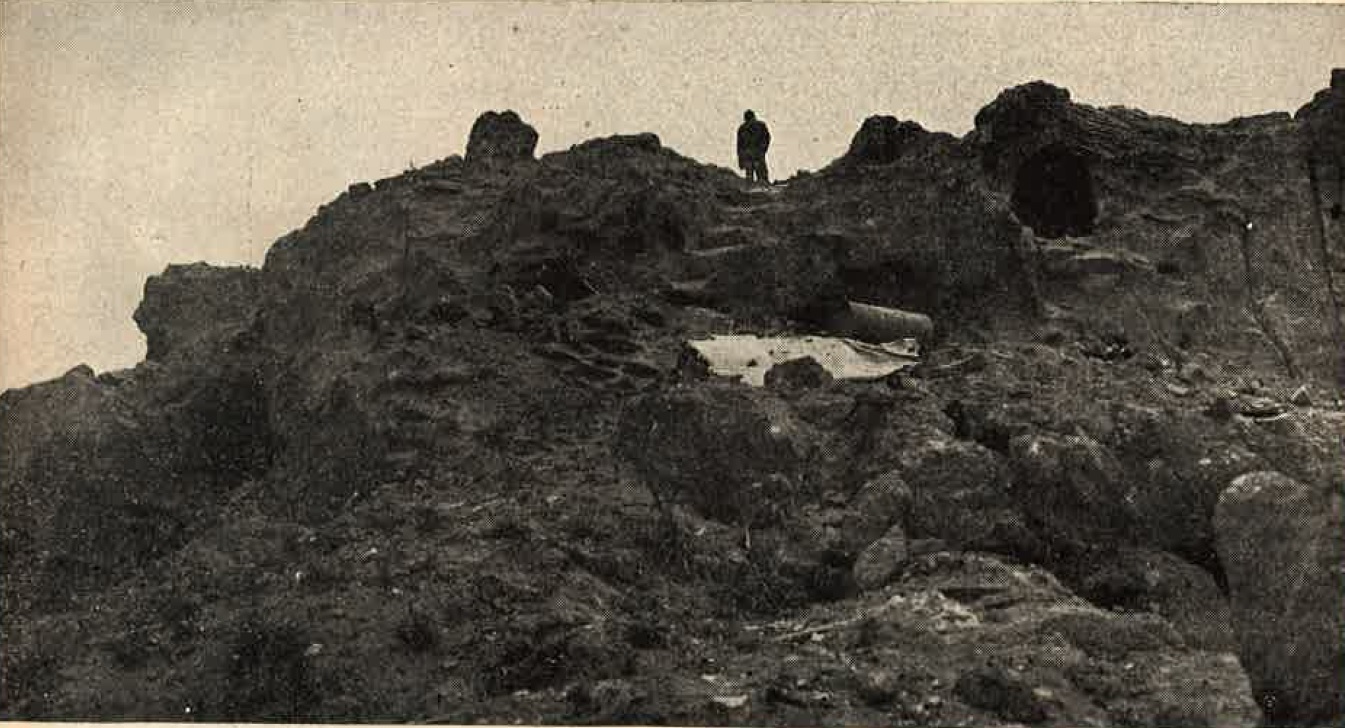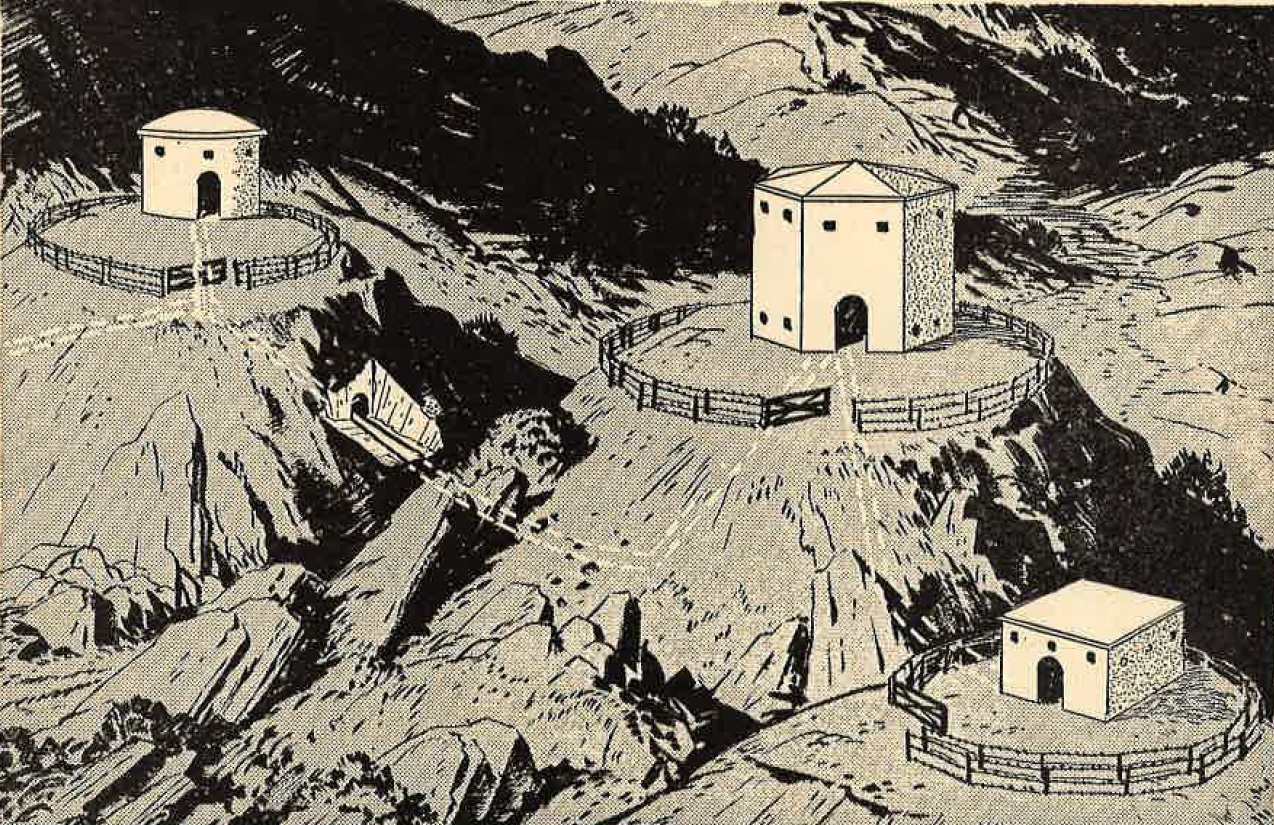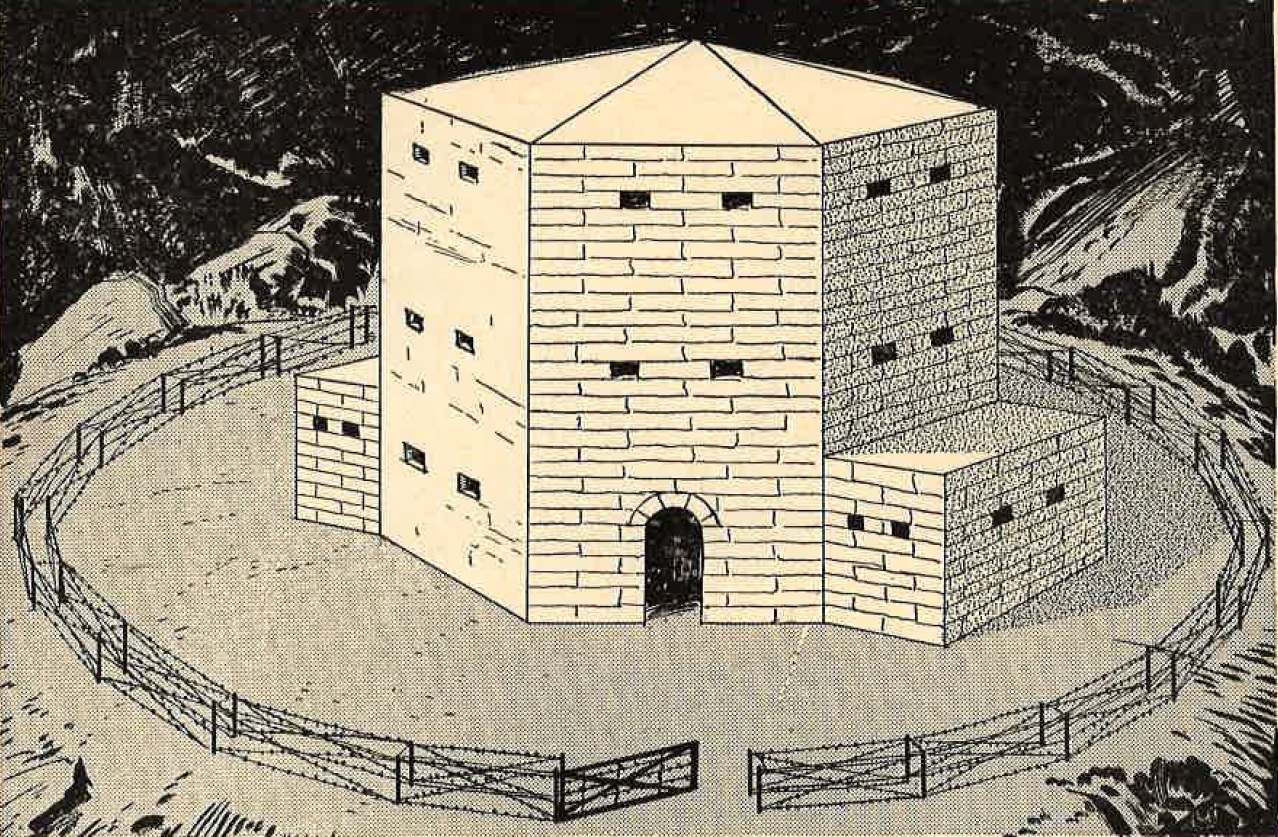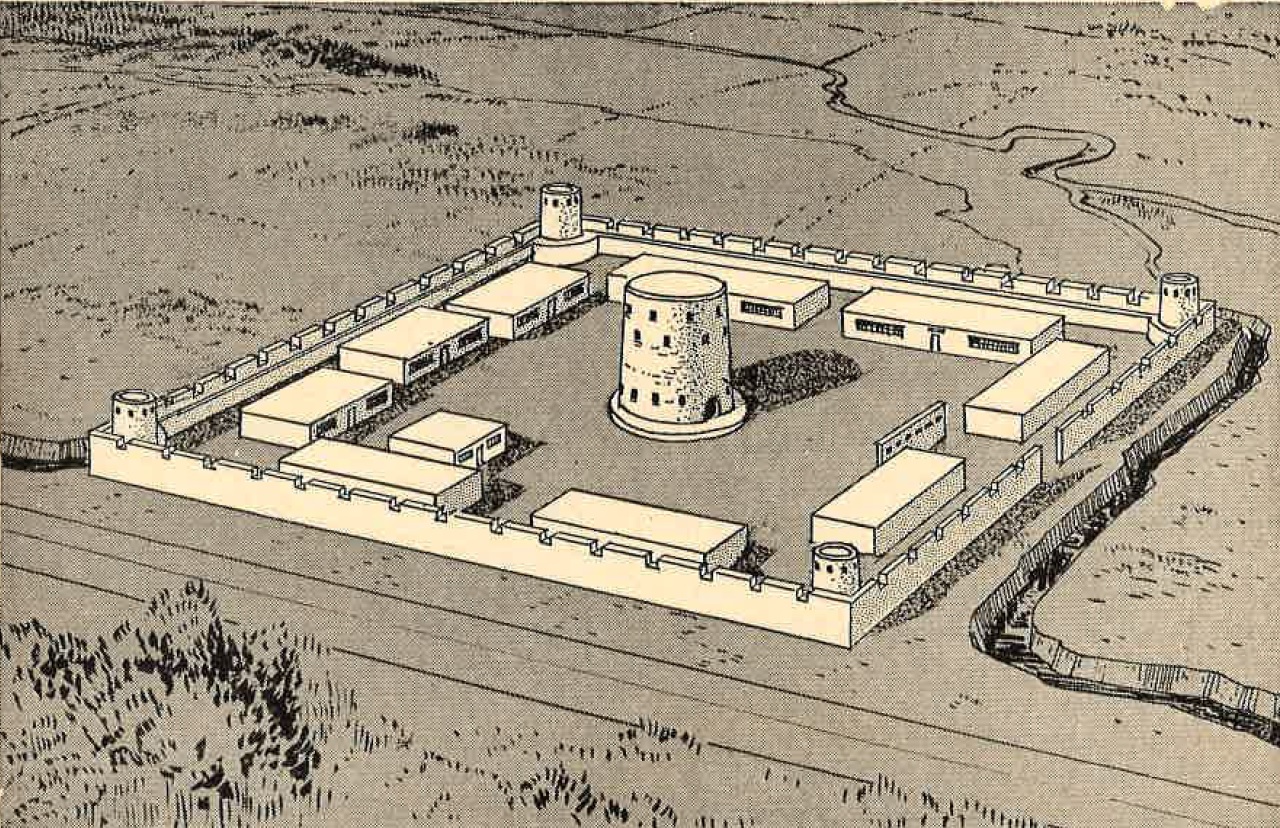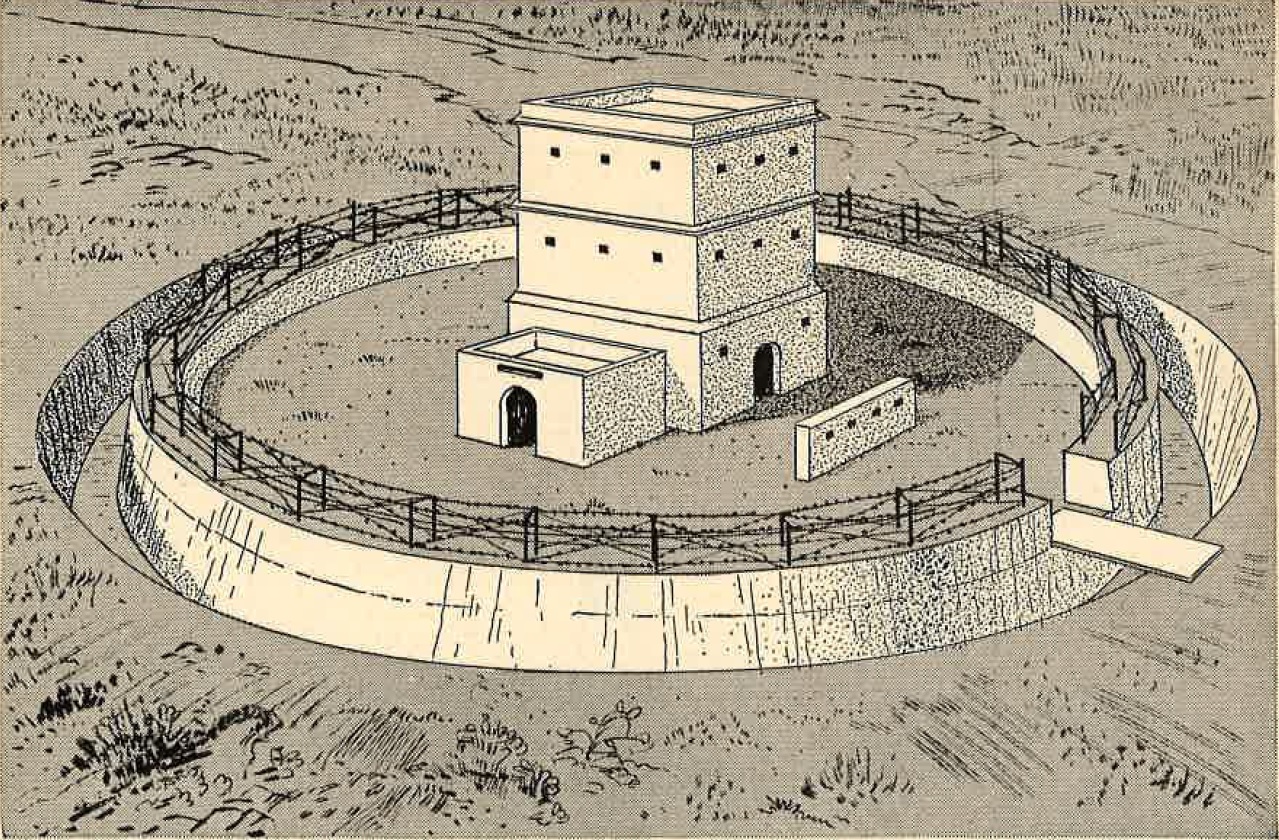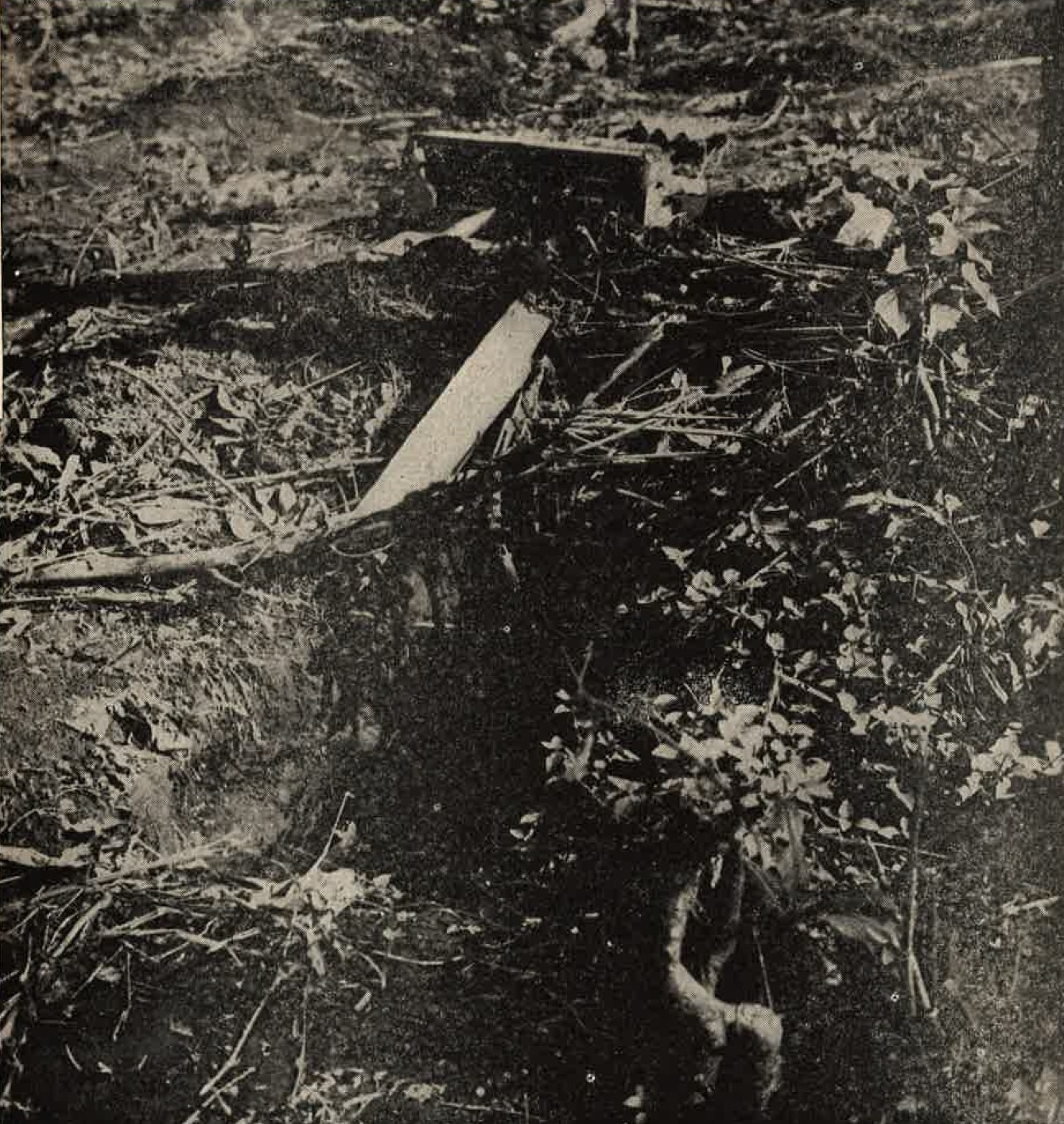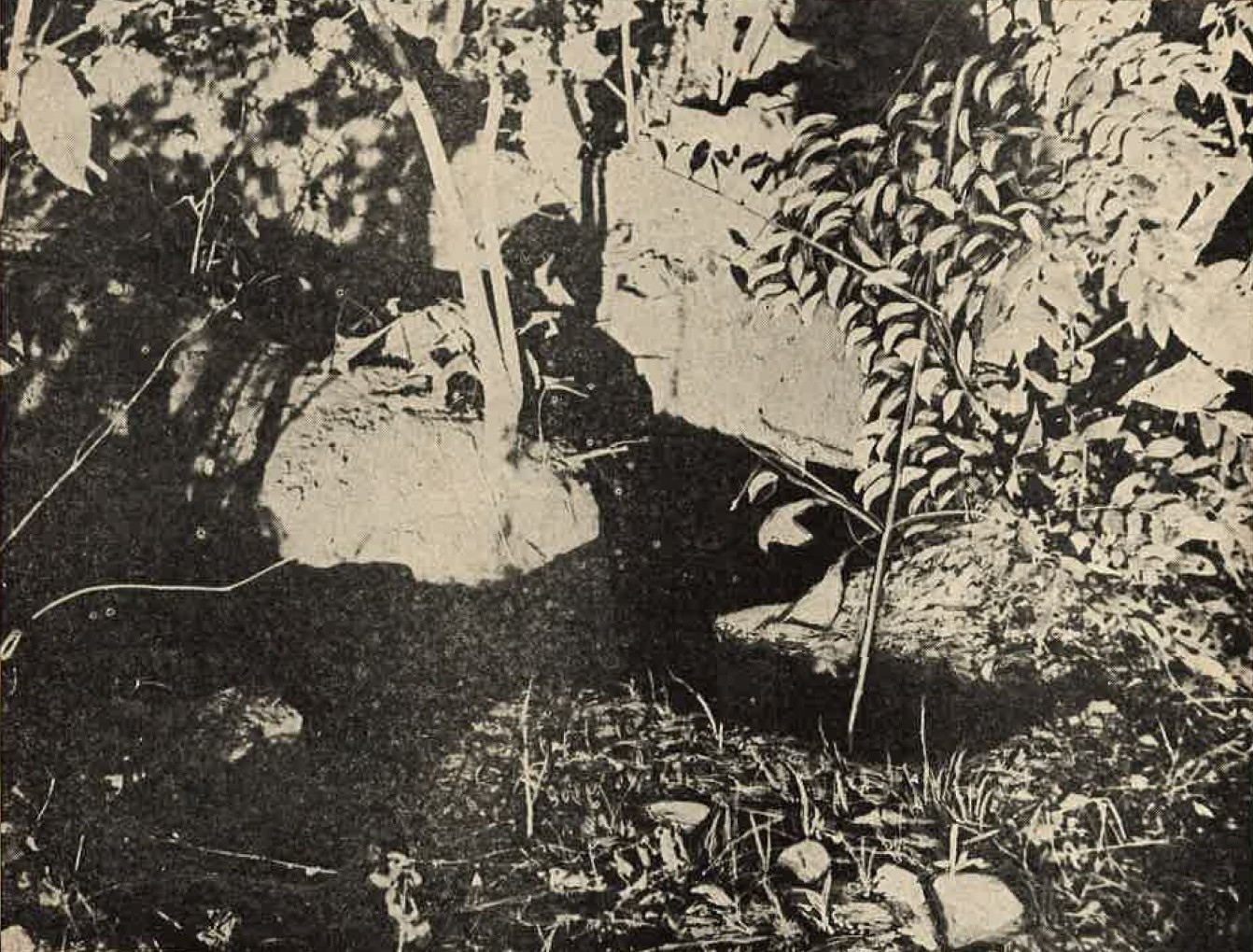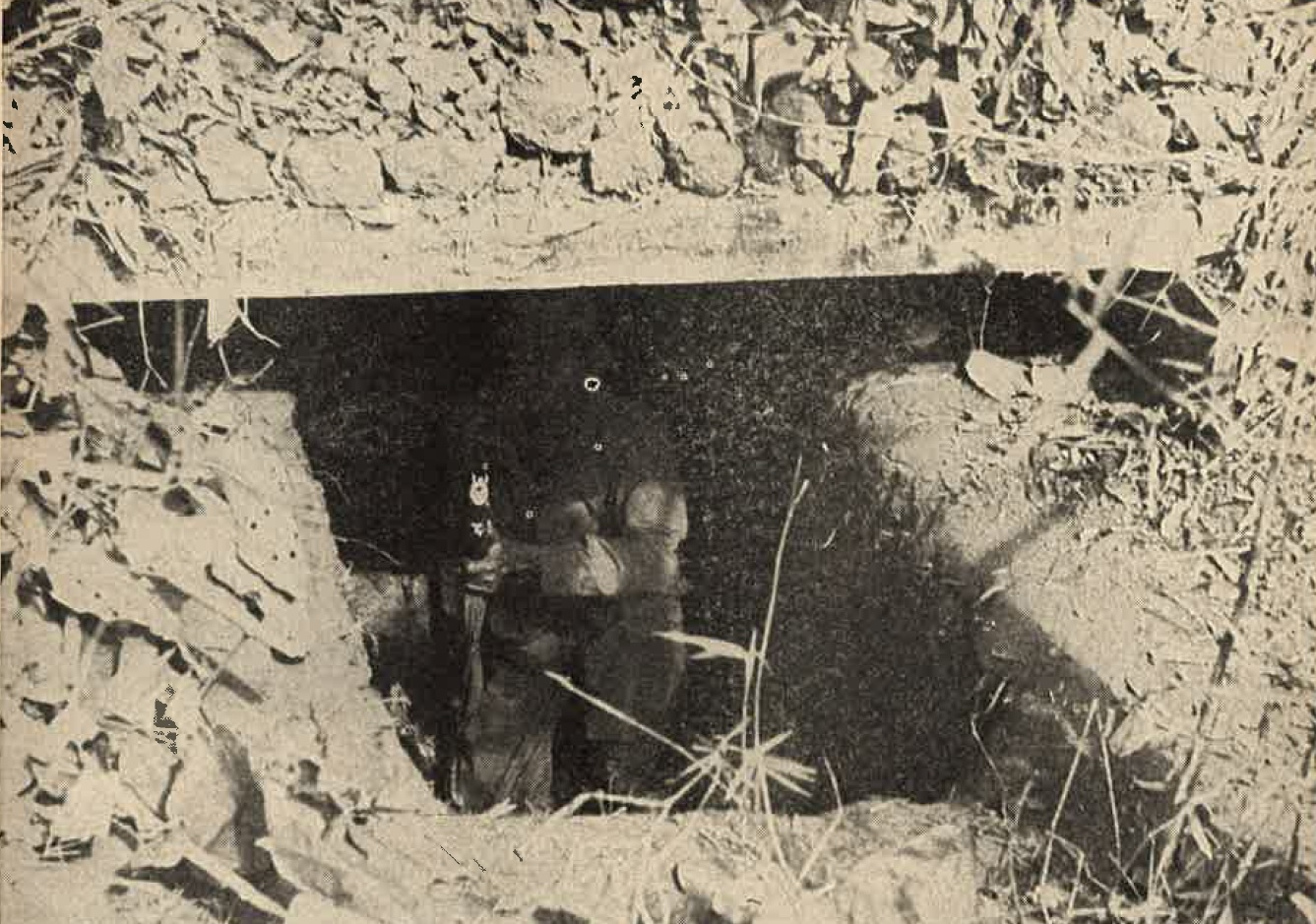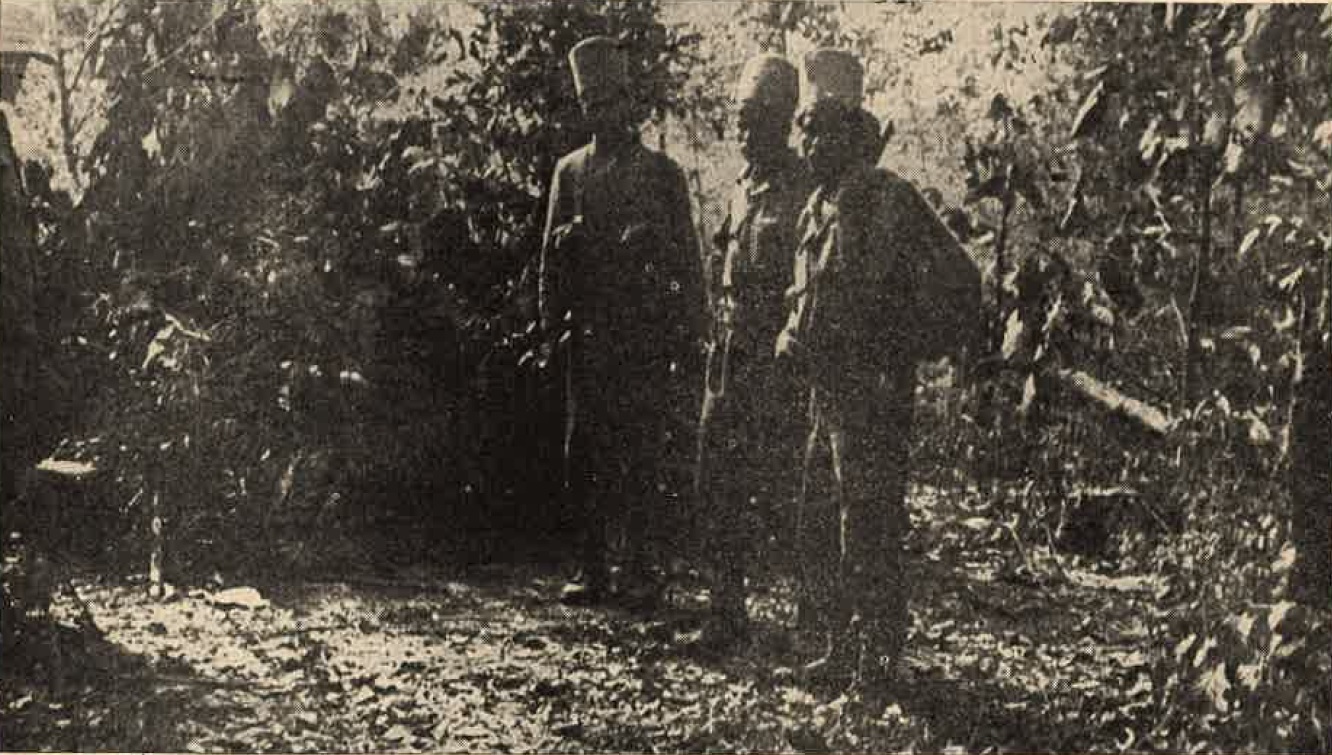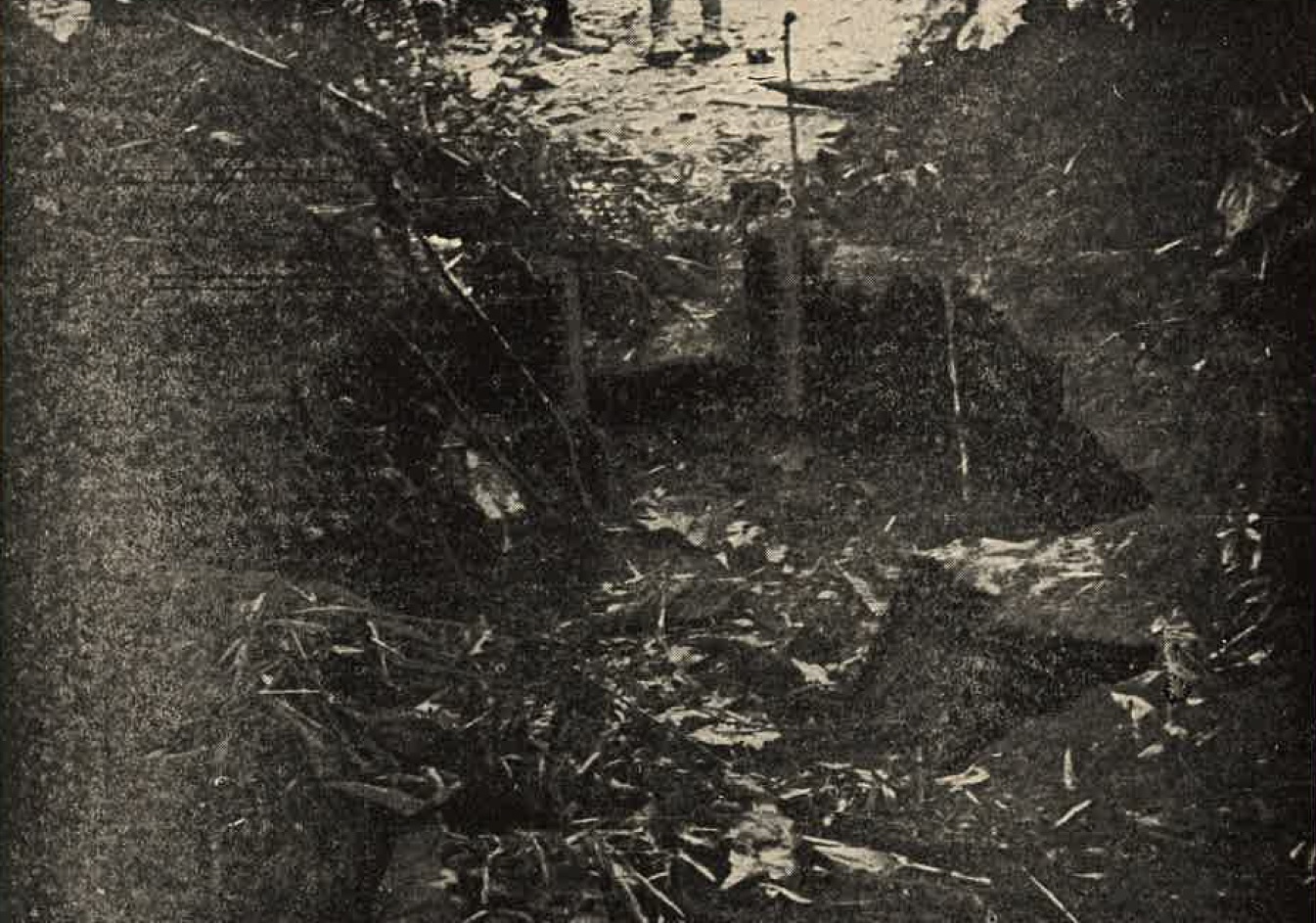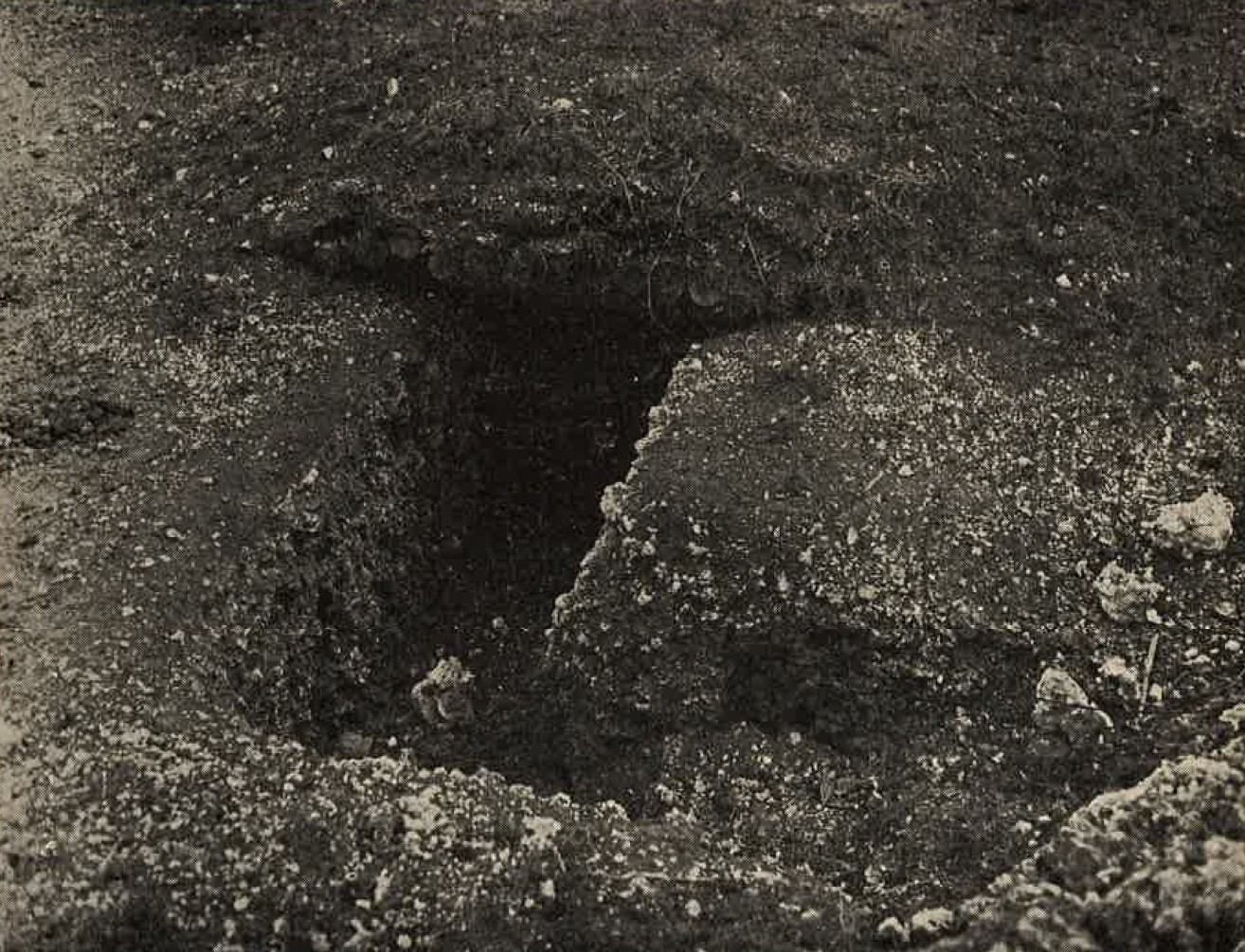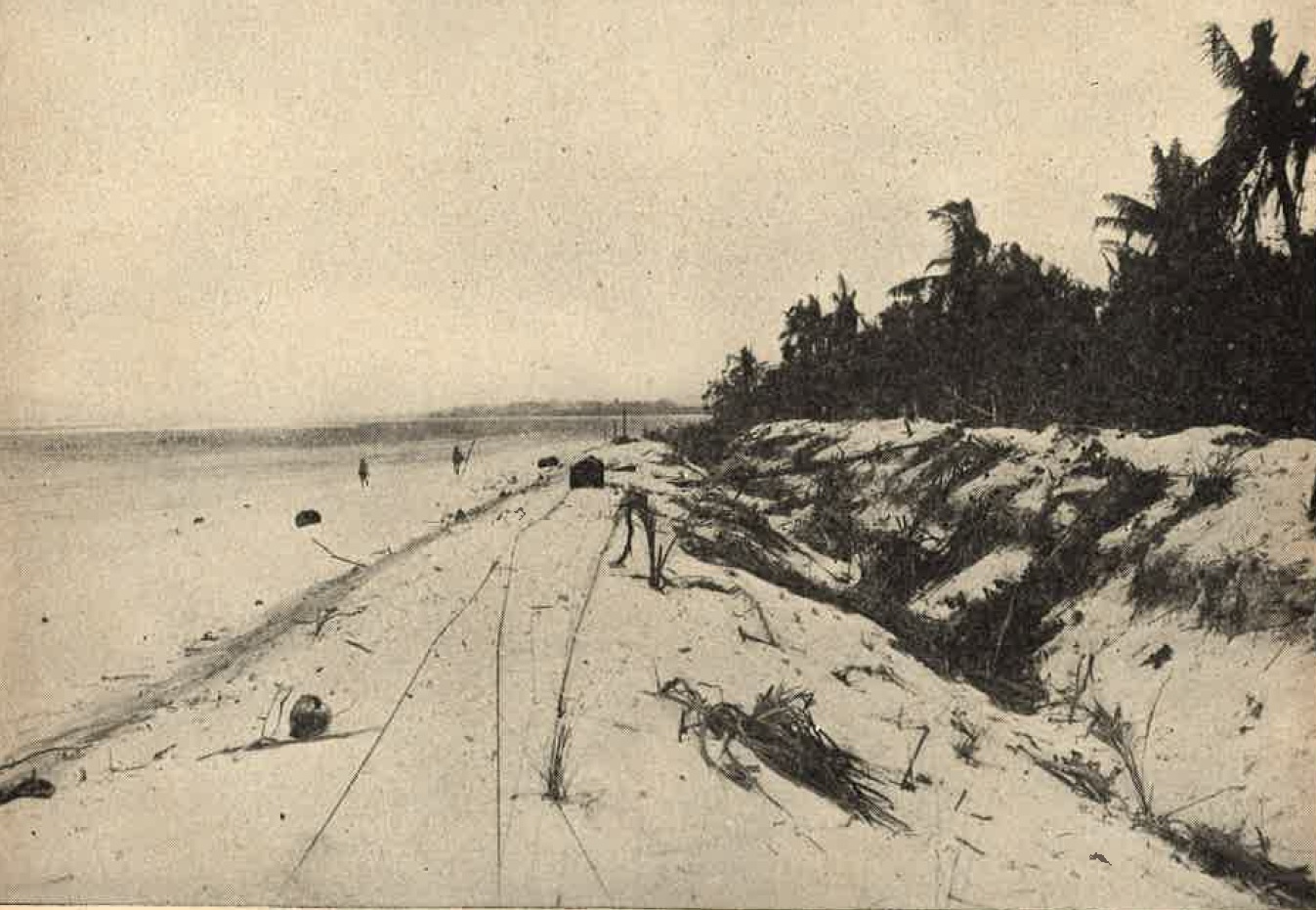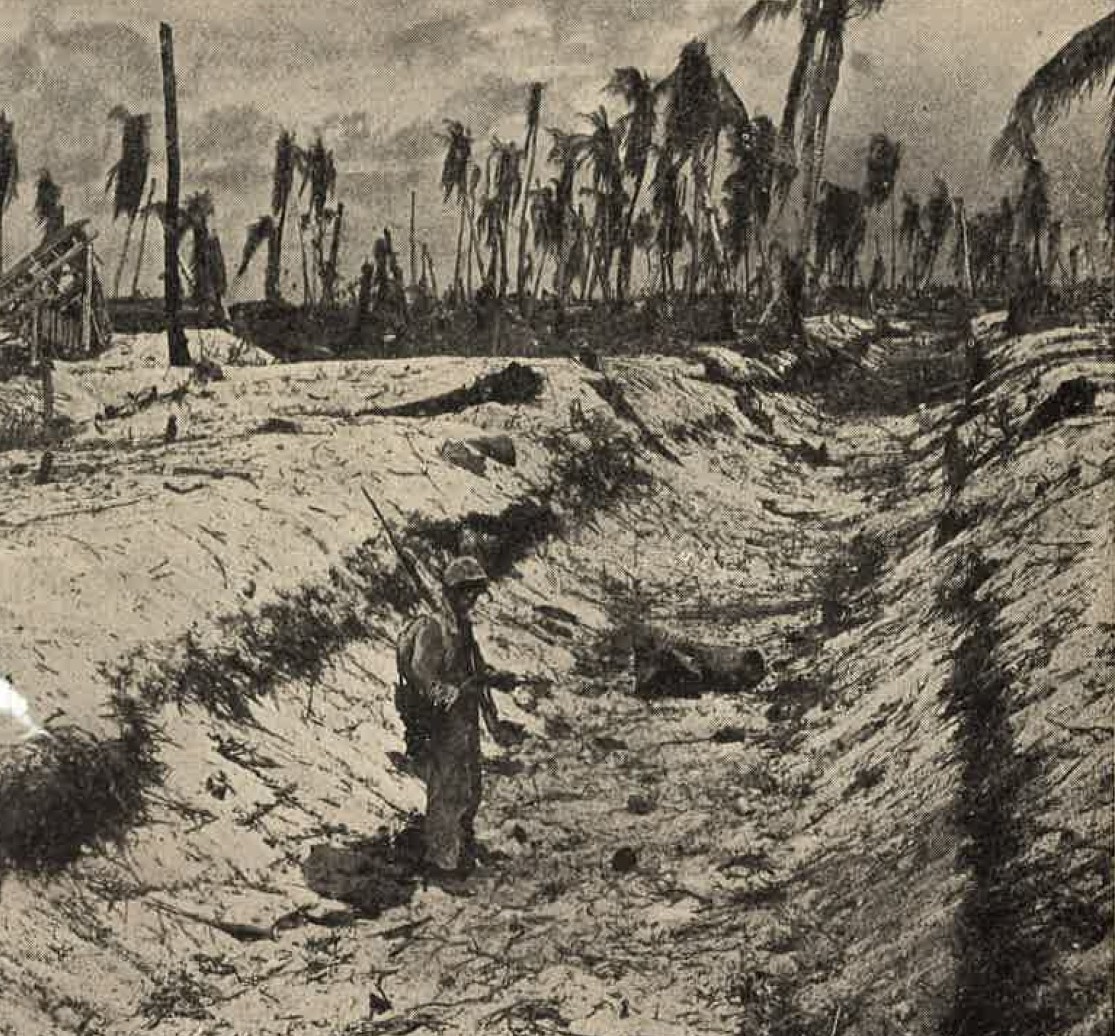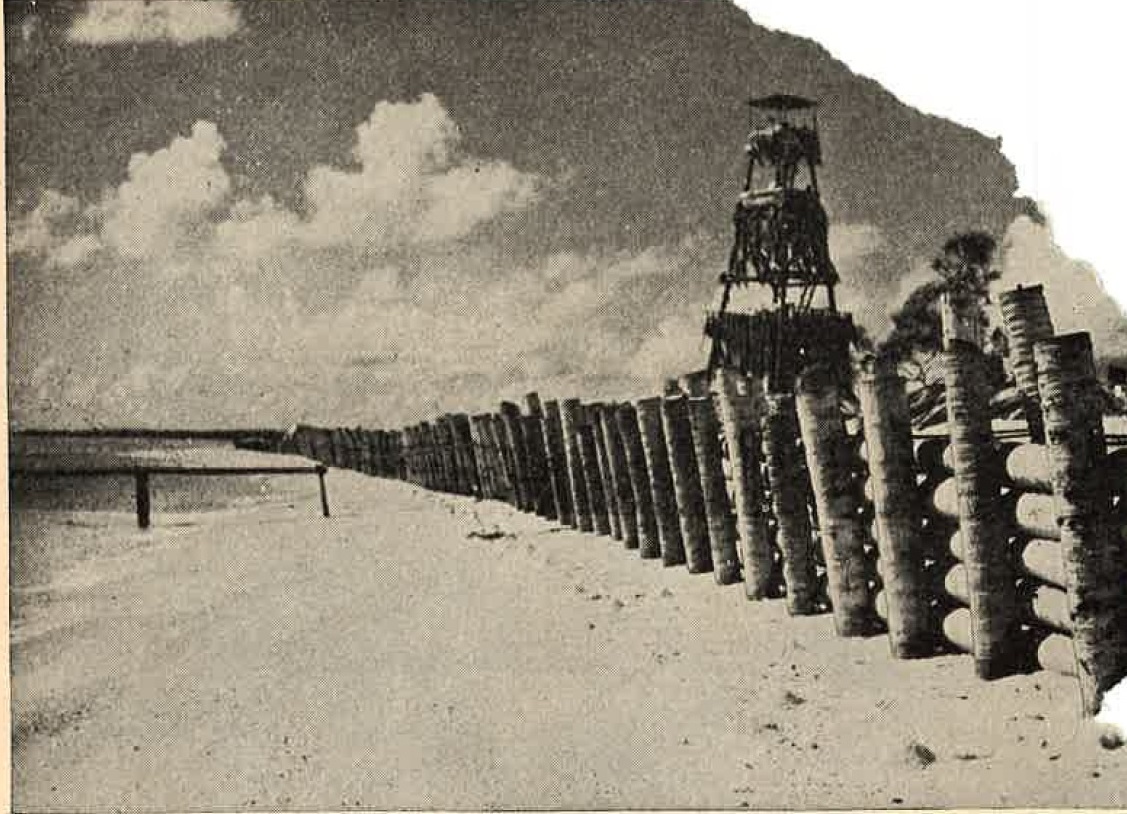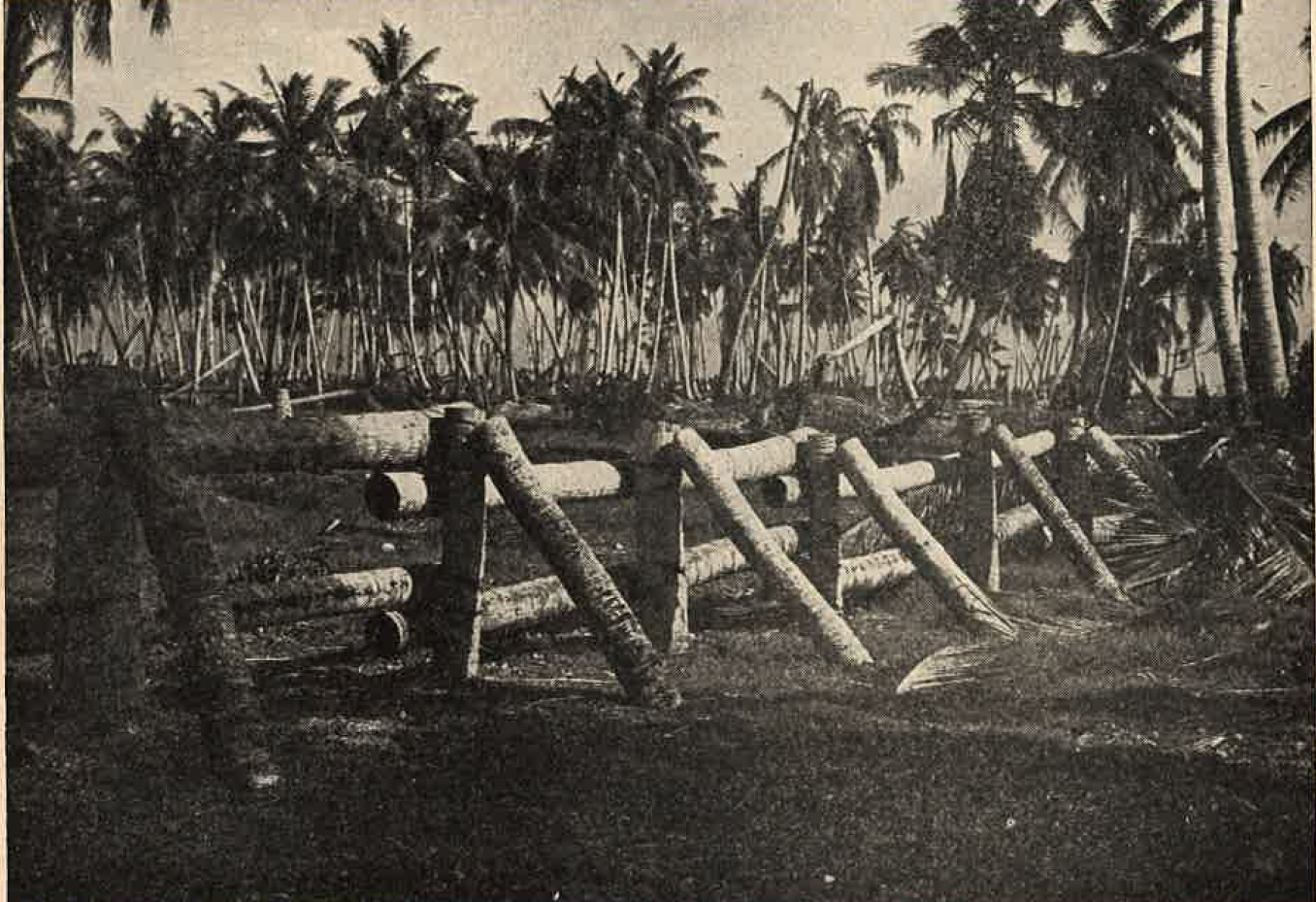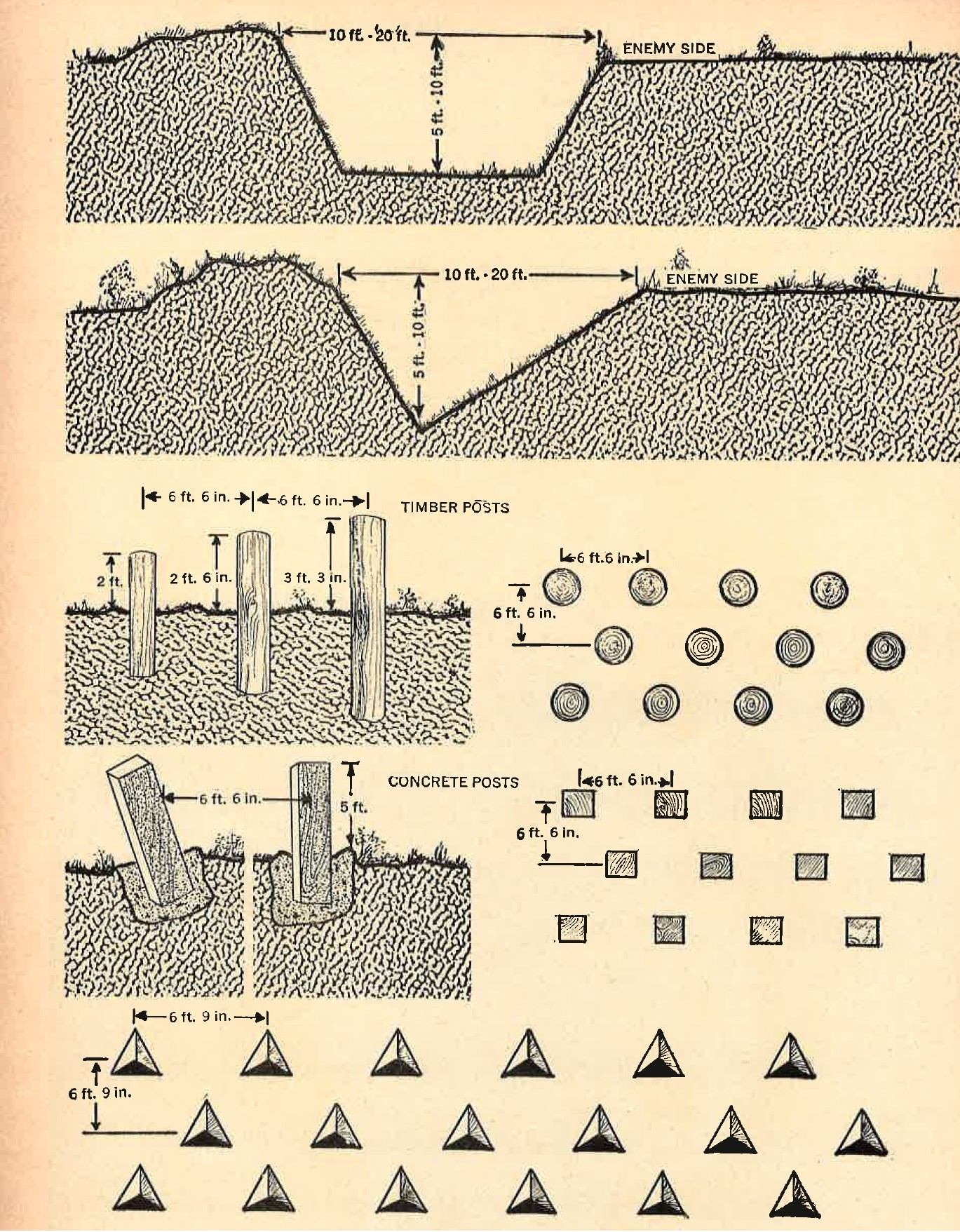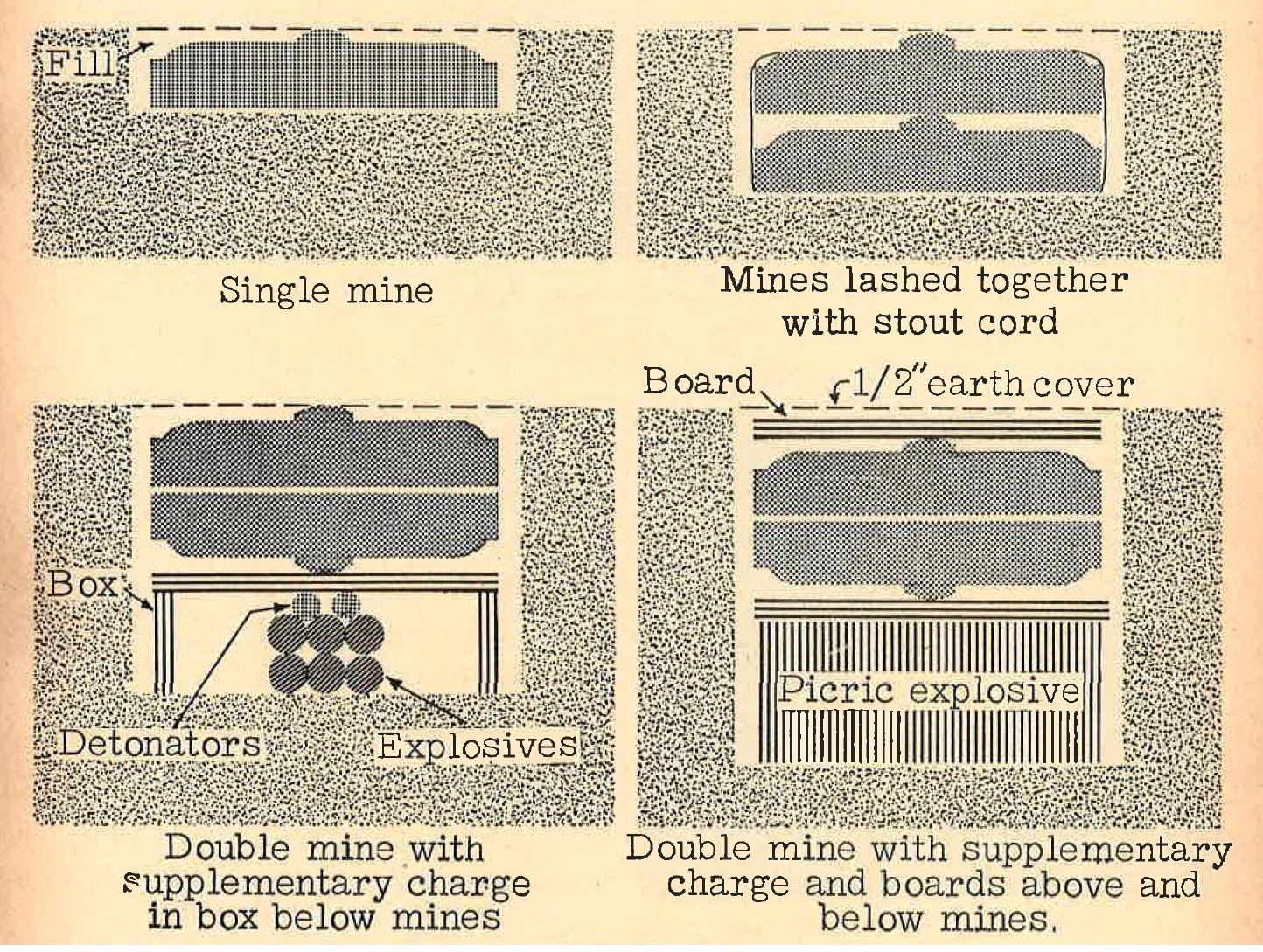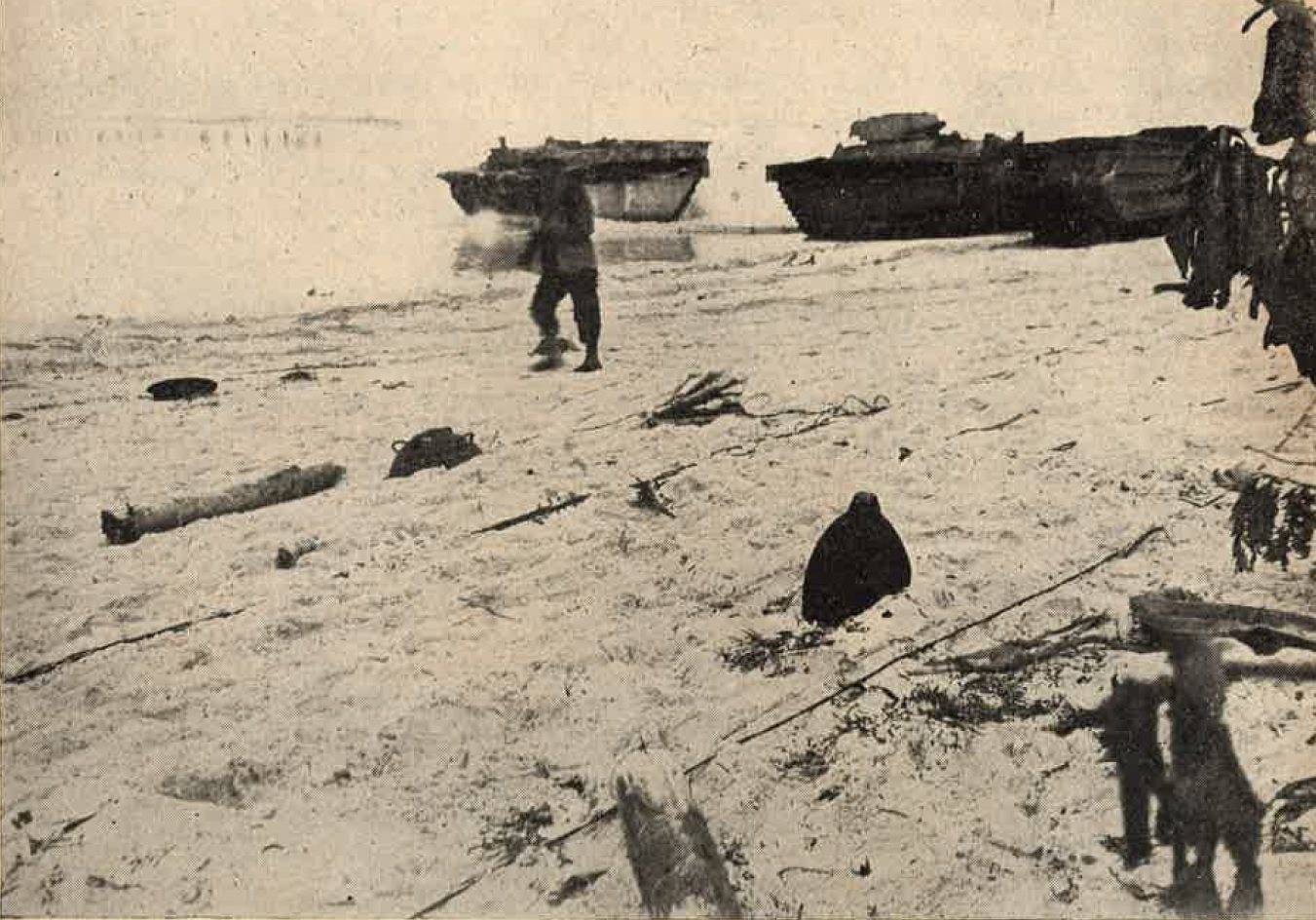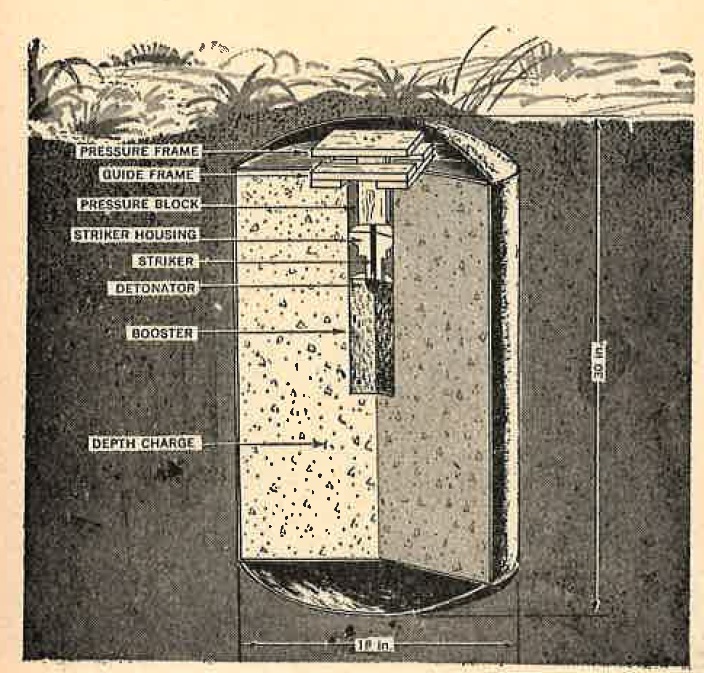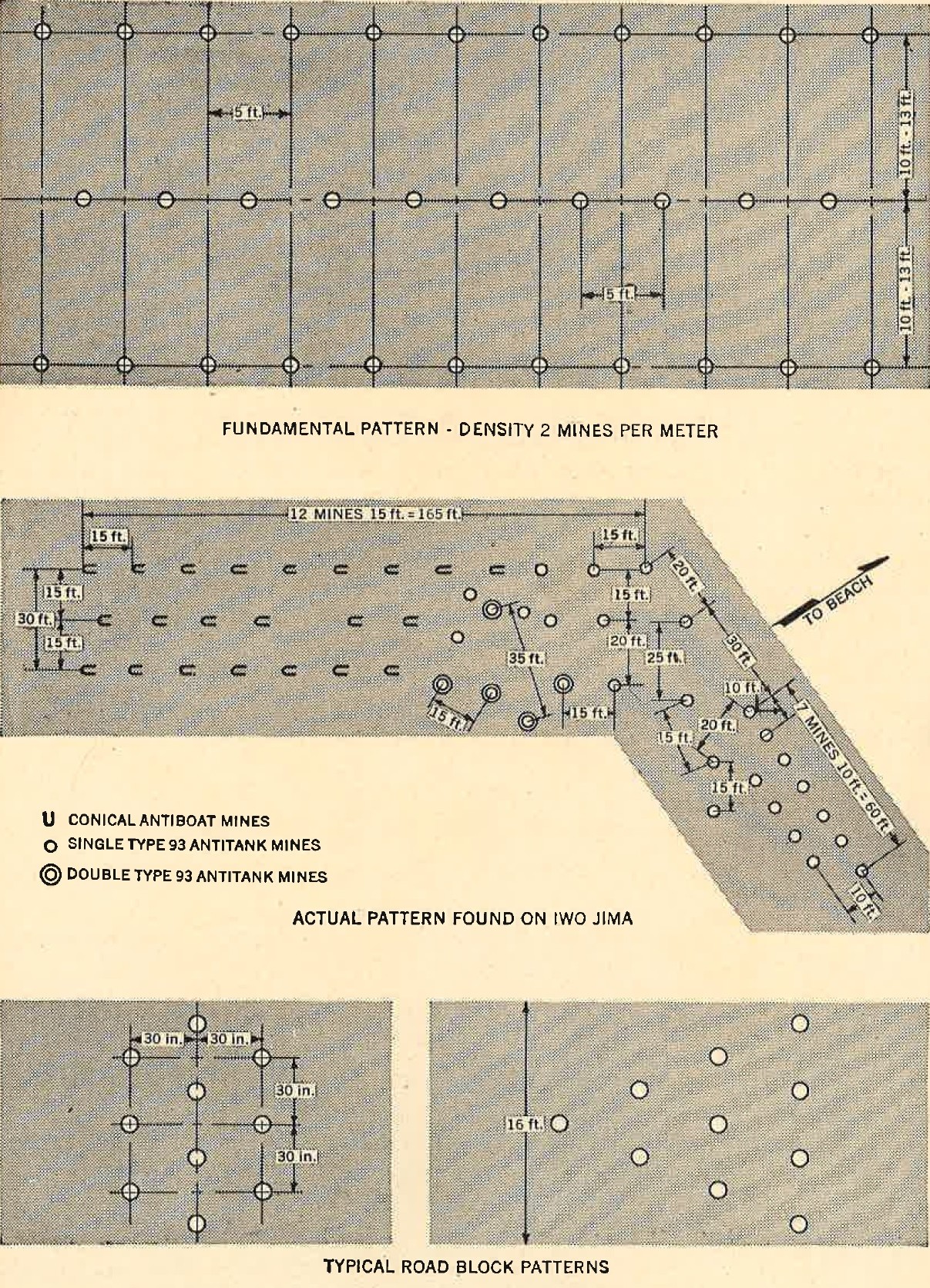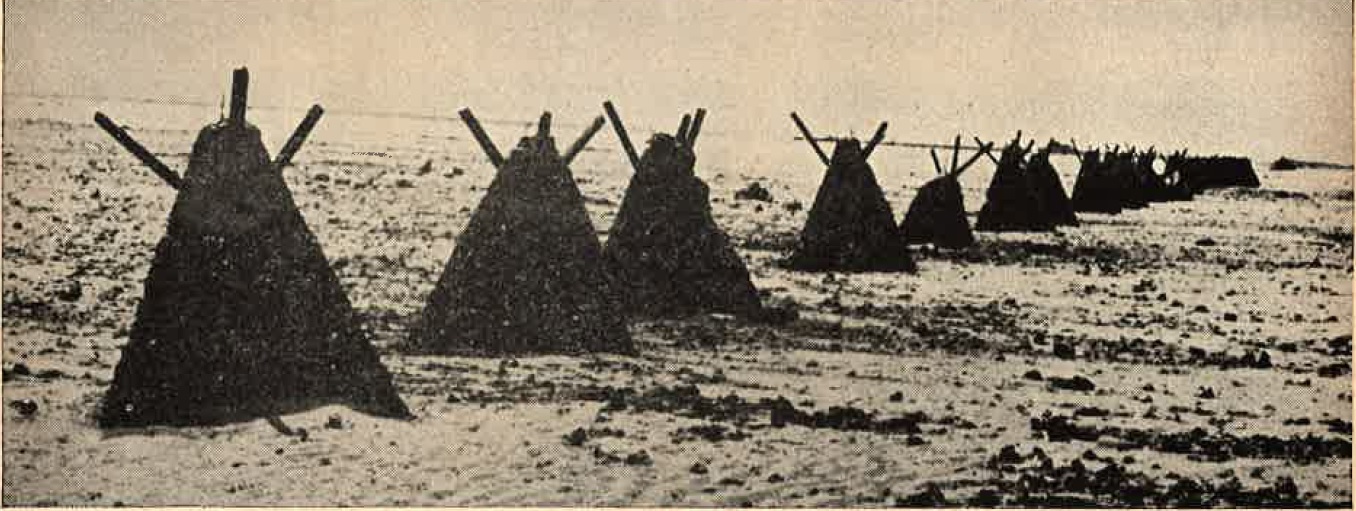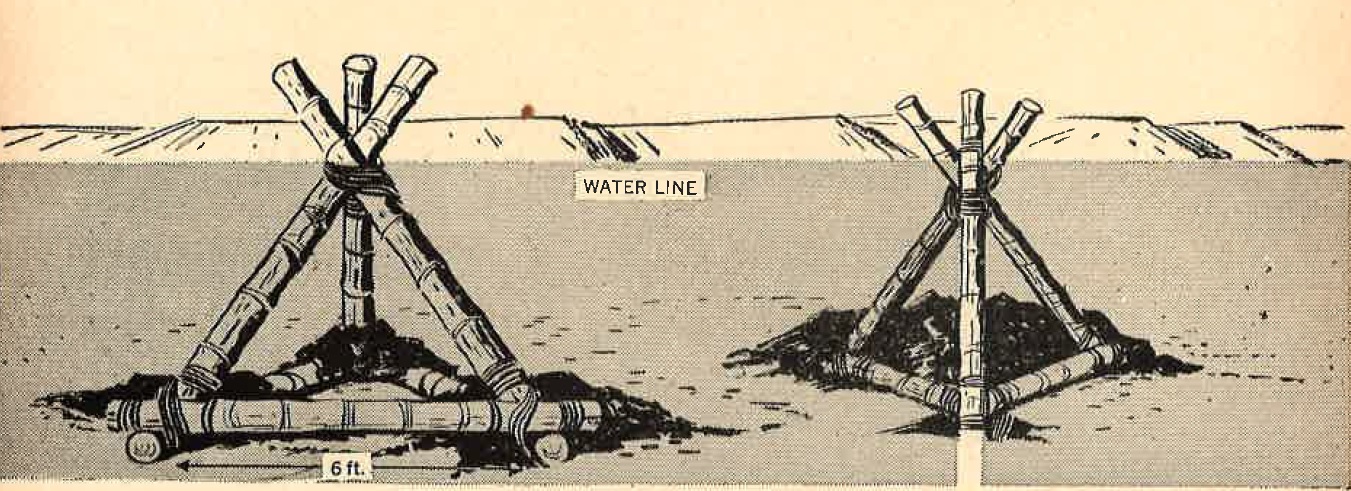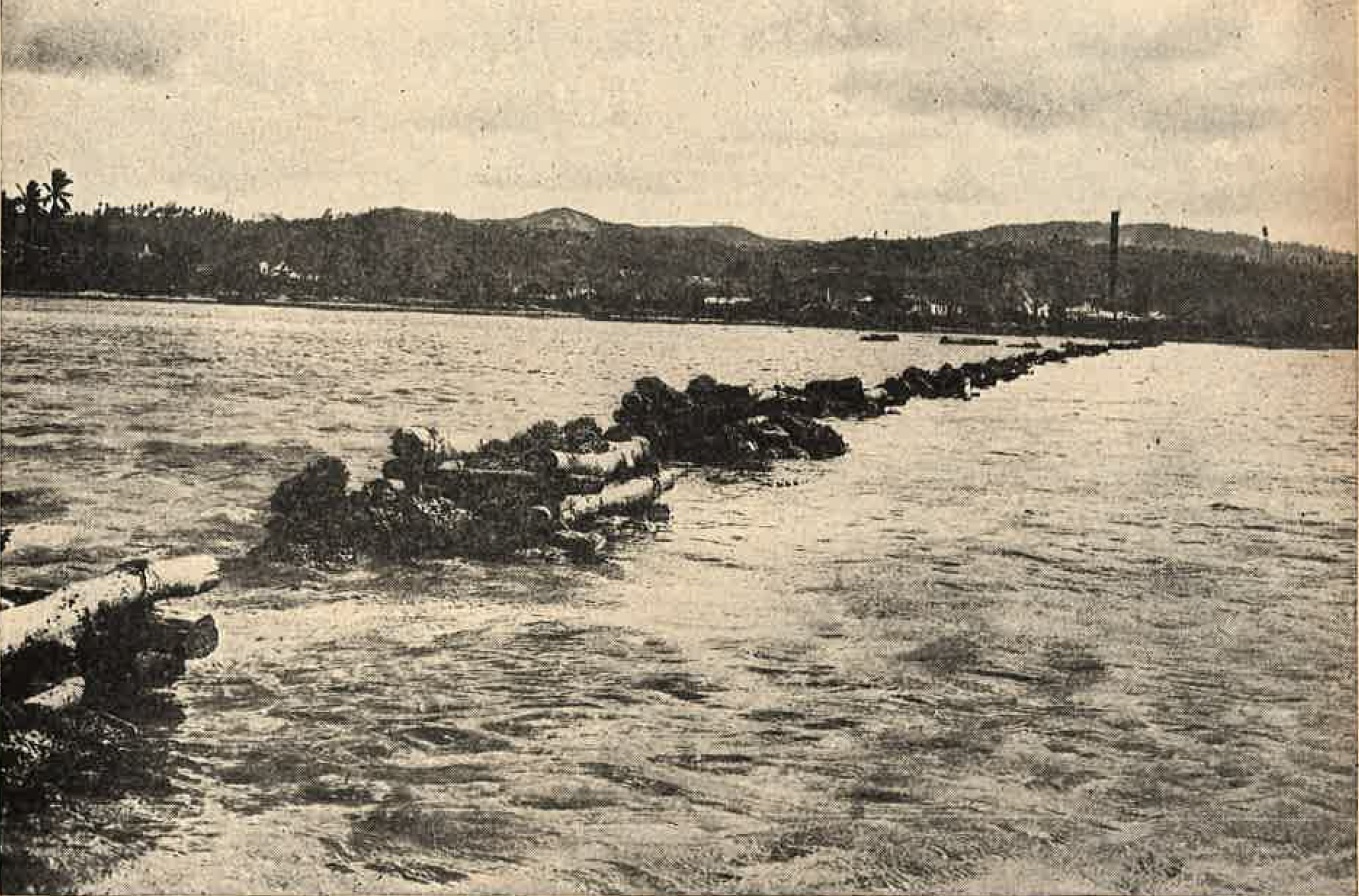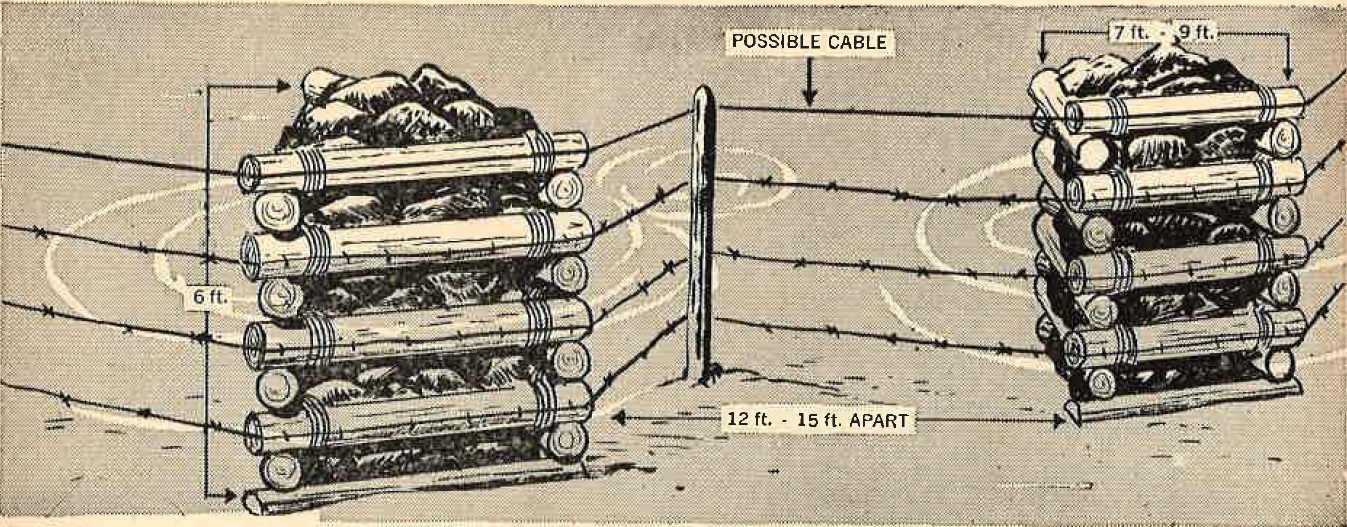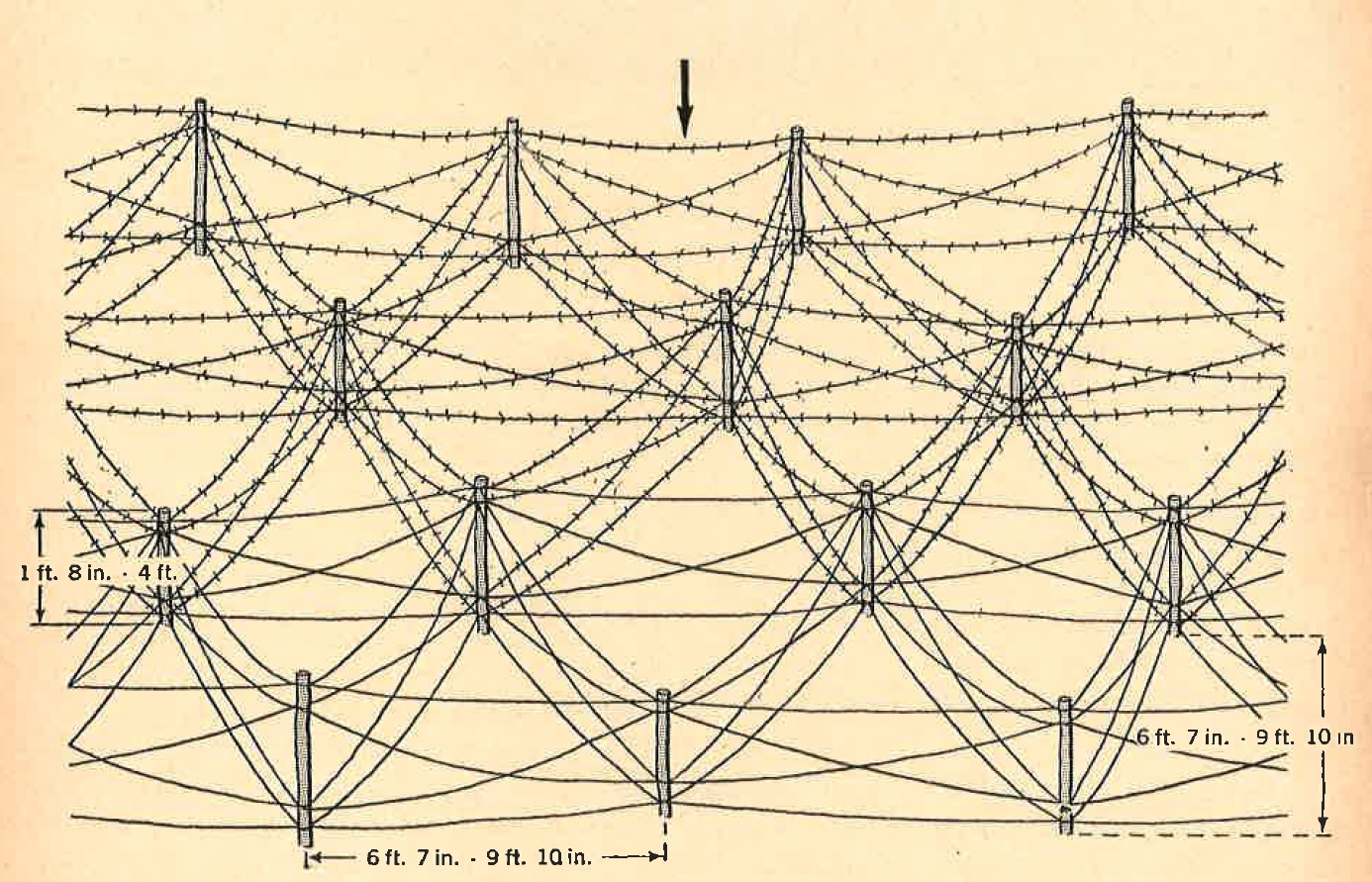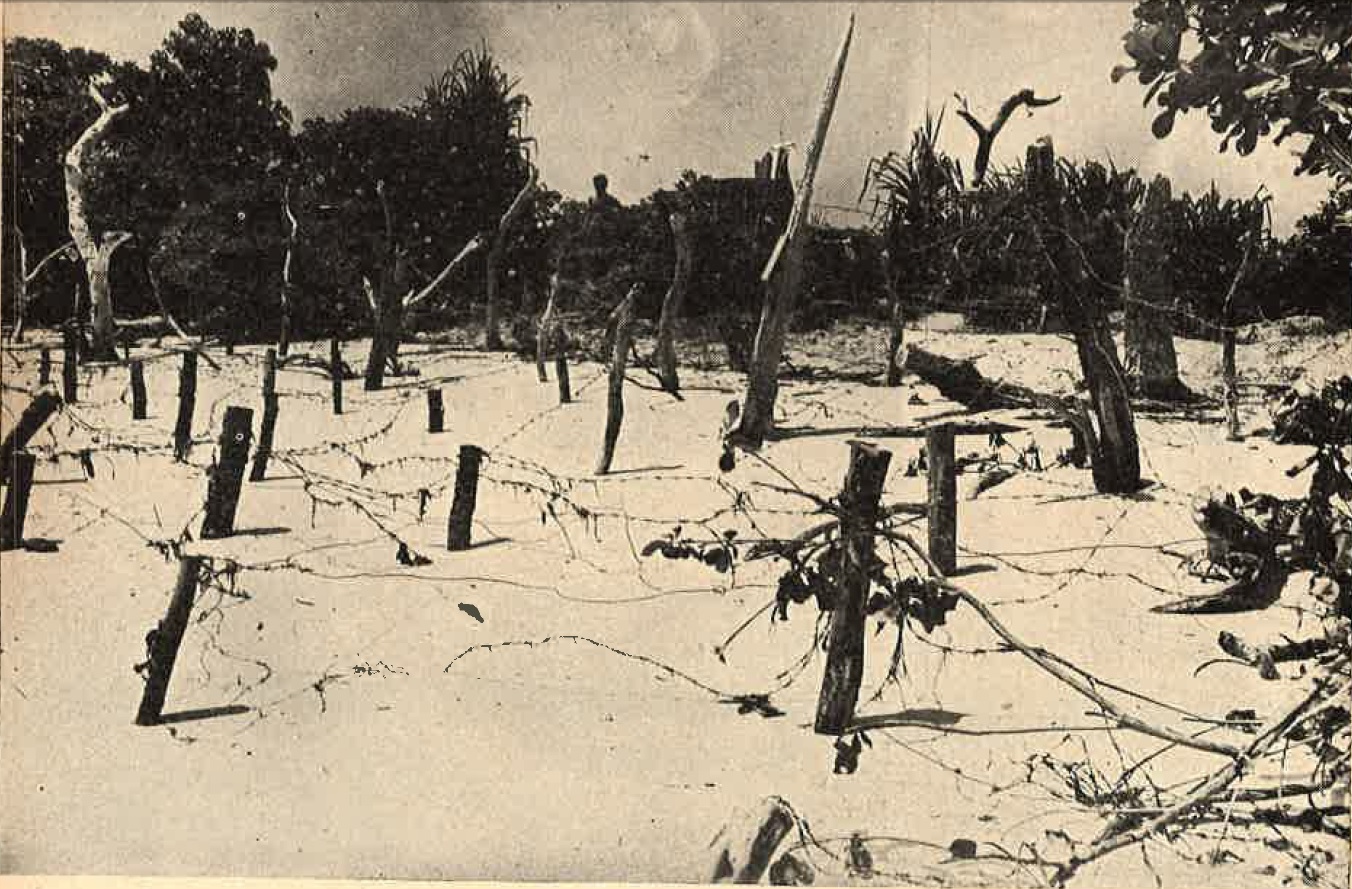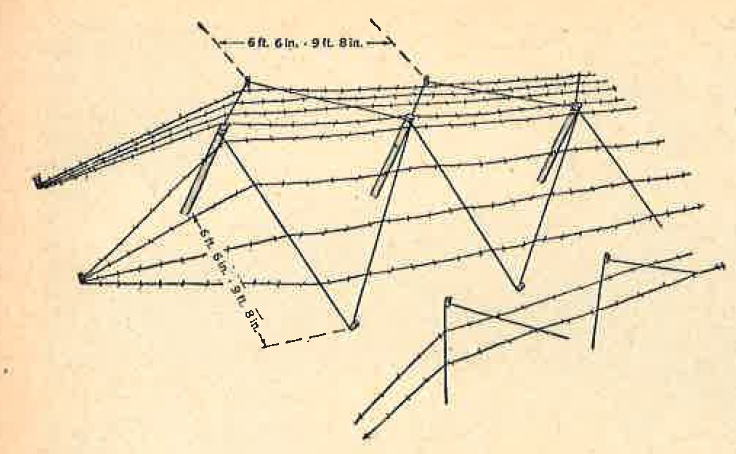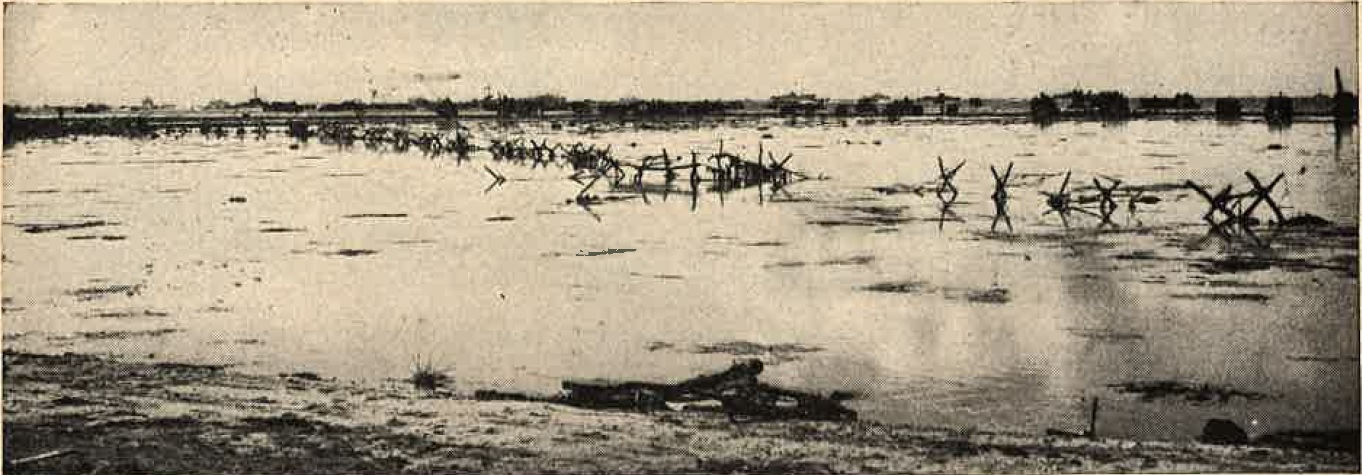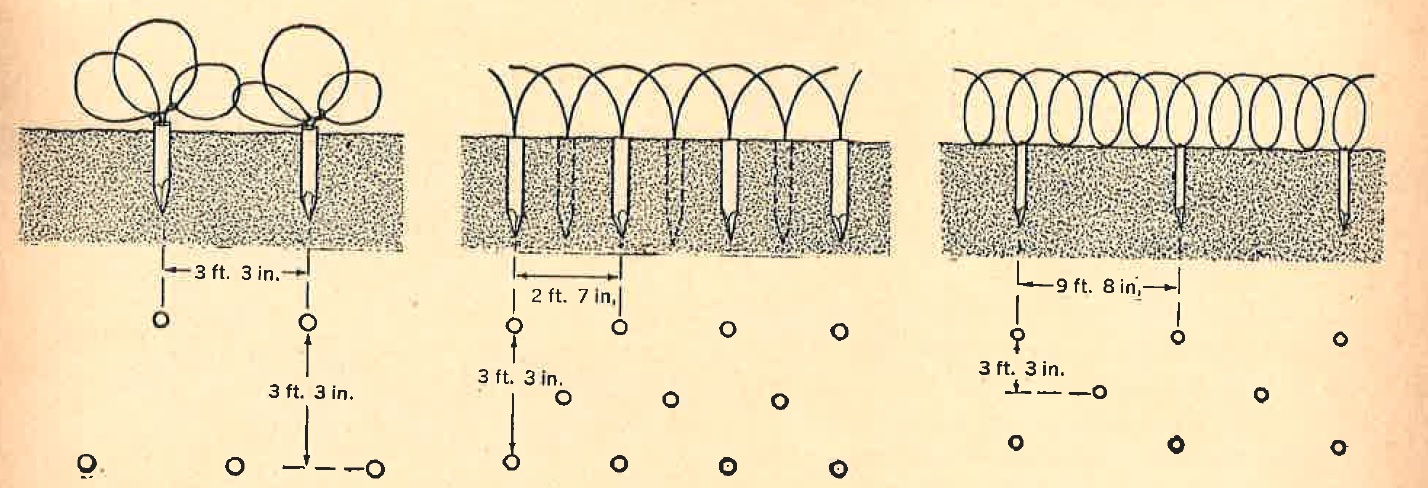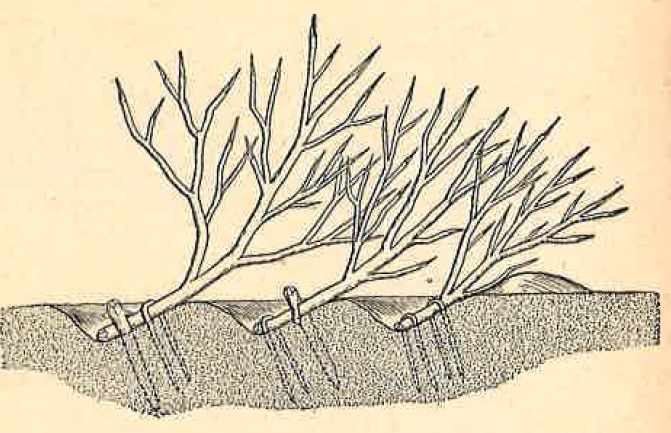CHAPTER 7 - WWII JAPANESE MILITARY TACTICS - SECTION 4

SECTION I - DOCTRINE.
1. GENERAL.
Japanese employment of fortifications is closely linked with their basic tactical aversion to the defensive. As a result of comparatively recent experiences, however, they have decided that their conventional perimeter-type defense is not satisfactory against an enemy with supeior naval and air power. On Peleliu, Iwo Jima, Okinawa, and in certain parts of Southeast Asia, the Japanese accordingly organized their defenses in considerable depth in order top assure the flexibility and elasticity which they now consider essential.
2. BASIC PRINCIPLES.
The Japanese have established certain principles and methods of construction for their fortifications, but actual practice seldon agrees with their textbook theories. Standard designs for permanent and field fortifications and obstacles have been provided, but construction varies in different localities according to the terrain and strategic importtance of the defended area.
Unlike Germany, whose fortified zones were confirmed to the European continent and followed certain general patterns, Japan has been compelled to fortify every conceivable type of terrain in widely separated regions form the tropics to the arctic. Consequently, Japanese fortifications generally will conform as nearly as possible to the surrounding terrain, and maximum use will be made of local and natural materials in their construction.
In outlying bases, concrete is used when other materials are not available, provided it can be shipped to the area. Where there are important strategic areas to be fortified, such as Saipan, Peleliu, Iwo Jima, and other areas in the inner zone inckuding the homeland, the use of concrete fortifications is specified and given high priority. When concrete works are used, they are supportedby open field works. These field fortifications are used to cover dead spaces, to engage enemy forces attempting to assault the concrete works, and to add some degree of flexibility to the beach line defense.
3. SITING OF FORTIFICATIONS.
Emplacements and pillboxes, designed to be mutually supporting, are covered by riflemen in field works around the position. The siting of fortifications isdetermined largely by the terrain as well as by the tactical requirements. Field of fire, observation, and natural obstacles are primary considerations, but, in many cases, concealment and inaccessability of positions take precedence over the other requirements.
Inmountainous terrain. or where there are hills coming down to the sea, defensive positions mey be sited inland or high ground overlooking the beaches. In this case, few obstacles may be found on the beaches themselves, but strong fire power will be available from well concealed and well constructed inland emplacements.
4. PERIMETER DEFENSE.
The early Japanese theory of perimeter type defense was followed primarily on coral atolls or islands, the narrowness of which greatly limited, but did not prohibit, some defense in depth. In such situations, defensive works have been found in a continuous band manned by troops who were committed to action from the outset. Antitank ditches, barbed wire, and strong points, consisting of groups of pillboxes, were laid out in accordance with the nature of the ground and the best approaches from the sea,
5. USE OF SHELTERS DEFENSE.
6. COMMUNICATION TRENCHES.
7. CAMOUFLAGE.
With few exceptions, Japanese defense installations are not only substantially constructed, but well concealed. The Japanese are expert in methods of using natural materials to blend their installations into the surrounding terrain. Wherever possible, living vegetation in the form of vines, bushes, and weeds is planted to provide effective concealment. IN barren rocky areas, the rocks themselves are used for camouflage purposes.
When no natural materials are available, artificial materials in the form of nets and paint are used. The Japanese are not very proficient in applying paint to their larger installations as a camouflage measure, and such positions therefore are usually easy to detect.
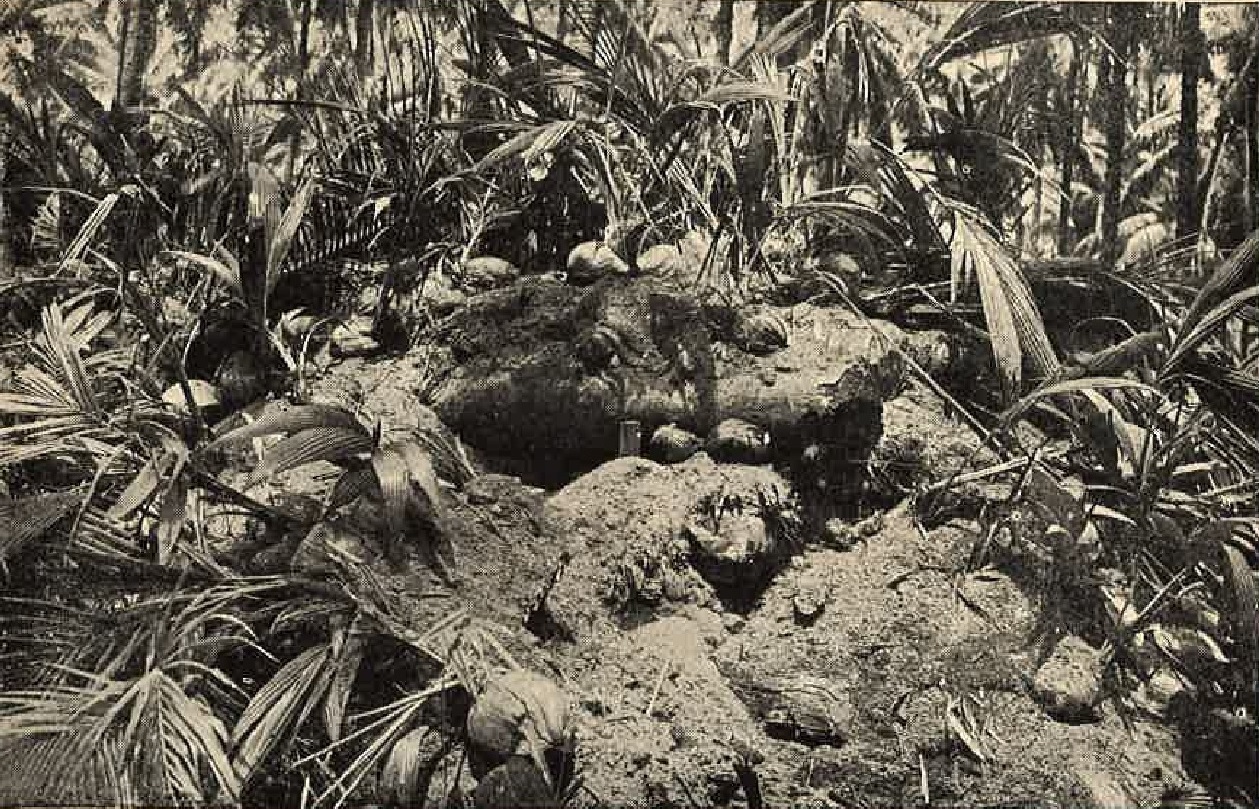 |
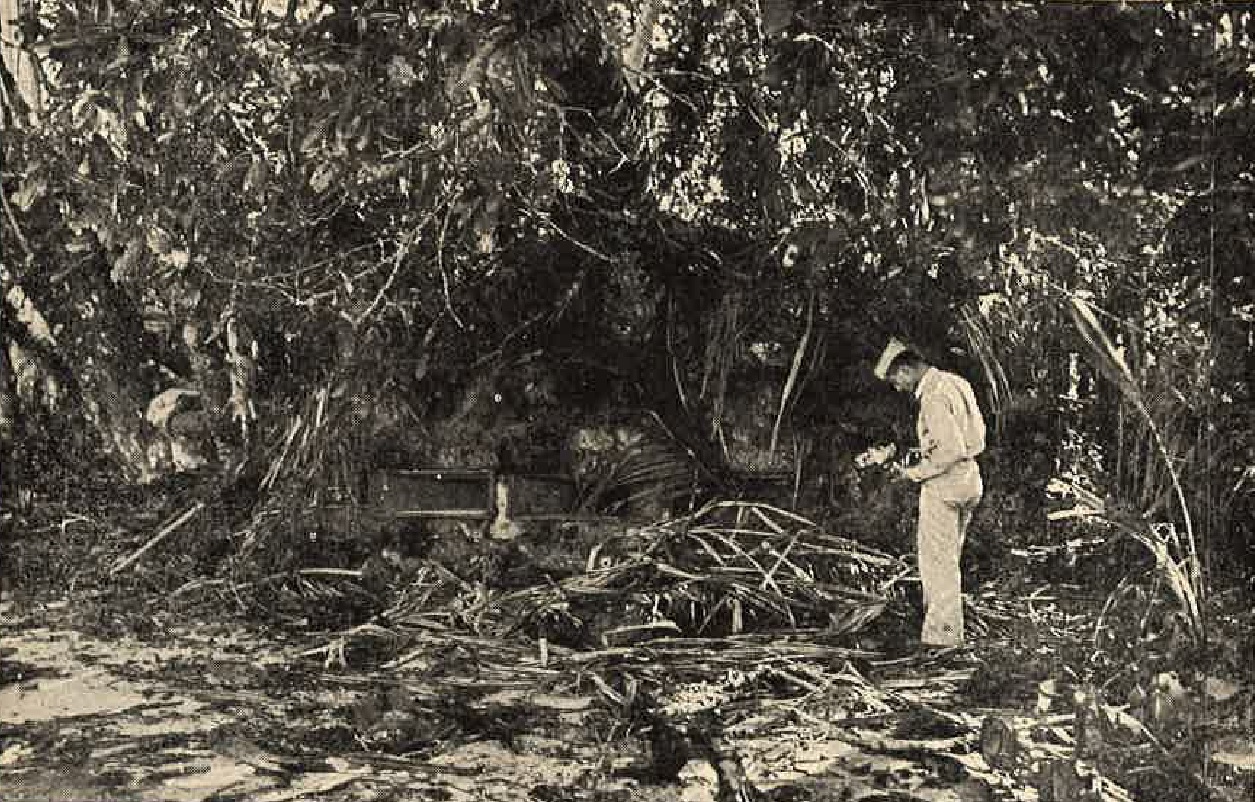 |
Much of the camouflage used in connection with Japanese defenses takes the form of deception.
Dummy gun emplacements are frequently encountered. While many of the earlier ones were rather crude and eneffective, dummy positions recently have appeared that were quite realistic and difficult to differentiate from the real emplacements.
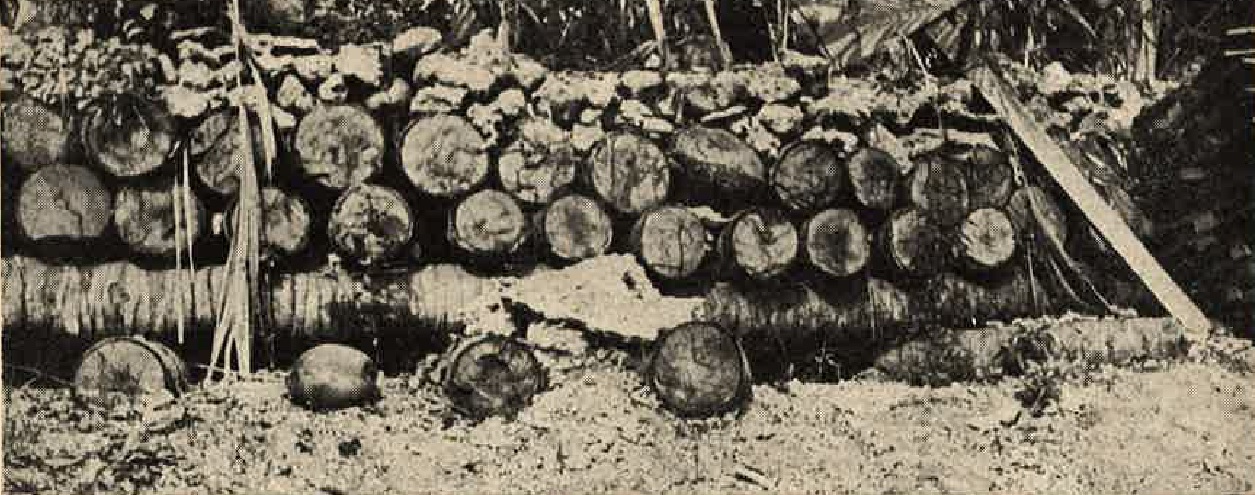 |
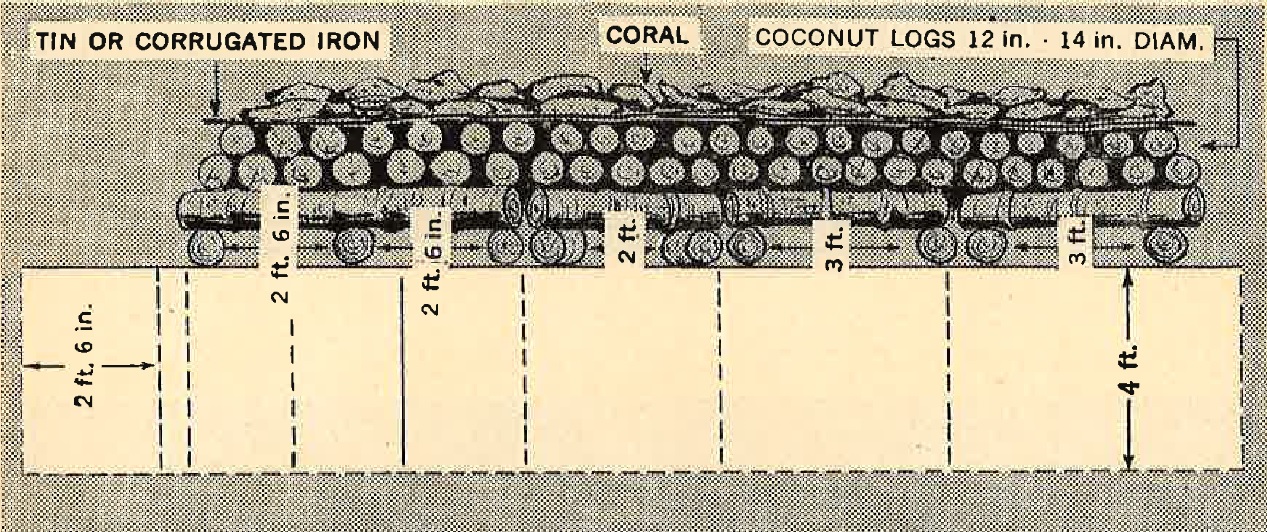 |
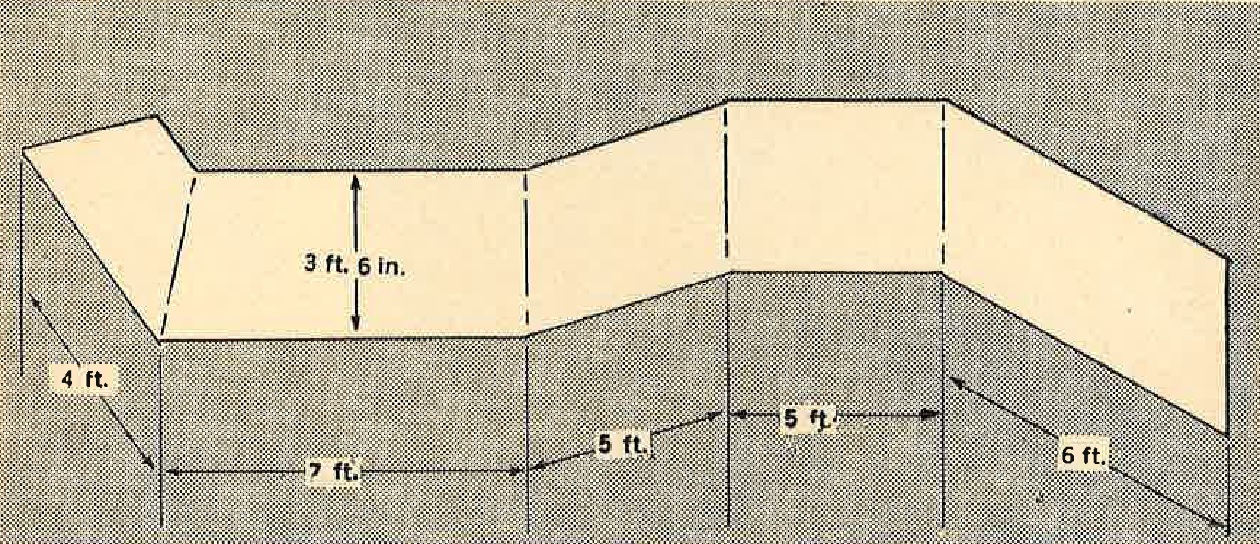
Figure 3. Typical log-and-earth construction.

SECTION II - PERMANENT FORTIFICATIONS.
1. CHARACTERISTICS.
a. Siting. The spacing of permanent structures has varied in different areas, and also within individual sites. In the Gona locality in New Guinea, one and two man log pillboxes were found only 3 to 5 feet apart over an extensive area. Six man pillboxes were found in the same locality 30 to 50 feet apart.
Still others have irregular shapes. The thickness of roof and walls varies from 8 inches to 5 feet, and there may be from 2 to 8 feet of earth and other natural materials covering the structure.
Apparently there is no relation between the size of structures and the thickness of their roof and walls. some of the largest concrete air raid shelters have roof and walls measuring only 2 feet thick, while those command posts often are 3 to 5 feet in thickness.
2. CONSTRUCTION.
a. Log-and-earth type installations. In heavily wooded or jungle terrain, positions are usually well dug in and then built up with a framework of log columns and beams. Walls are revetted with additional logs.
The logs vary in size fron 4 inches to 24 inches in diameter, the average being 12 inches. As many as four thicknesses of logs are used to form the roof of the structure. This in turn is covered by alternating layers of dirt or sane and rocks, the whole cover varying in thickness from 2 to 8 feet.
Fuel drums filled with earth may be used instead of logs to reinforce the walls of the installation and to form weapons embrasures. When available, railroad ties and rails are used for reinforcing purposes.
Coconut palm logs are the type most commonly used in the pacific theater, because they are usually easily obtainable in most tropical islands, and are more splinter proof against bombs and shells than other types of logs. However, upon aging, these logs tend to become soft and spongy, and instances have been noted where .30 caliber bullets had perforated 12-inch logs.
The logs are joined together in several different ways. The majority of them have been fatened together with staples, but wire has laso been used for this purpose.
Some logs are notched and recessed at intersections, while some are merely driven into the ground side by side. The best use of available construction materials seems to be the only governing principle.
Compared with concrete installations, the log-and-earth type are naturally weaker, but generally a direct hit from a bomb or heavy shell is needed to reduce completely one of the positions.

Figure 8. Pillbox camouflaged with earth and cut vegetation. |

Figure 9. Pillbox camouflaged with live vegetation. |
Generally, the concrete was considered to be inferior to U.S. concrete, and in some cases there is specific proof that this was the case. It was noticed also that the strength of the concrete varied in different areas. The concrete used in fortifications on the Marshall islands was weaker than that used in Tarawa. On Kwajalein Atoll, the strength varied on different islands; in comparison with the class A concrete expected to be found in modern fortifications, it was all of very poor quality.
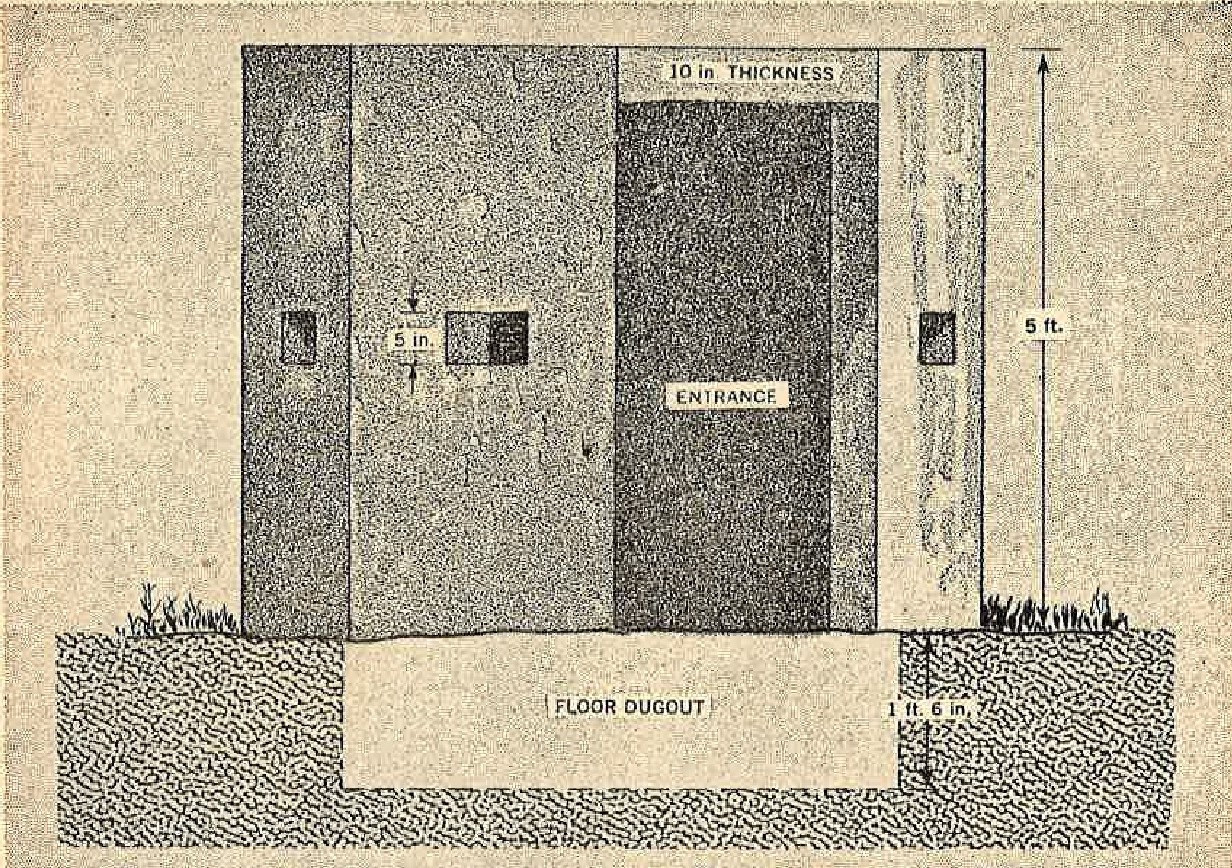 |
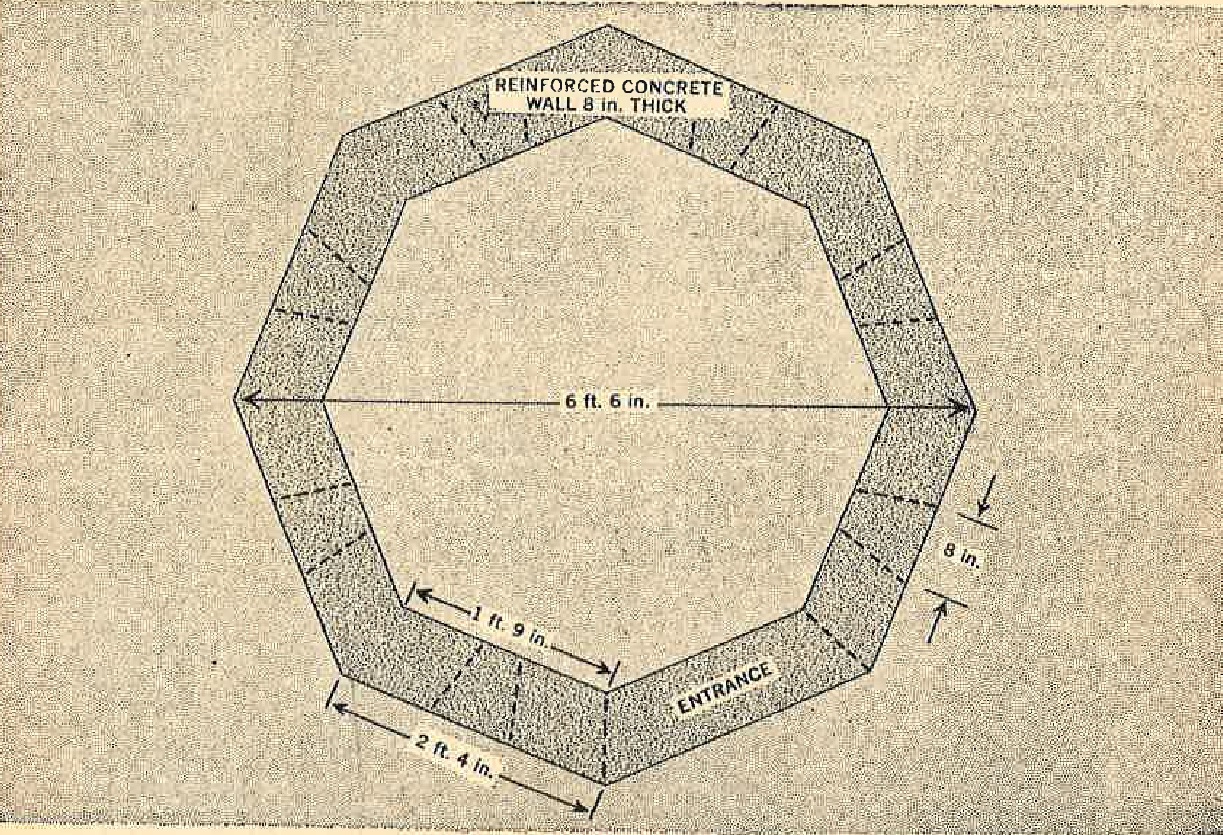 |
There are several probable reasons for the inferior grade of Japanese concrete encountered thus far (1944). On many of the islands crushed coral was used as an aggregate, and this is a poor material for that purpose in comparison with crushed stone. Salt water in mixing also weakened the concrete, and in many cases insufficient cement was used. Then, too, the Japanese are not experts at pouring concrete, as eveidenced from lines of cleavage observed in many of their structures.
Analysis of concrete used in the Marshalls disclosed numerous air voids, an indication of hasty construction. These voids, in addition to the coral aggregate used, would account for the low density and strength of the finished concrete. Japanese concrete found in the Marianas, the Palaus, and on Iwo Jima, however, seems to be of much higher quality, and this will probably also be true of concrete in defense installations on the homeland.
| Classification | Standard of Strength | Reinforced concrete | Coral and rock wall | Piled rock and brick | Regular soil | Notes |
| Special A | Safe against direct hit of 1-ton bomb or 16-inch shell. | 9.75 feet. | 16.5 feet. | ----- | ----- | Utilize the steep sloped cliffs and rocks and make a gallery type shelter. (cave). |
| Special B | Safe against direct hit of 500-pound bomb or 8-inch shell. | 5 feet. | 8.25 feet. | ----- | ----- | Utilize the steep sloped cliffs and rocks and make a gallery type shelter. (cave). |
| A | Safe against direct hit of 220 pound bomb or 6-inch shell. | 2.6 feet. | 5 feet. | 6.5 feet | 26 feet. | Construct principally with reinforced concrete, rock, or hard wood. |
| B | Safe against hit of 100-pound bomb or 3-inch shell. | 1.6 feet. | 2.6 feet. | 4 feet. | 16.5 feet. | Construct principally with reinforced concrete, rock, or hard wood. |
| C | Safe against 35-pound bomb or live fragments. | 1 foot. | 1.6 feet. | 2.3 feet. | 6.5 feet. | Construct principally with reinforced concrete, rock or hard wood. |
| D | Safe against 13-mm or smaller MG bullets and small live fragments. | 2.5 inches to 4 inchs | 9 inches | 9 inches | 3.25 feet | -------------- |
| Classification | Types of terrain and soil | Installations | Notes |
| Special A | Rocky place or steeply sloped terrain. | Important CP, OP, or radio communication post. | Cave type. |
| Special B | Rocky or steeply sloped place. | Important shelter or cover. | Cave. |
| B | Gravel beach | Vital gun (flank protecting artillery) emplacements or CP. | Reinforced concrete. |
| A | Rocky place or gravel. | Important gun emplacements (guns bigger than MGs), CP of high officer, OP, important radio communication pot, and shelter for important gun. | Mainly reinforced concrete. |
| B | Place that would be hard for enemy to destroy. | Gun emplacement (guns bigger than MGs), shelter (for personnel, arms, and ammunition), CP for lower ranking officers and OP. | Principally reinforced concrete, piled rock, dirt and wood. |
| C & D | Place where there is not much danger of enemy fire. | Heavy-weapons emplacement and reserve position of the same; main LMG position; lookkout station; shelter for several men; small ammunition storage place; and shelter for arms, food, and water. | Mainly of dirt and wood, and piled rocks. |
injuring the occupants. Often a small ditch is prepared in front of embrasures of Japanese pillboxes to catch debris and earth dislodged by exploding shells and bombs, thereby preventing the obstrution of the embrasures.
Pillboxes constructed of natural materials such as logs, rocks, earth, and sand are comparatively easy to camouflage, since materials used for consructionblend with the area where the installation is sited. Good camouflage is the rule rather than the exception with the Japanese, and it is possible to approach within 50 feet of these pillboxes and not detect them.
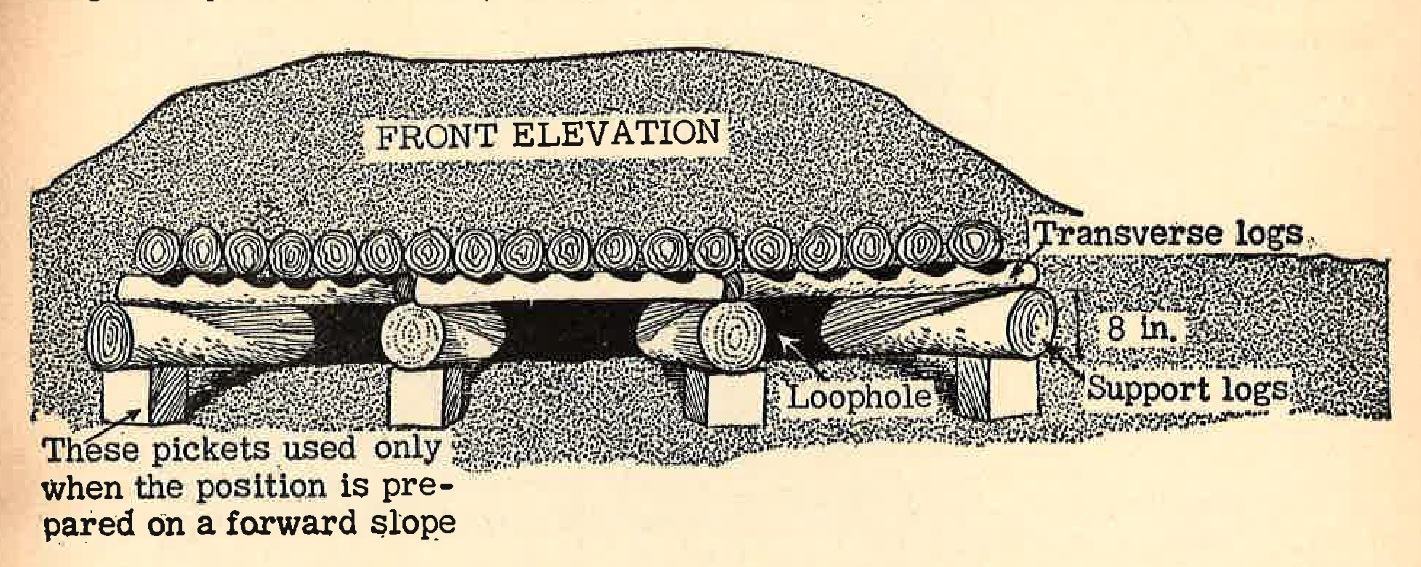 |
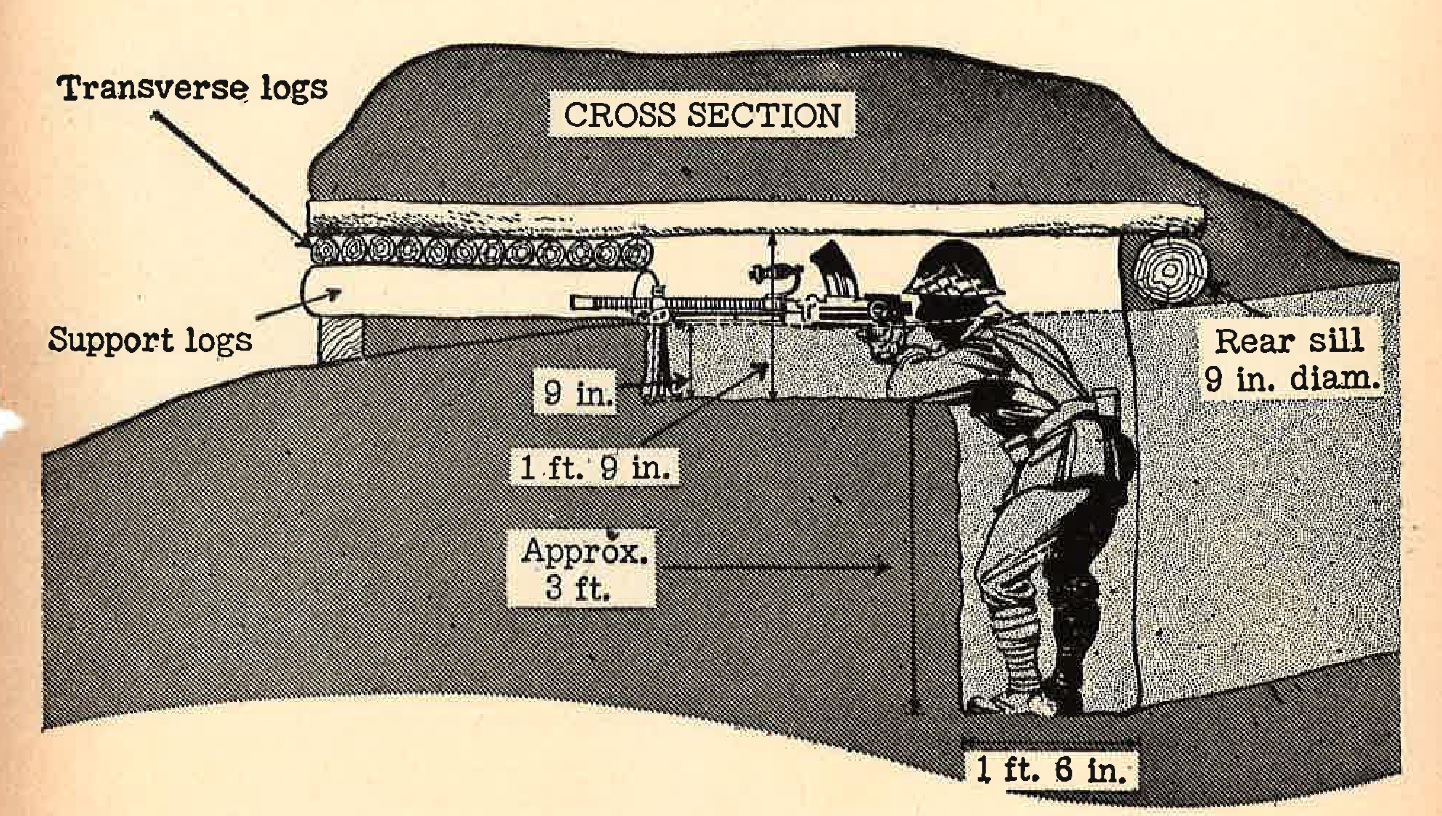 |
Examples of camouflaged log-and-earth type pillboxes are seen in Figures 8 and 9. In viewing these illustrations, it should be remembered that most of the natural camouflage had been removed in order to disclose the installation itself.
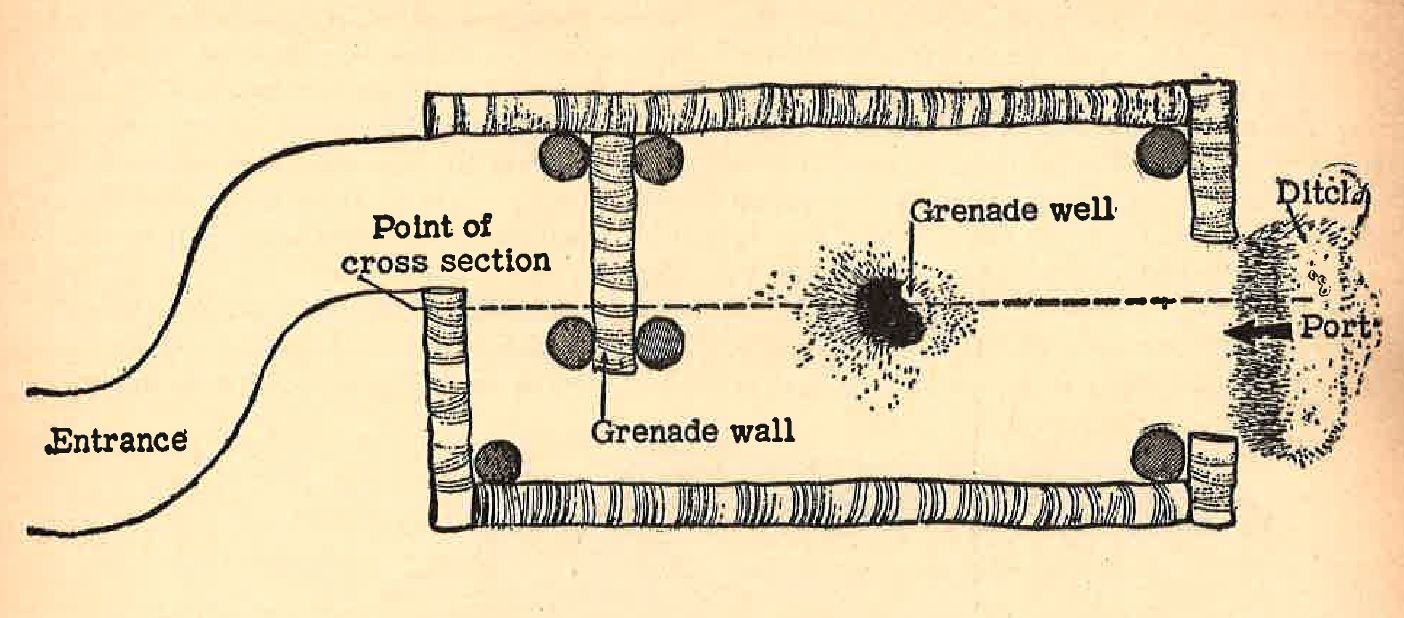 |
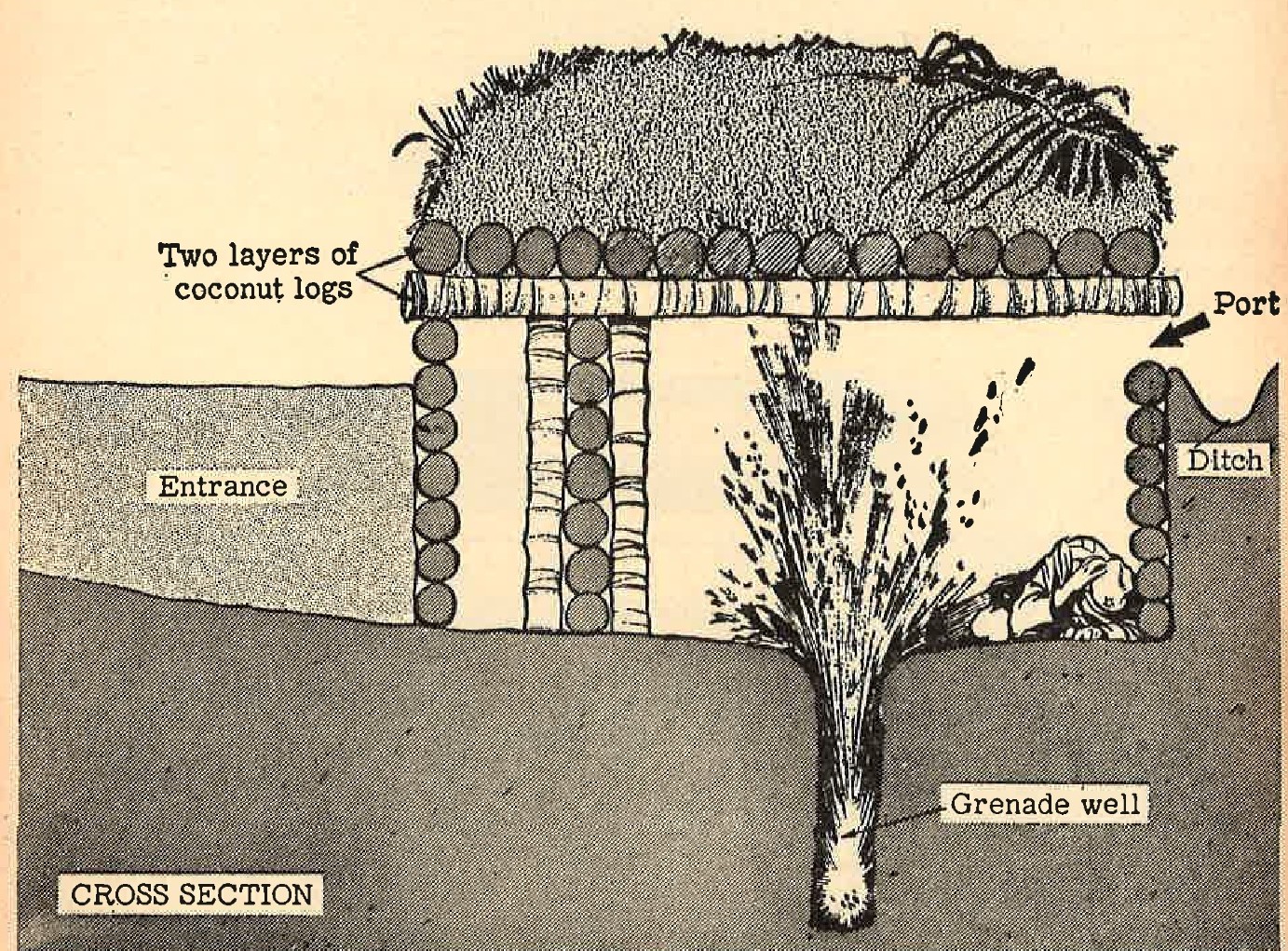 |
(2) Concrete type. Although several designs for concrete pillboxes have been standardize, the Japanese seldom adhere to them in the field. One type, however, which has appeared in the Marshall, Marianas, and Palau islands, and whihc may be considered standard, is the circular German-Type pillbox, often referred to as a "blockhouse".
This is one of the strongest known Japanese pillboxes, it is 40 feet in diameter, with walls 4 feet in thickness and a ceiling of 2 1/2 feet thick. The concrete is reinforced with four rows of double 1-inch steel bars, placed in criss-cross pattern at intervals of 6 inches.
The walls on the interior are wainscoated to a height of 2 feet and lined with a thick layer of rock wool. This acts as some measure of protection against spalling of the concrete and also aids in moisture prevention. Other details can be seen in Figure 14.
Reinforced concrete pillboxes similar to this octagonal shpaed structure are very often used as sniper posts and placed at cross roads and road junctions. The average size is about 6 1/2 by 6 1/2 by 5 feet. The walls are 8 inches thick, while the roof is 10 inches in thickness. Seven embrasures provide fire in all directions. The concrete is usually painted green to match the foliage, and because of its small size the structure is very easy to camouflage.
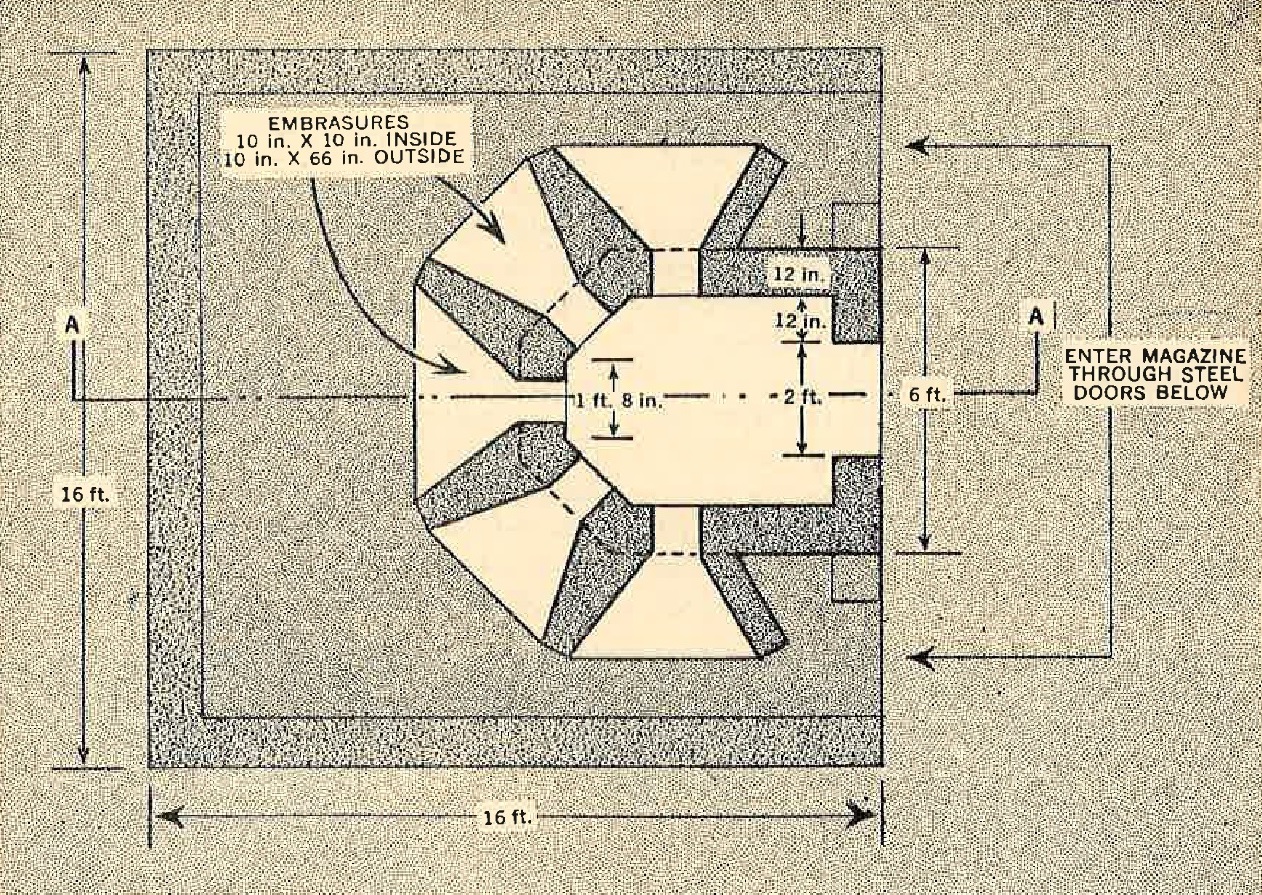 |
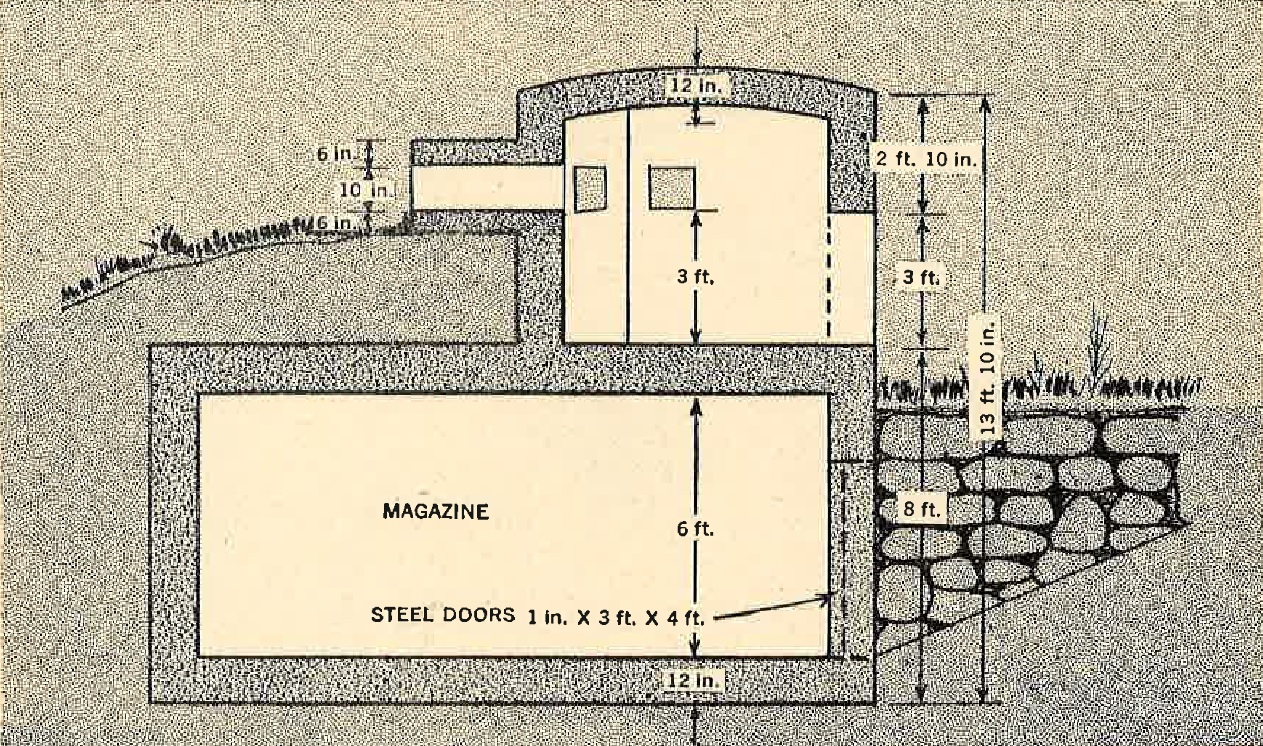 |
Figure 21 illustrates this type of structure. It was excavated in solid coral limestone and then lined with 8-inch logs on both roof and walls. A sheet of corrugated tin was placed over the logs on the roof, and coral and rock were piled on this for a thickness of 3 feet.
In all of these casemates a ramp is provided, usually in the rear, sometimes on the side, for removal of gun.
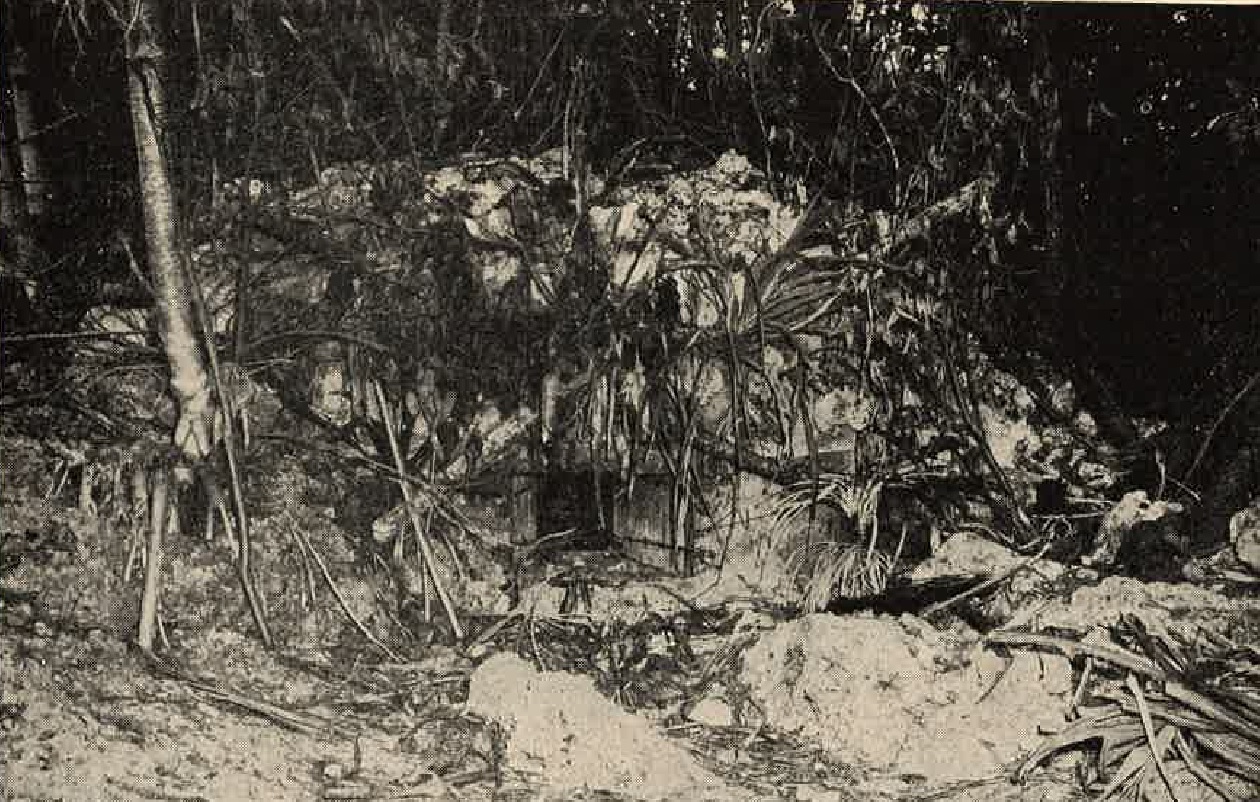 |
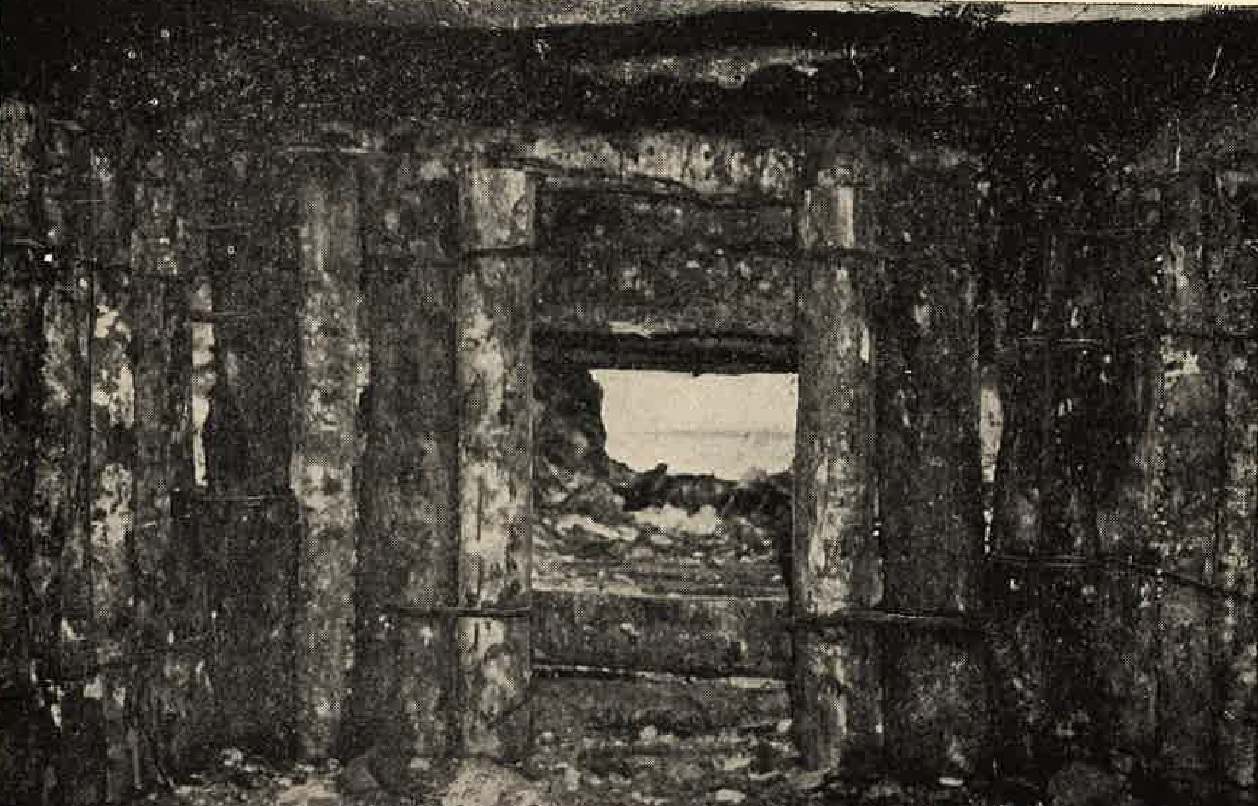 |
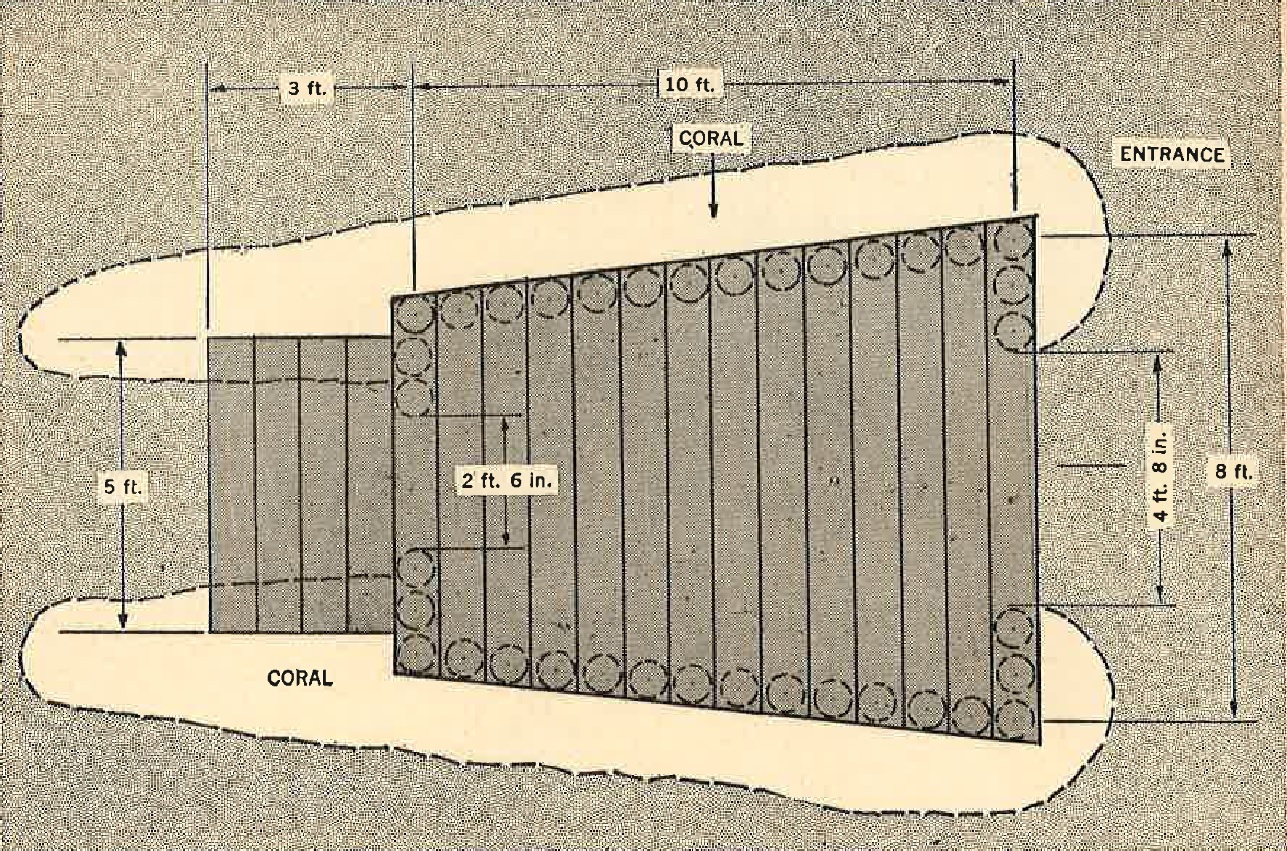 |
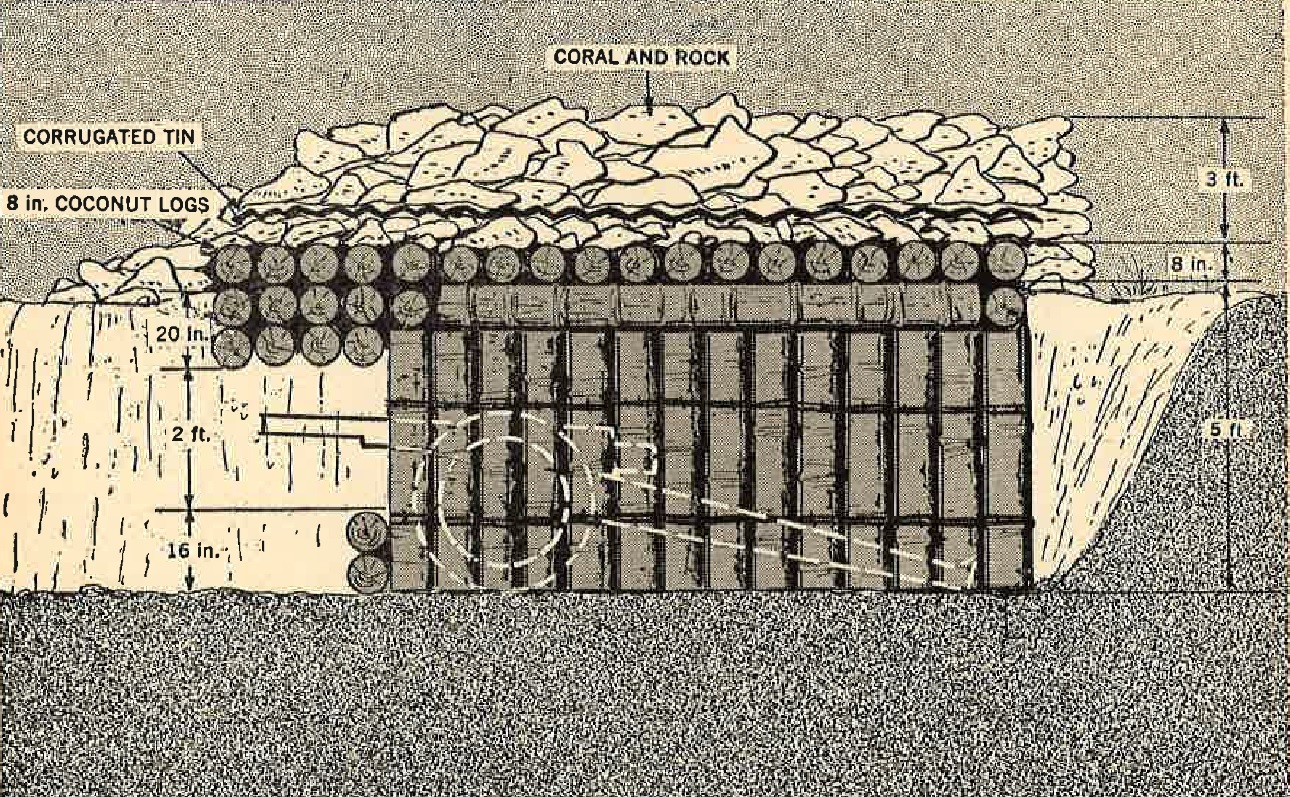 |
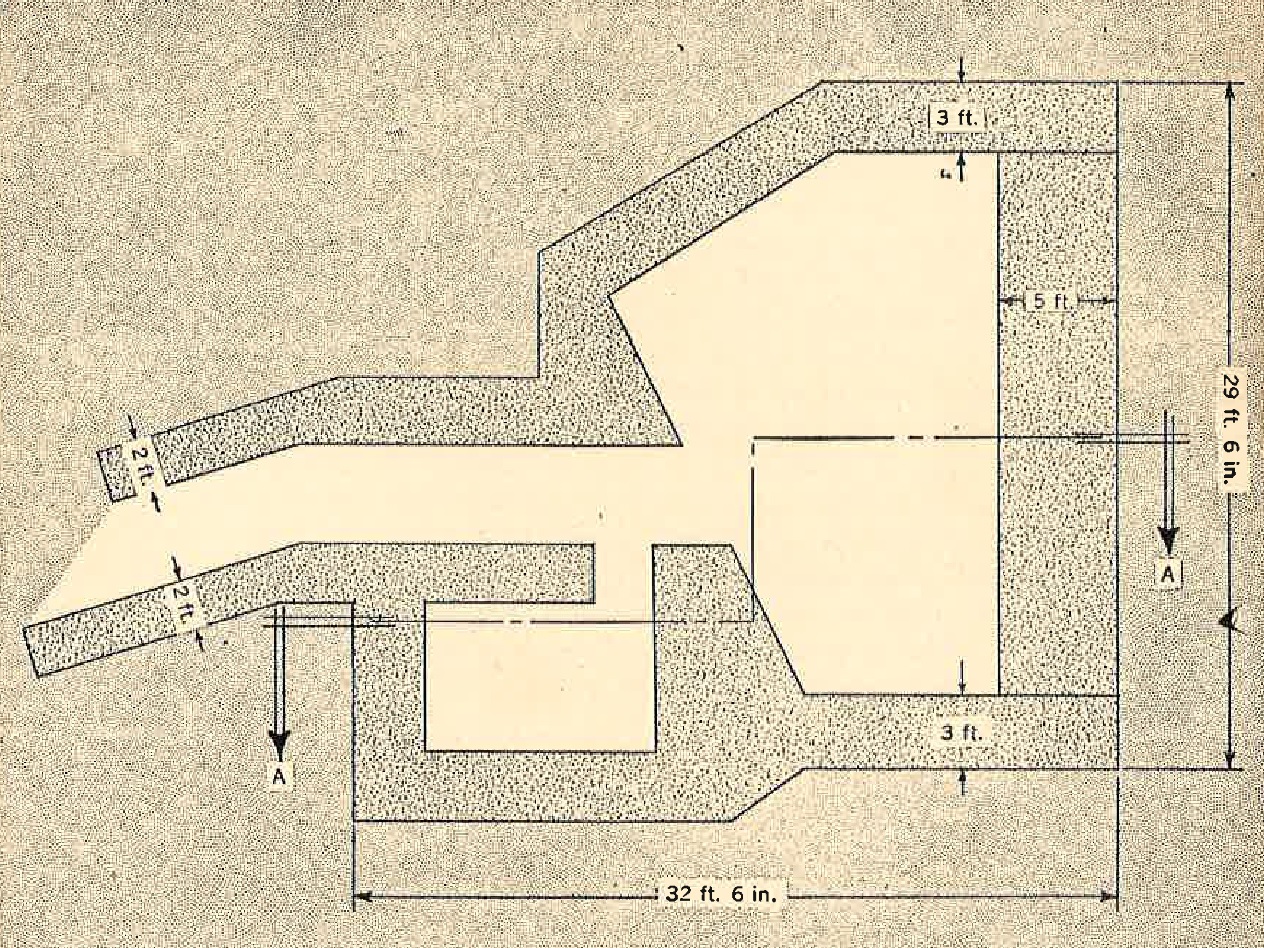 |
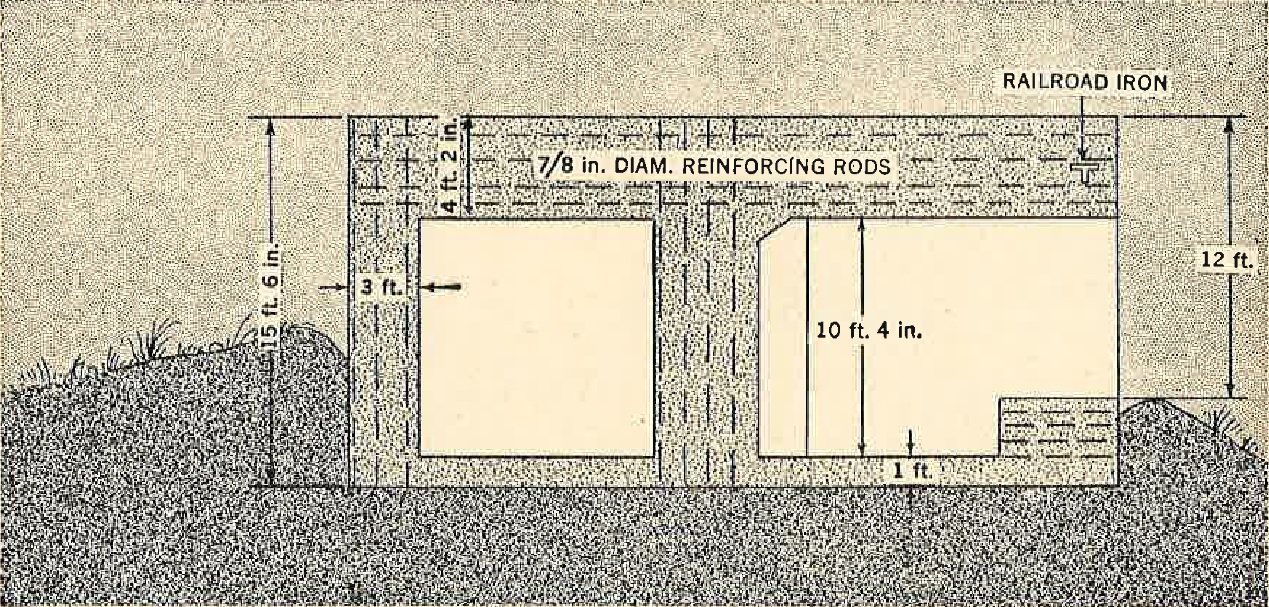 |
This installation, found in Peleliu, had walls 2 feet thick. The roof consisted of 3 1/2 feet of reinforced concrete and 4 feet of 12-inch logs surmounted by vegetation.
A design similar to this type was used in several pillboxes on Okinawa. The smaller embrasure was used mainly as an observation port by the gun captain in viewing his field of fire. These pillboxes were provided with a slab of concrete about 6 inches thick, which could be placed over the embrasure for protection and some concealment. The slabs were covered on the outside with paper about the same color as coral background for additional concealment.
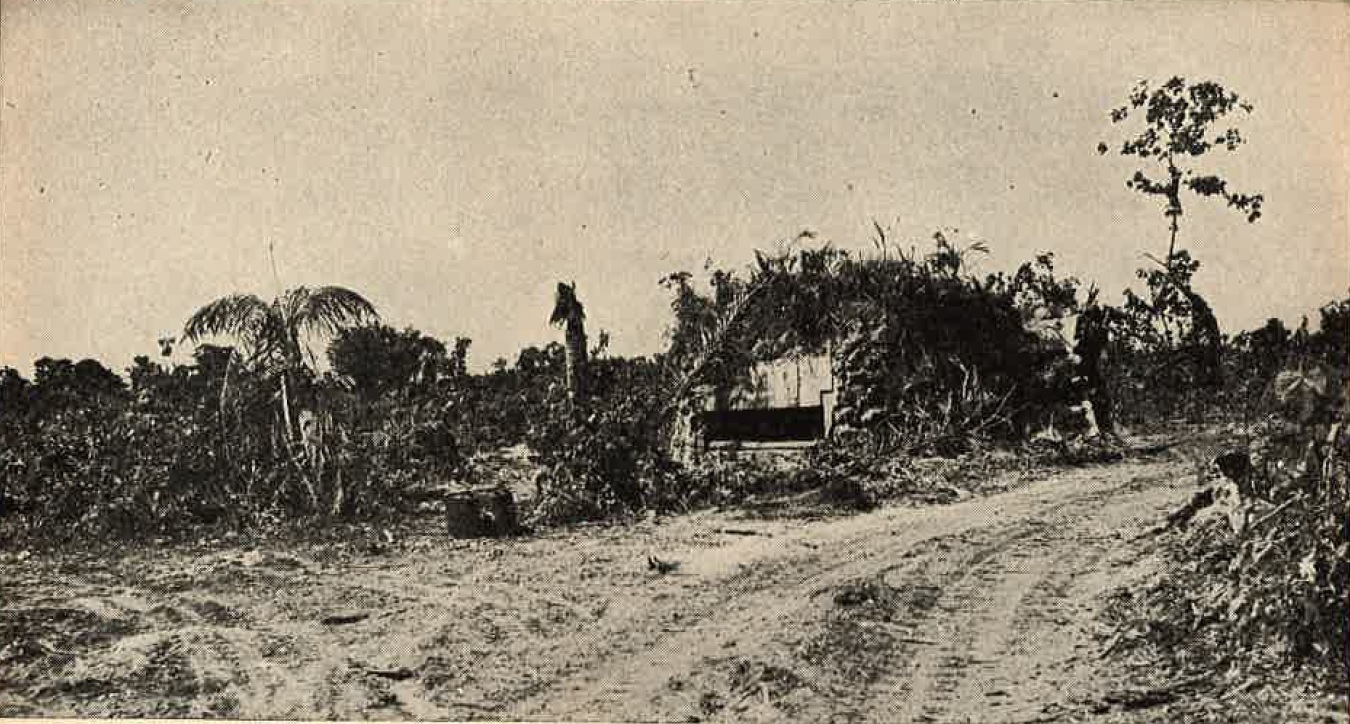 |
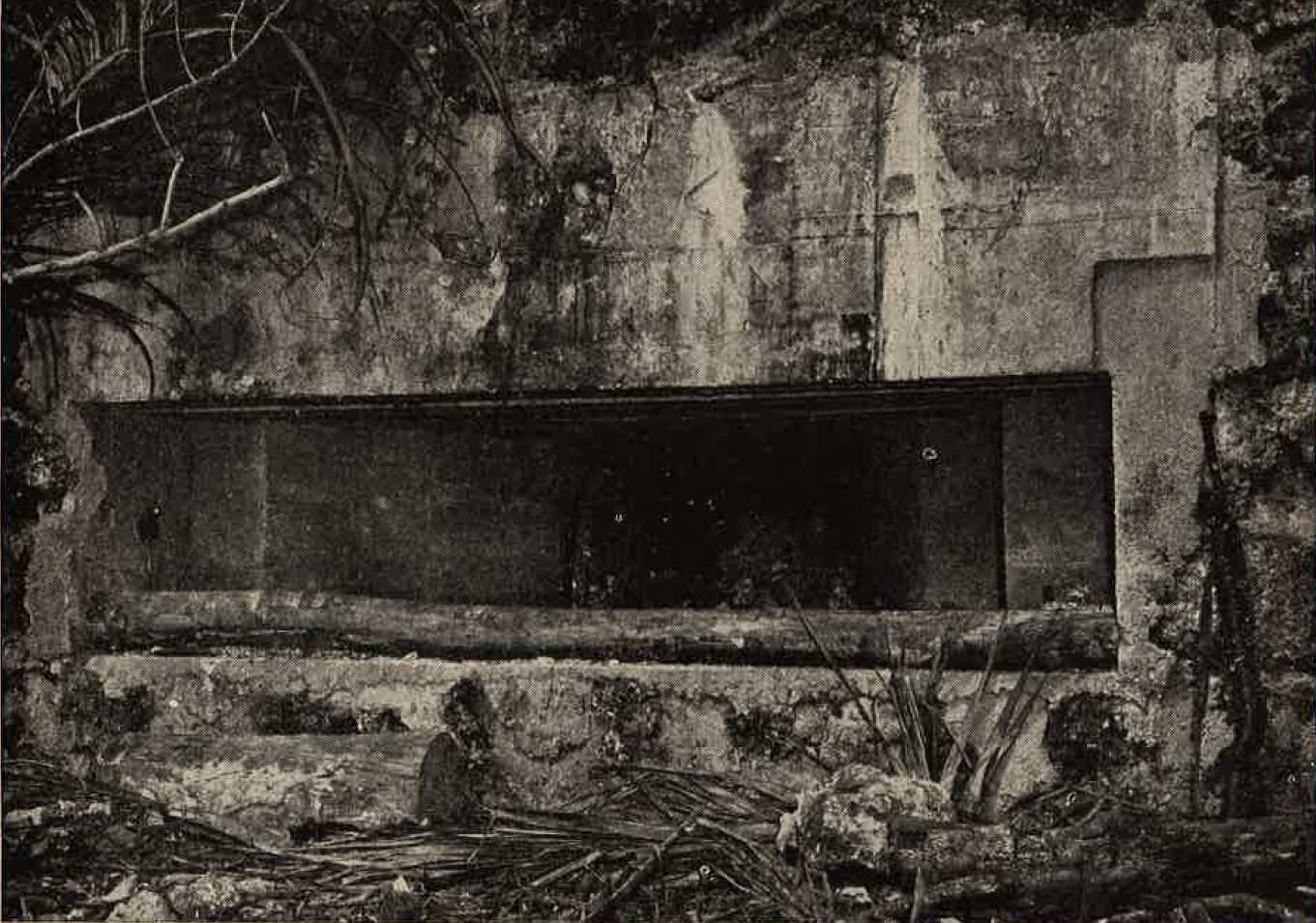 |
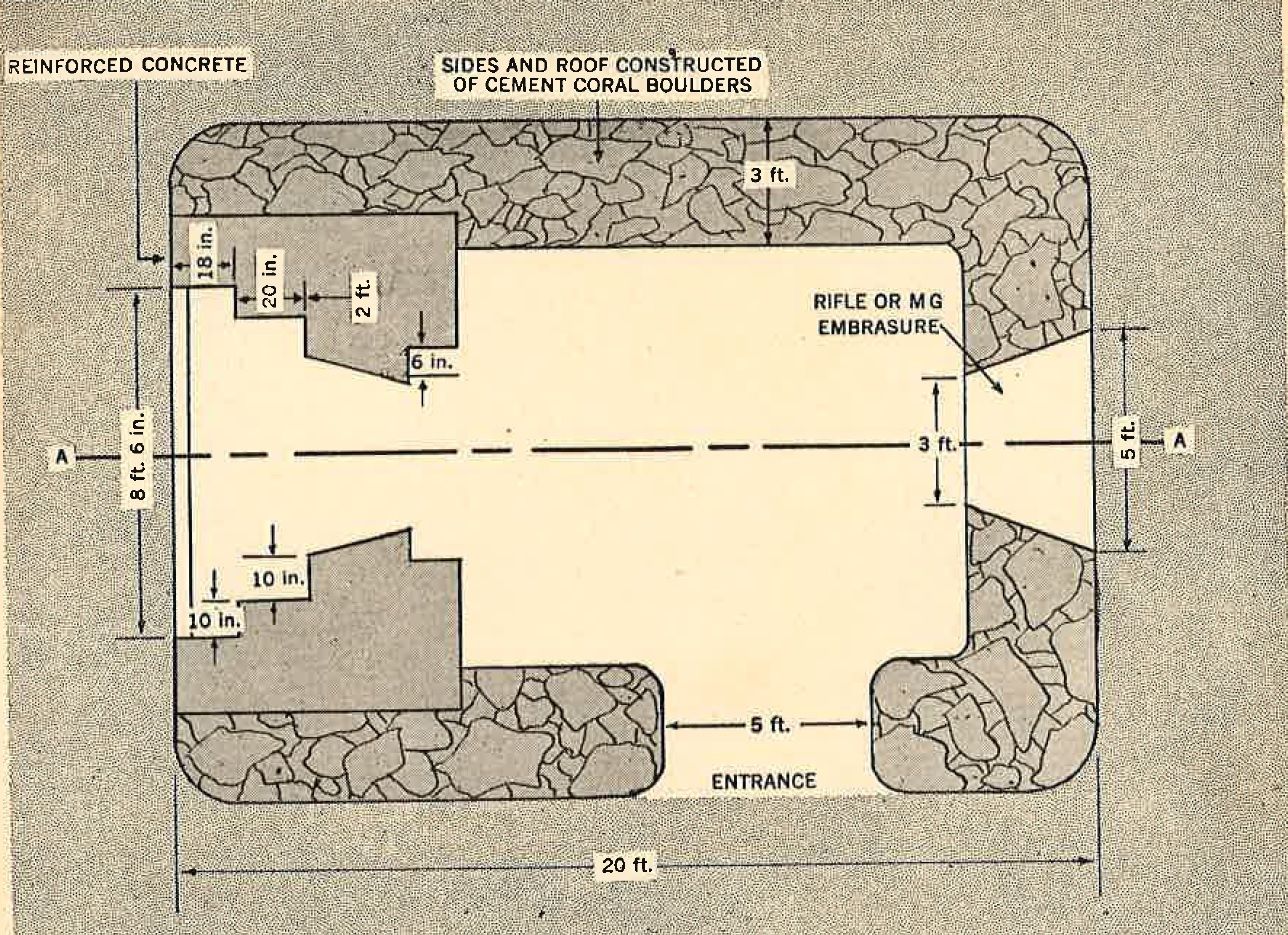 |
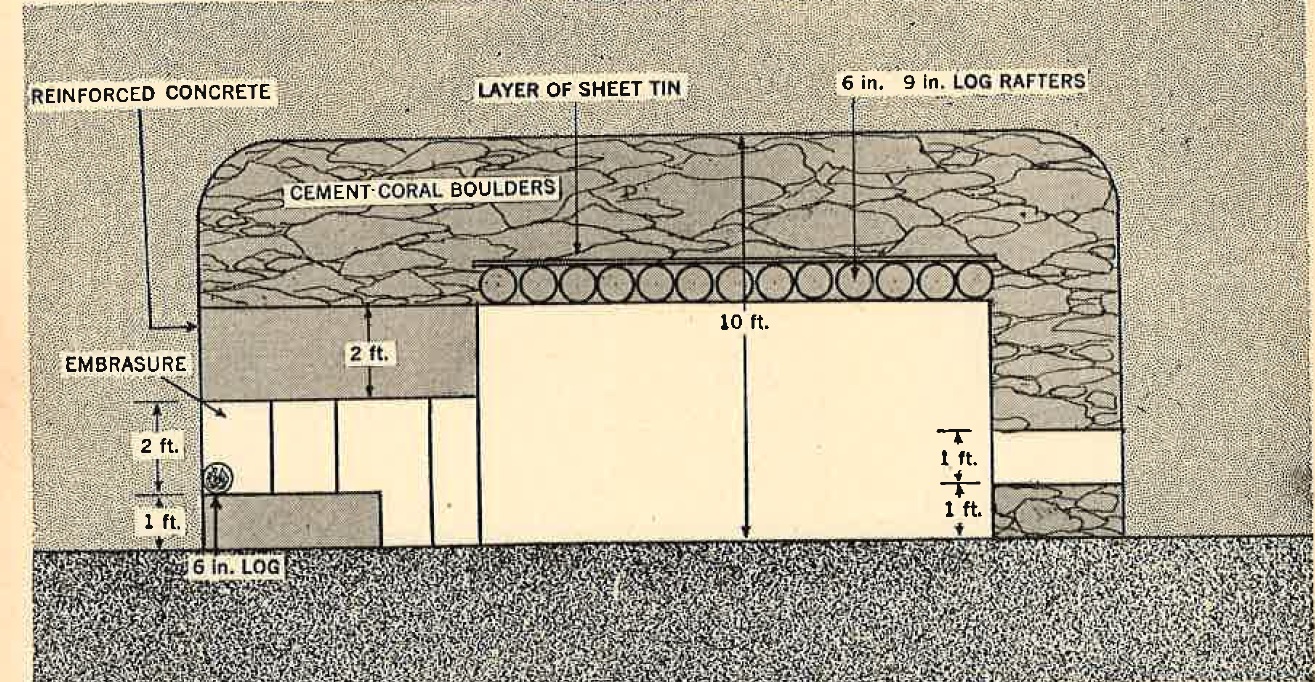 |
Prorotypes of this building were found at Kwajalein, Saipan, Tinian, and Peleliu. Reinforced concrete structures of teh type shown in Figure 35 are used to house gasoline and oil in drums. Similar types are used as power plants and magazines for large guns. They are always isolated from other construction in order to minimize the possibility of damage resulting from explosion.
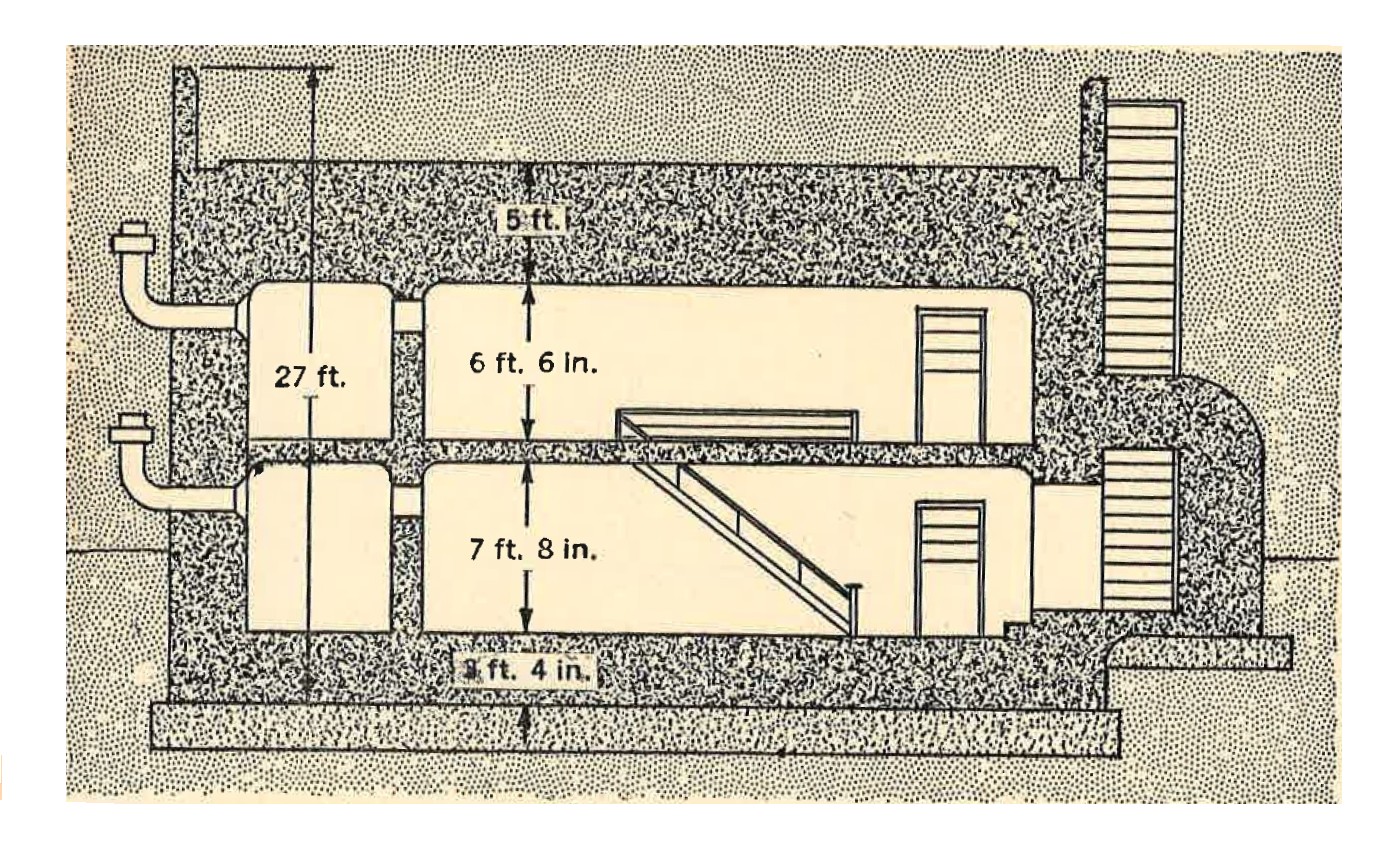 |
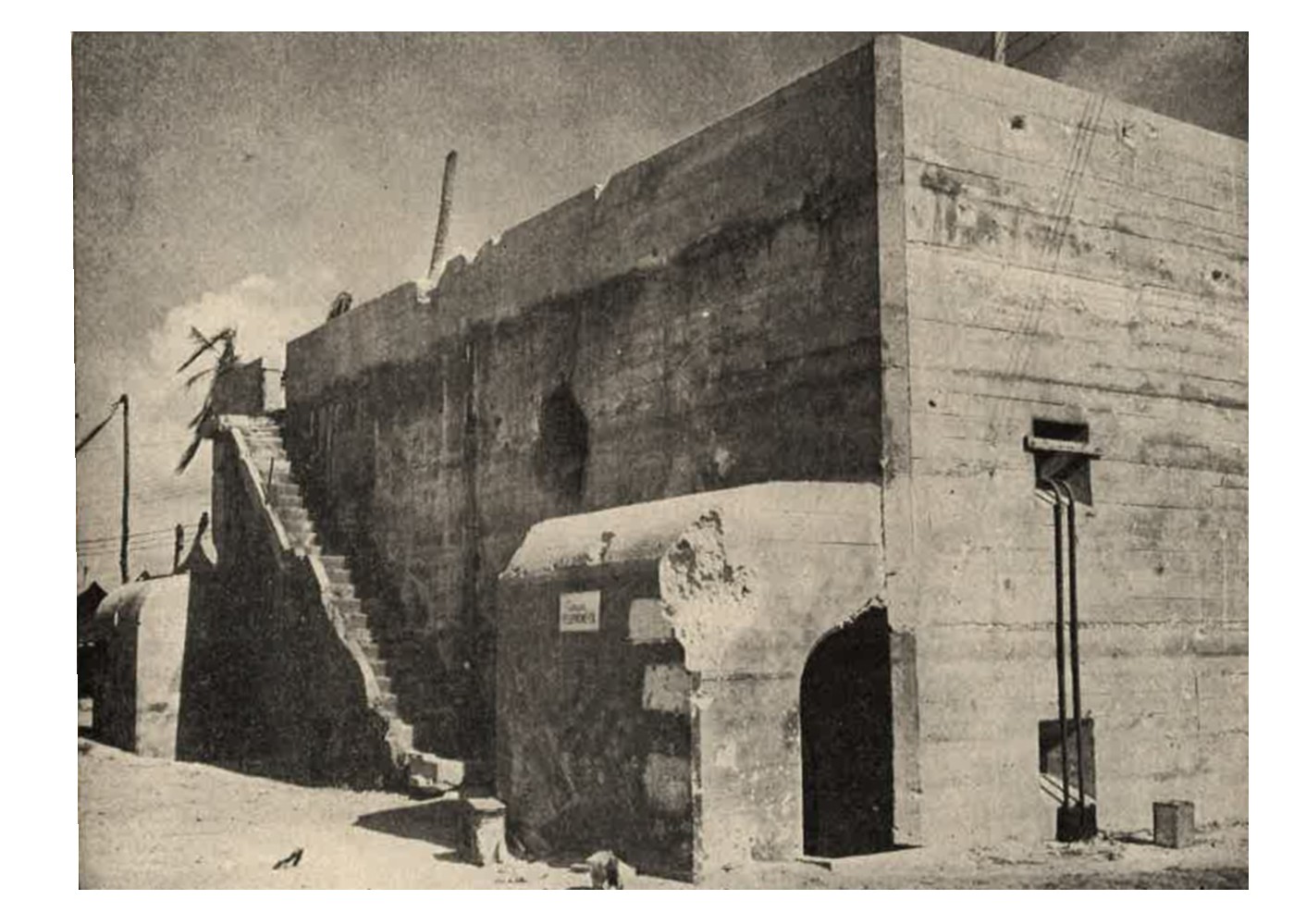 |
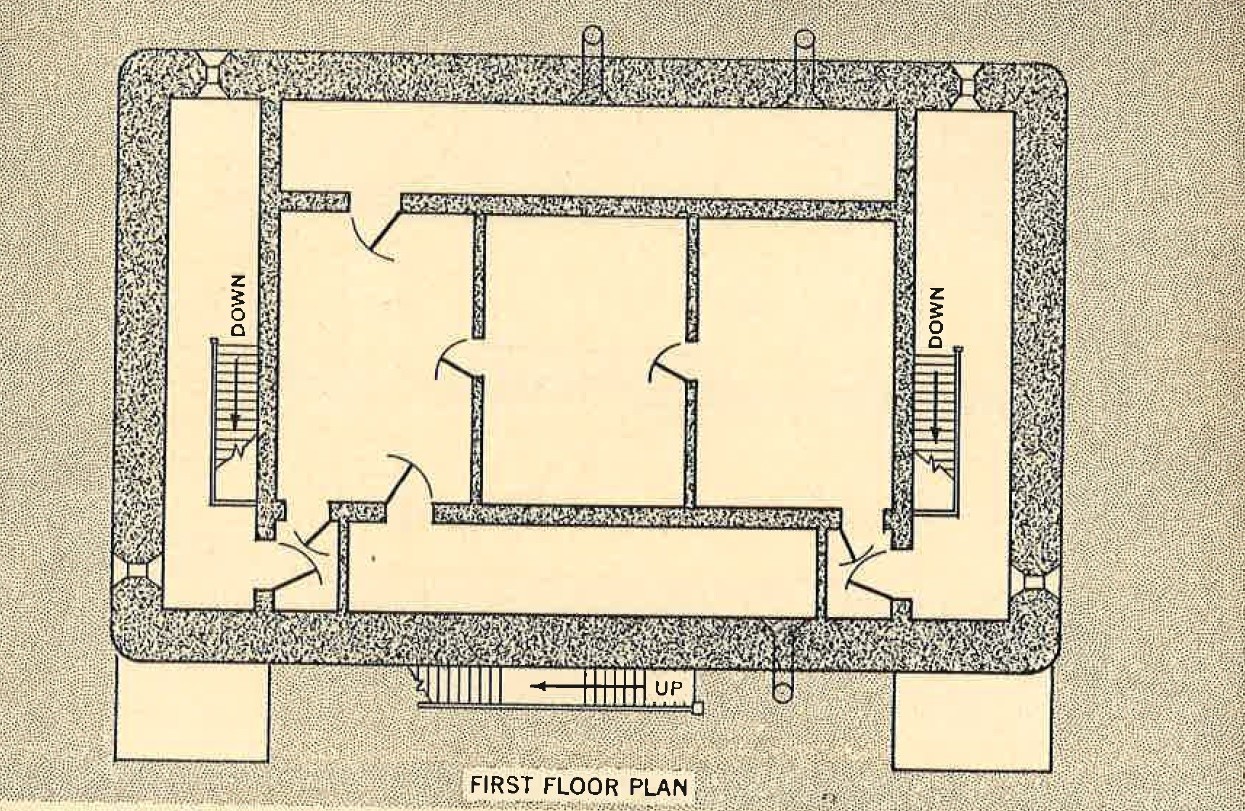 |
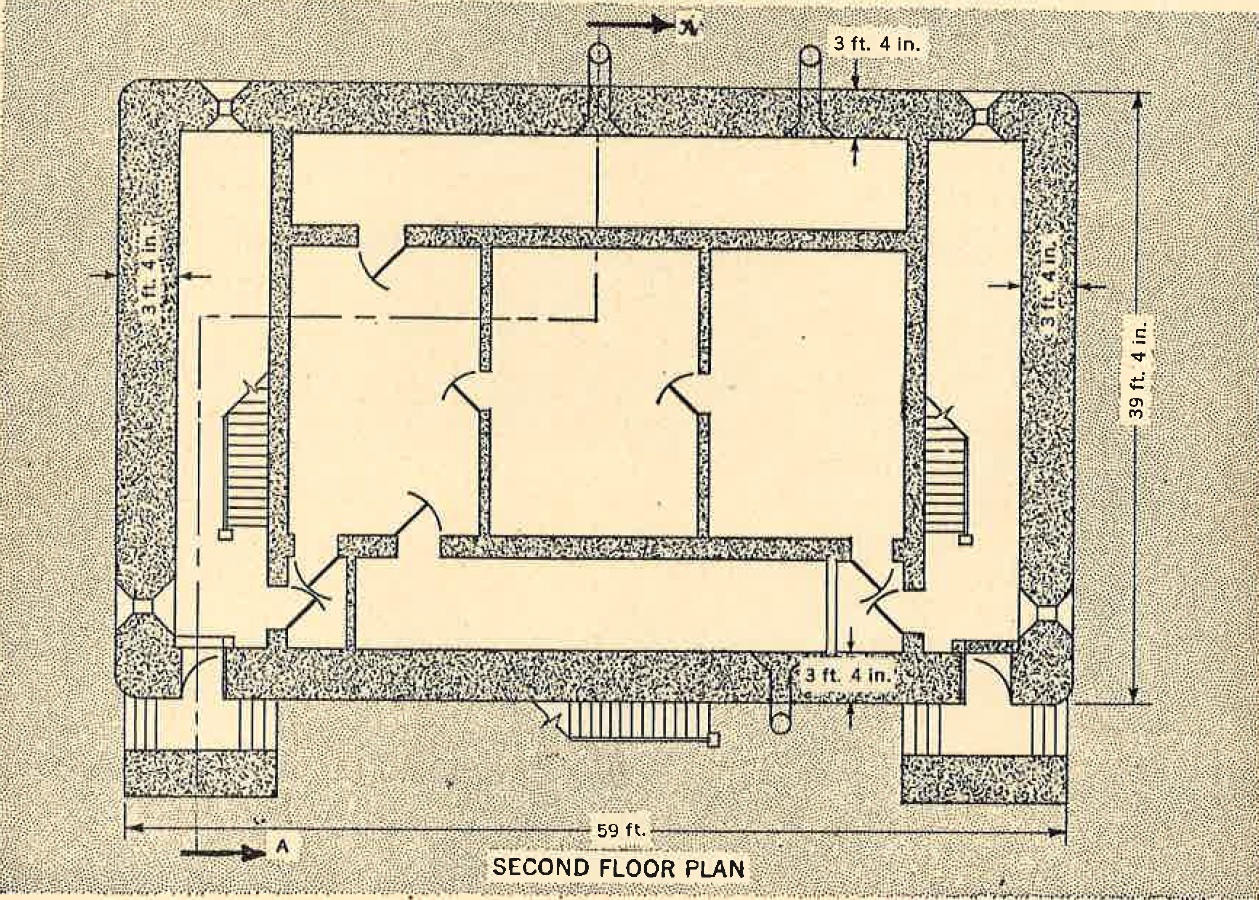 |
d. Open emplacements. Antiaircraft guns, dual purpose weapons, and many of the Japanese coast defense guns are found in open emplacements. Materials of construction vary according to the permanence of teh position and the time and materials available. Larger guns, because of their weight, are usually emplaced on concrete or metal bases.
The general shape of most of the emplacements is a circle or semicircle, varying in diameter accordng to the size of the gun. Many of the smaller guns have square, octagonal, or elliptical emplacements.
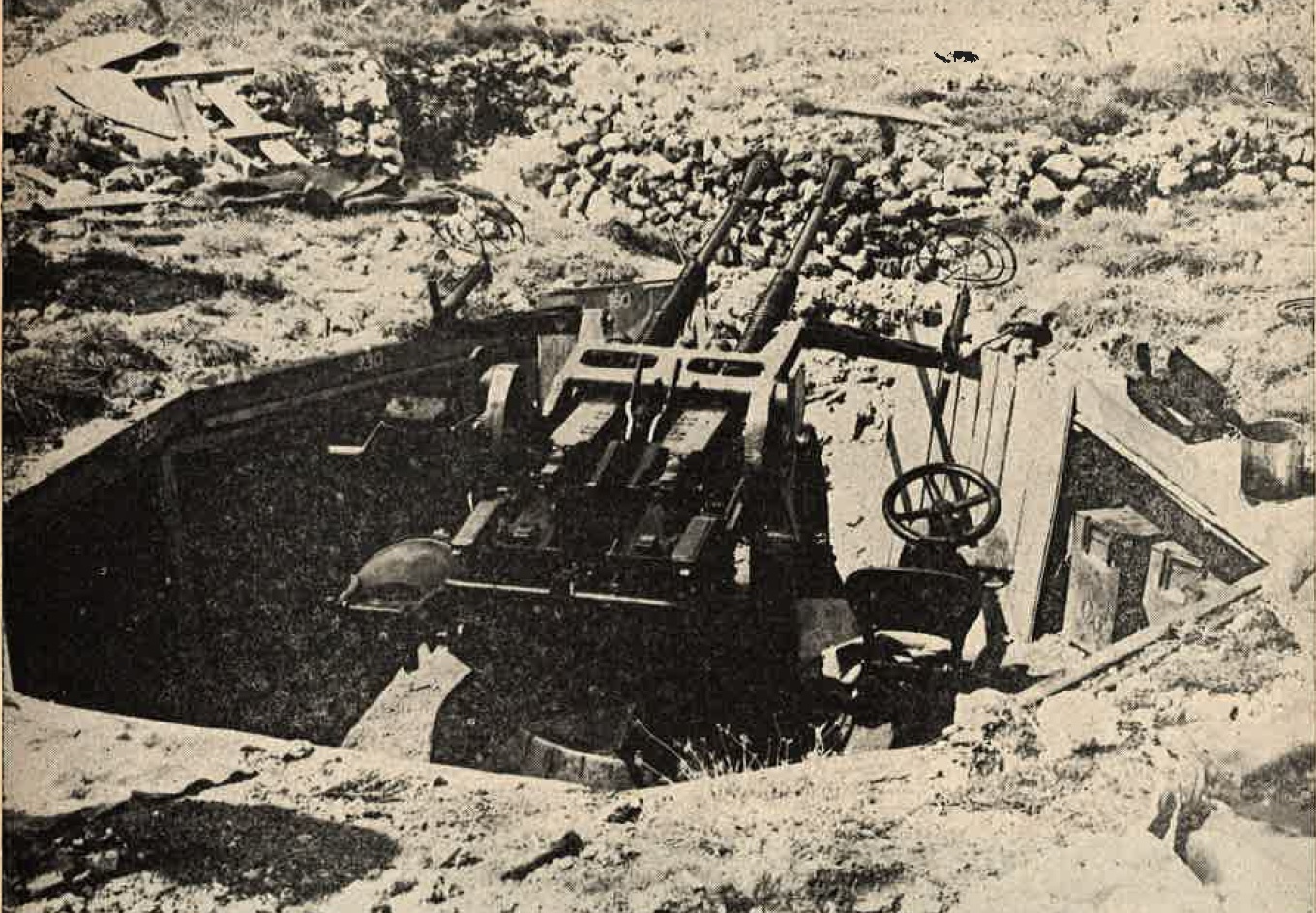
Figure 37. Emplacement for twin mount 25-mm automatic antiaircraft gun. |
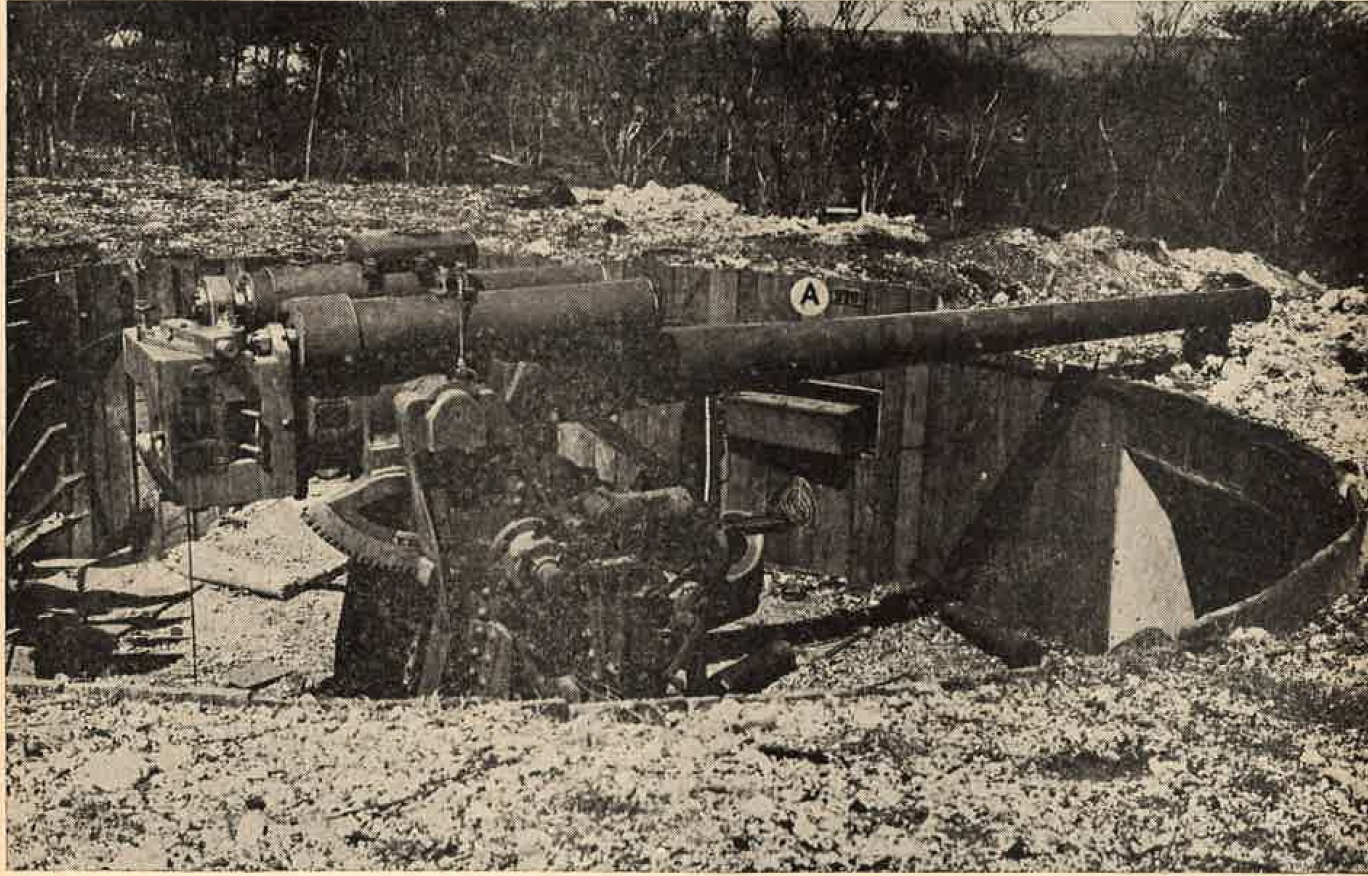
Figure 38. 120-mm dual purpose gun emplacement. |
The 13.2-mm, 20-mm, 25-mm, and 40-mm automatic antiaircraft weapons have been found in both single and double walled emplacements usually consisting of earth, or in wooden-and-earth revetments. Heavy antiaircraft, dual purpose, and coast defense guns may be found in either log-and-earth or reinforced concrete emplacements.
Sandbags and oil drums filled with sand are also used for revetments; sod covering may be added for camouflage purposes.
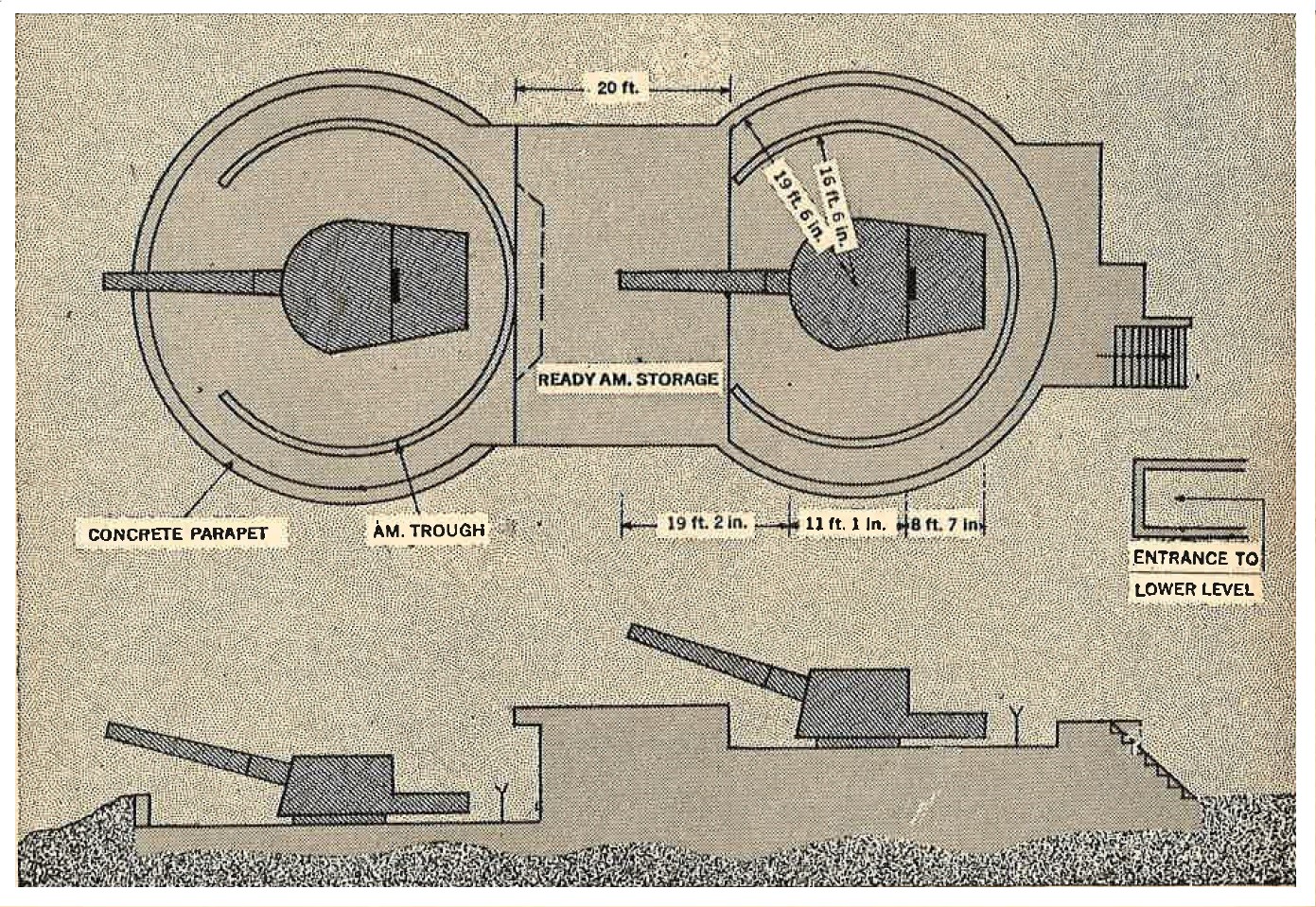
Figure 41. Details of emplacement for 200-mm coast defense gun. |
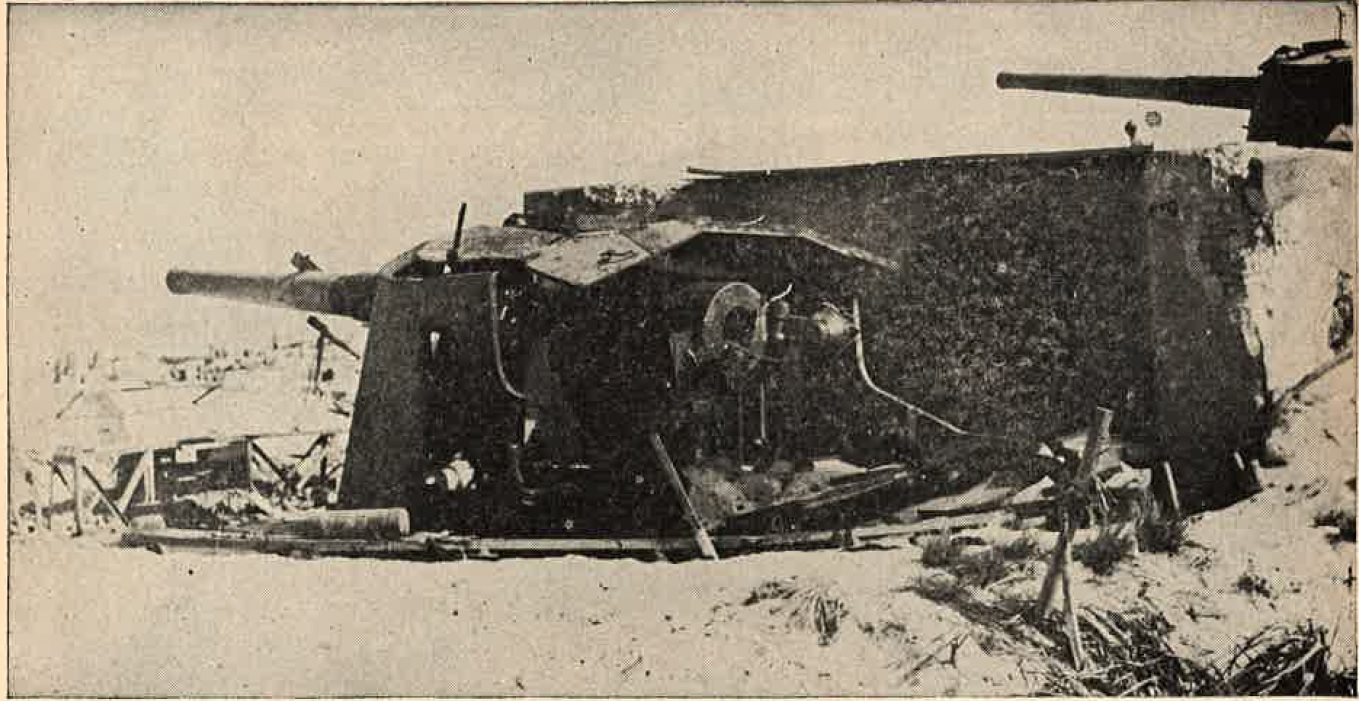
Figure 40. Emplacement for 200-mm coast defense gun. |
COMPARISON CHART OF SIZE AND SHAPE OF GUN REVETMENTS
| Num | Caliber (mm) | Type | Revetment size (inner diameter) (feet) |
Revetment shape |
| 1 | 13.2 | AA | 7-10 (Single) 9-12 (Twin) |
Round (sometimes double wall), square, octagonal, or elliptical. Covered emplacements when used for ground fire. |
| 2 | 20 | AA, AT | 10-16 | Round or square. Covered emplacements for AT. |
| 3 | 25 | AA | 8-10 (Single) 10-16 (Twin) 10-16 (Triple) |
Round. May be single or double wall. |
| 4 | 40 | AA | 10-16 | Round. May ve single or double wall. |
| 5 | 75 | AA | 18-22 | Round or pentagonal. |
| 6 | 76.2 | AA, CD | 14-20 | Round or pentagonal. Square covered emplacements for CD |
| 7 | 105 | AA | 23-25 | Round. |
| 8 | 120 | AA, CD | 20-28 | Round. Square covered emplacements for CD. |
| 9 | 127 | AA, CD | 33-38 | Round. |
| 10 | 140 | CD | 34-37 | Round. |
| 11 | 150 | CD | 26-30 | Round. Also covered emplacements. |
| 12 | 200 | CD | 37-39 | Round. |
| 13 | 200 Howitzer | CD | 10-25 | Round. Also rectangular covered emplacements. |
| 14 | 240 | CD | ? | Semicircular. |

4. CAVES.
was found at Angaur where the fortifications consisted of a series of connected compartments extending ro a depth of 50 or 60 feet underground. The compartments, each about 10 feet square, were staggered and constructed on successive levels, somewhat like a staircase.
Flame throwers and demolition charges neutrakized the upper chambers, but had no efect on the lower levels. They were finally reduced by pouring gasoline into the entrance and igniting it.
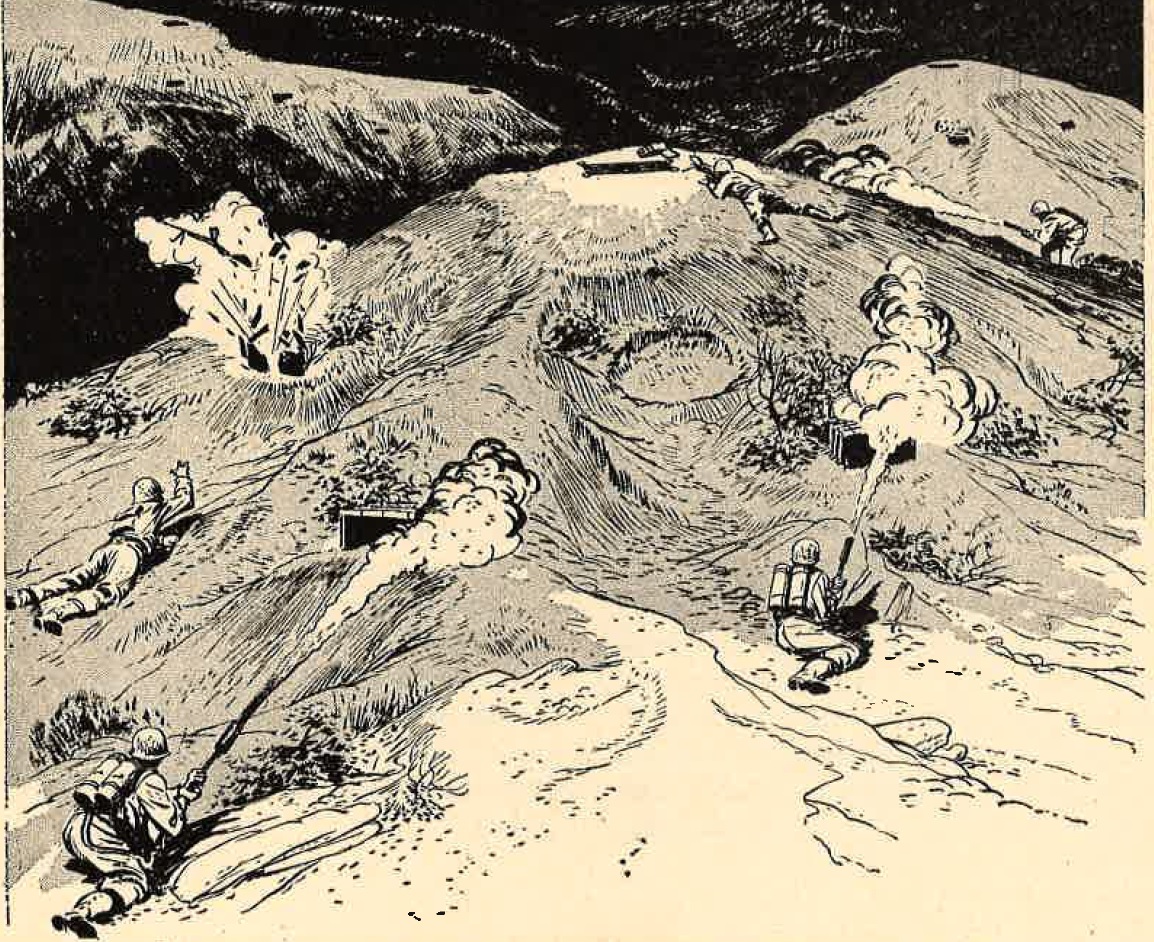 |
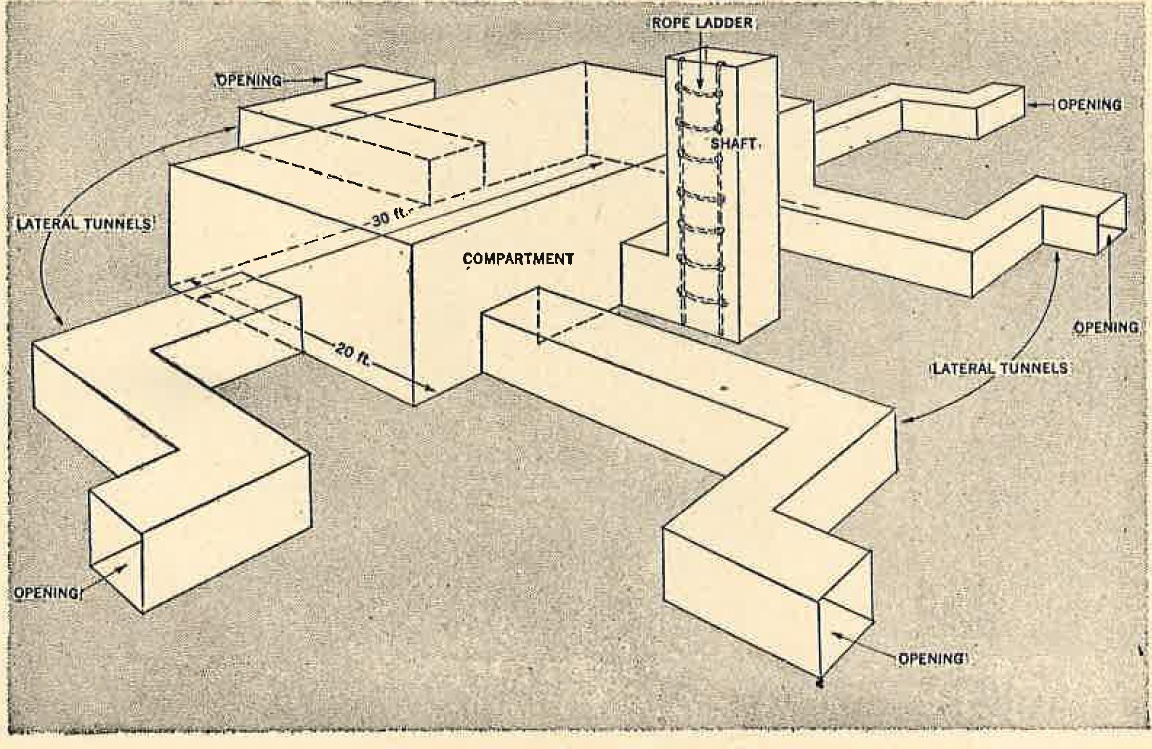 |
b. description of caves.












